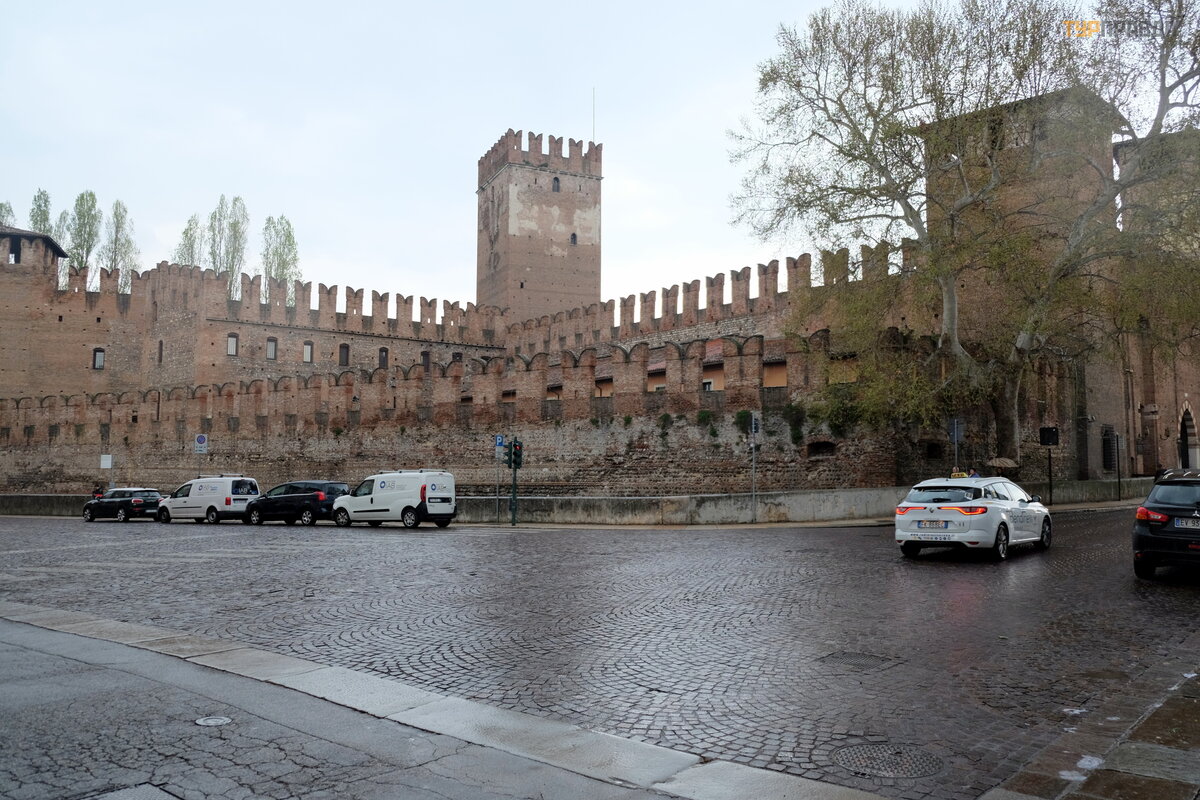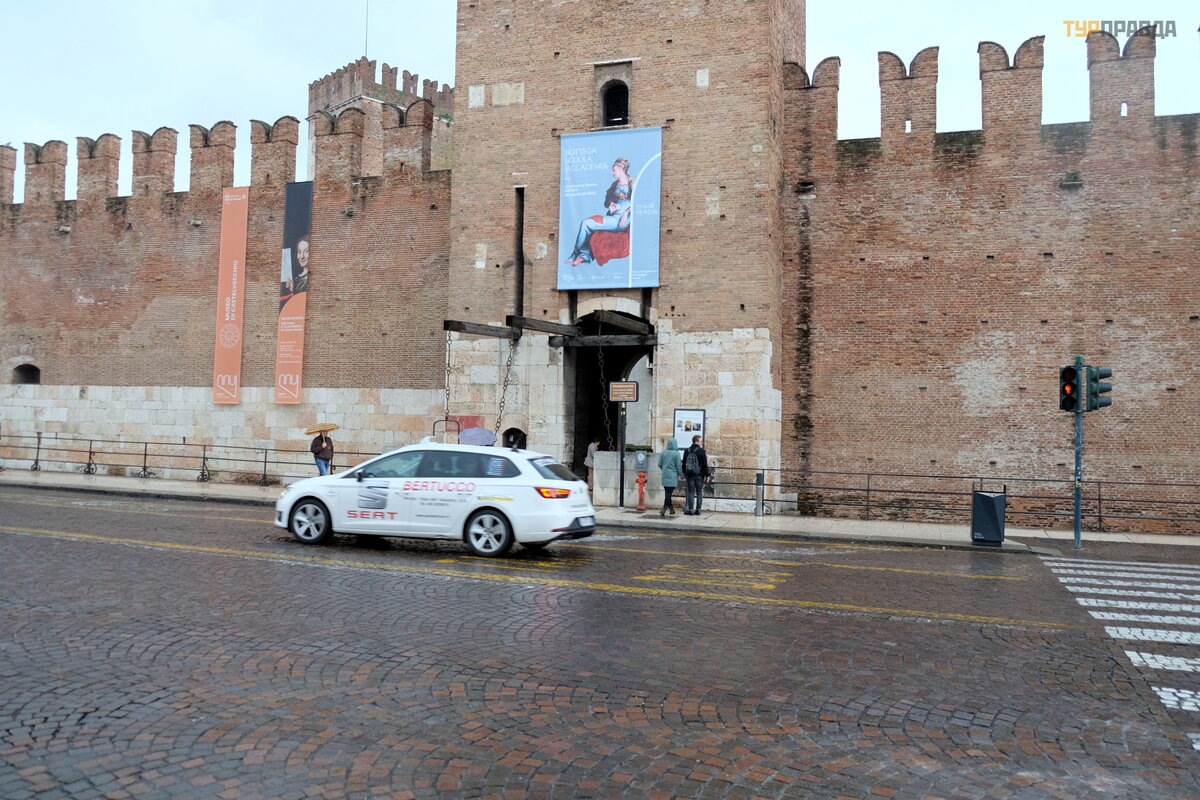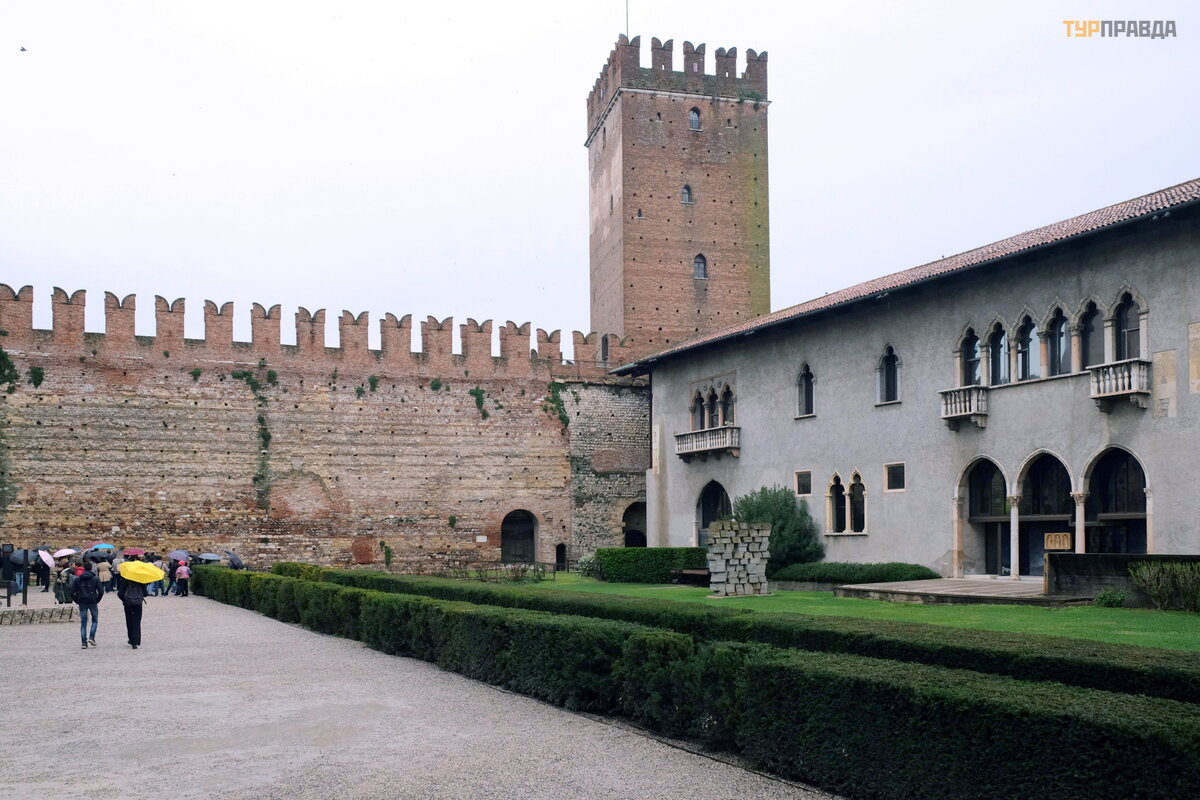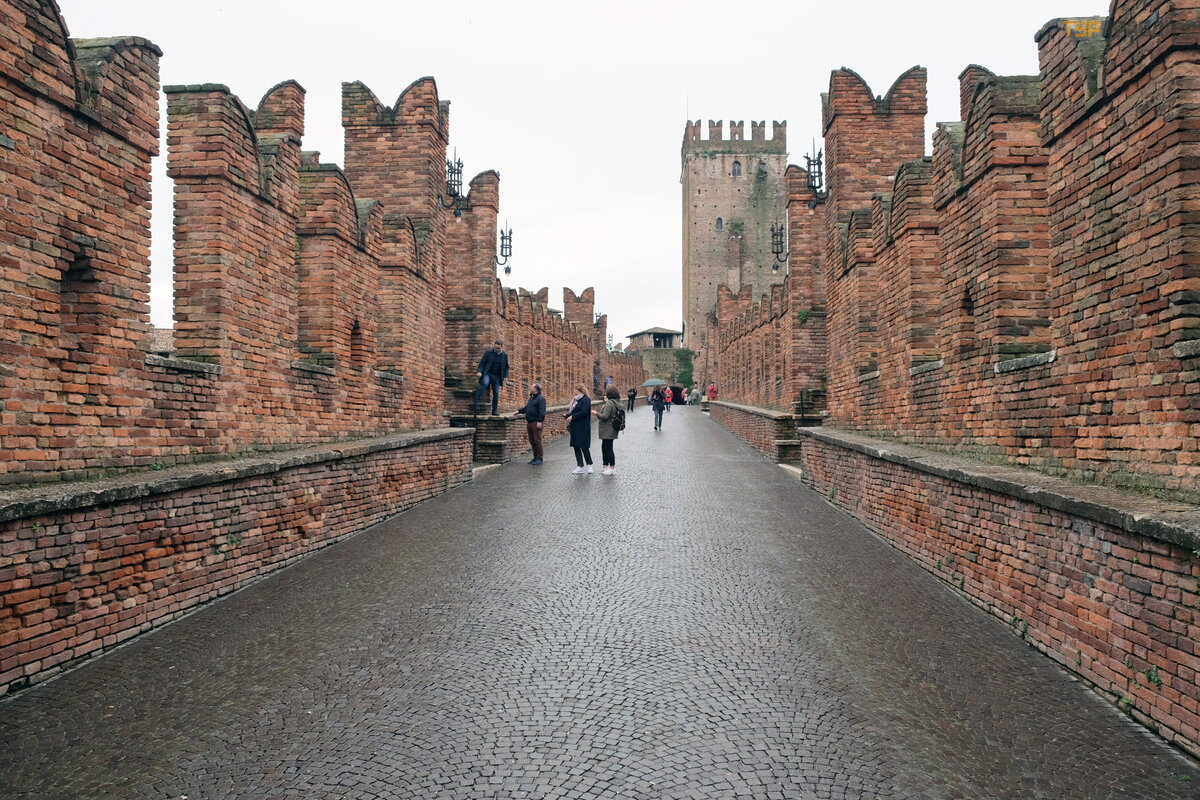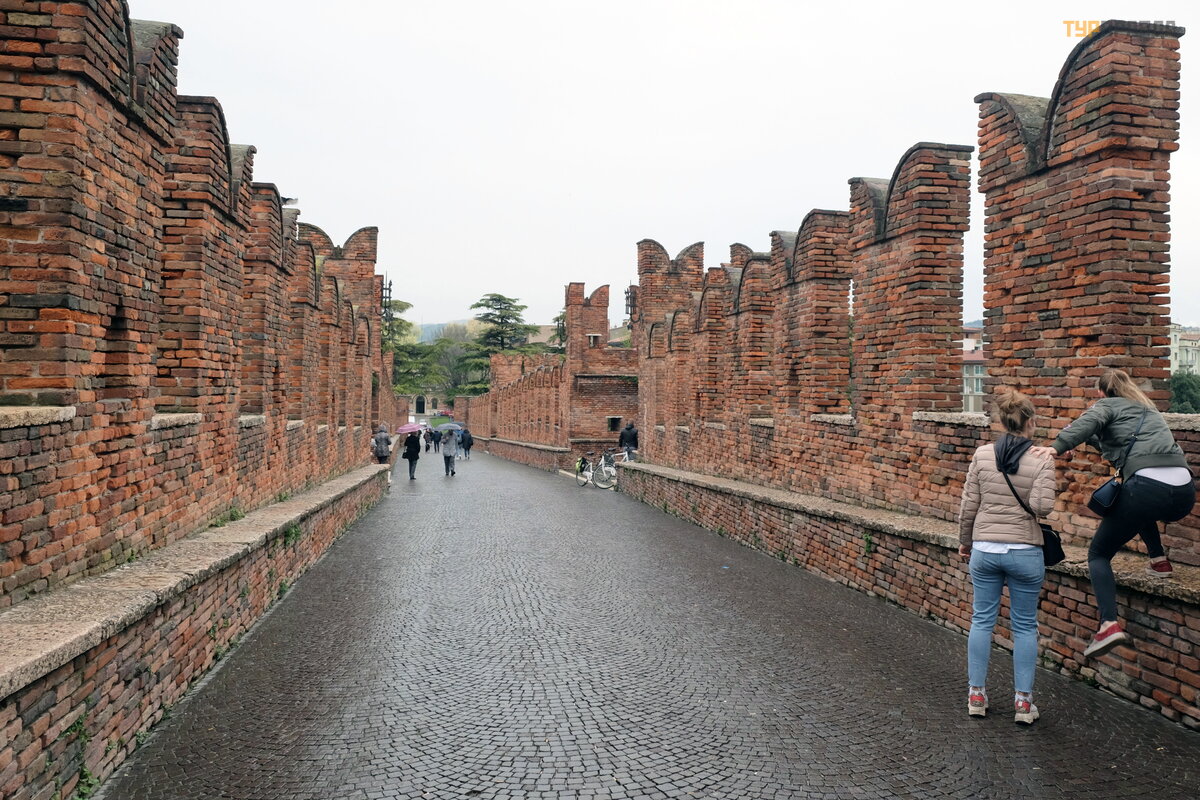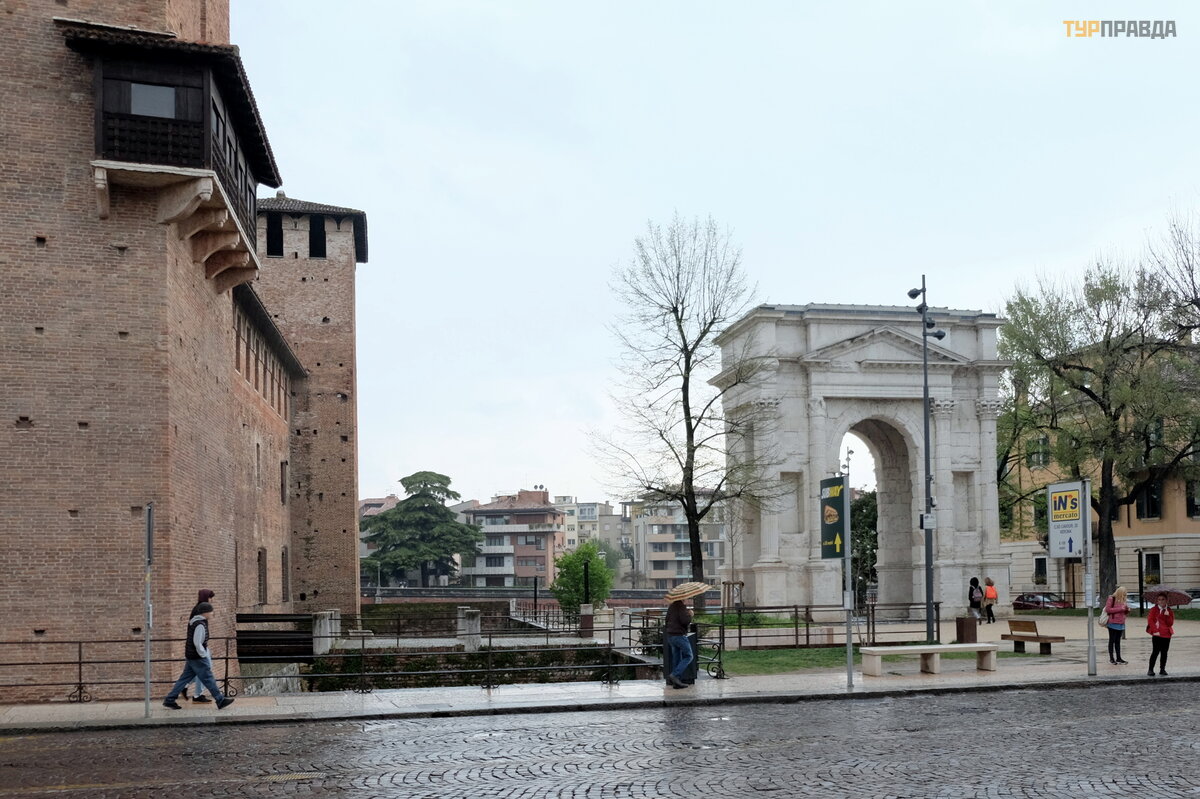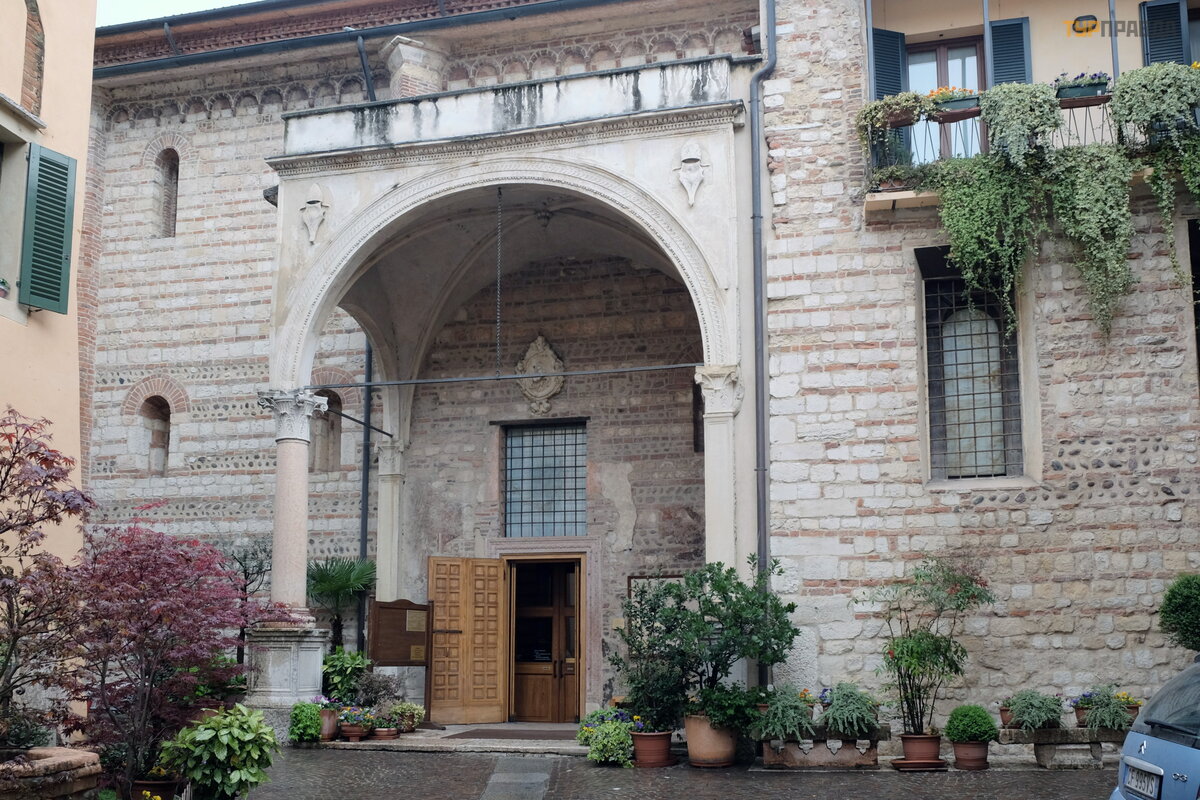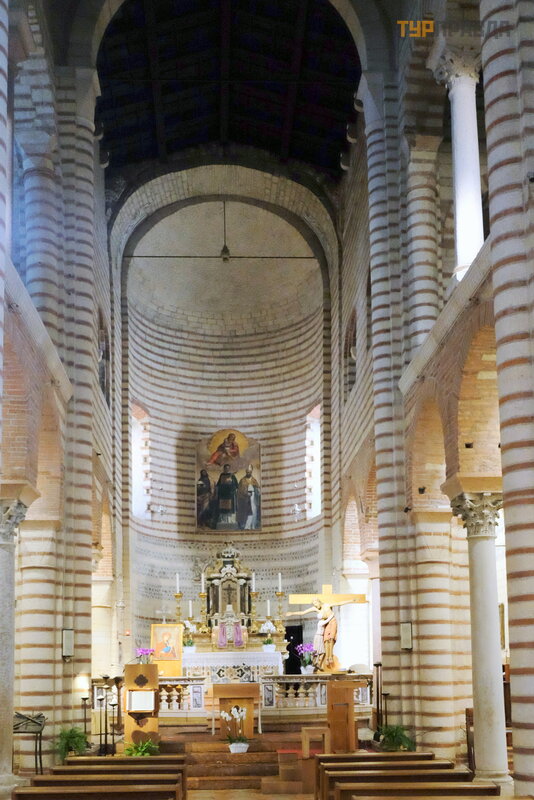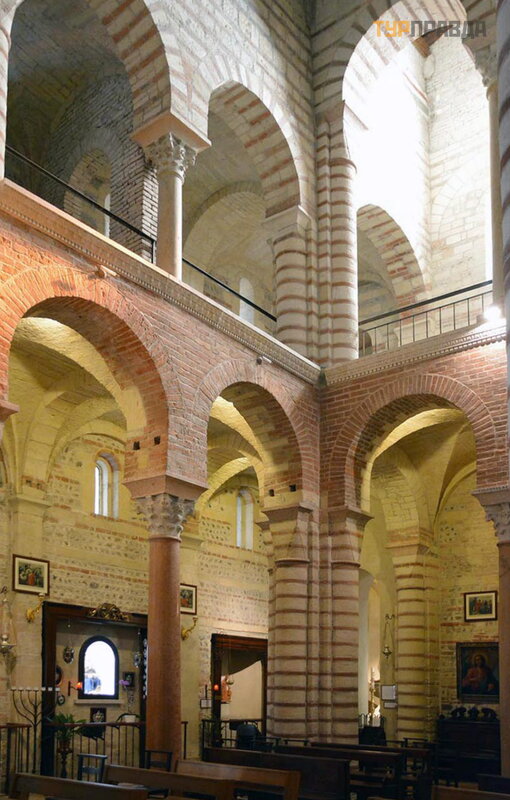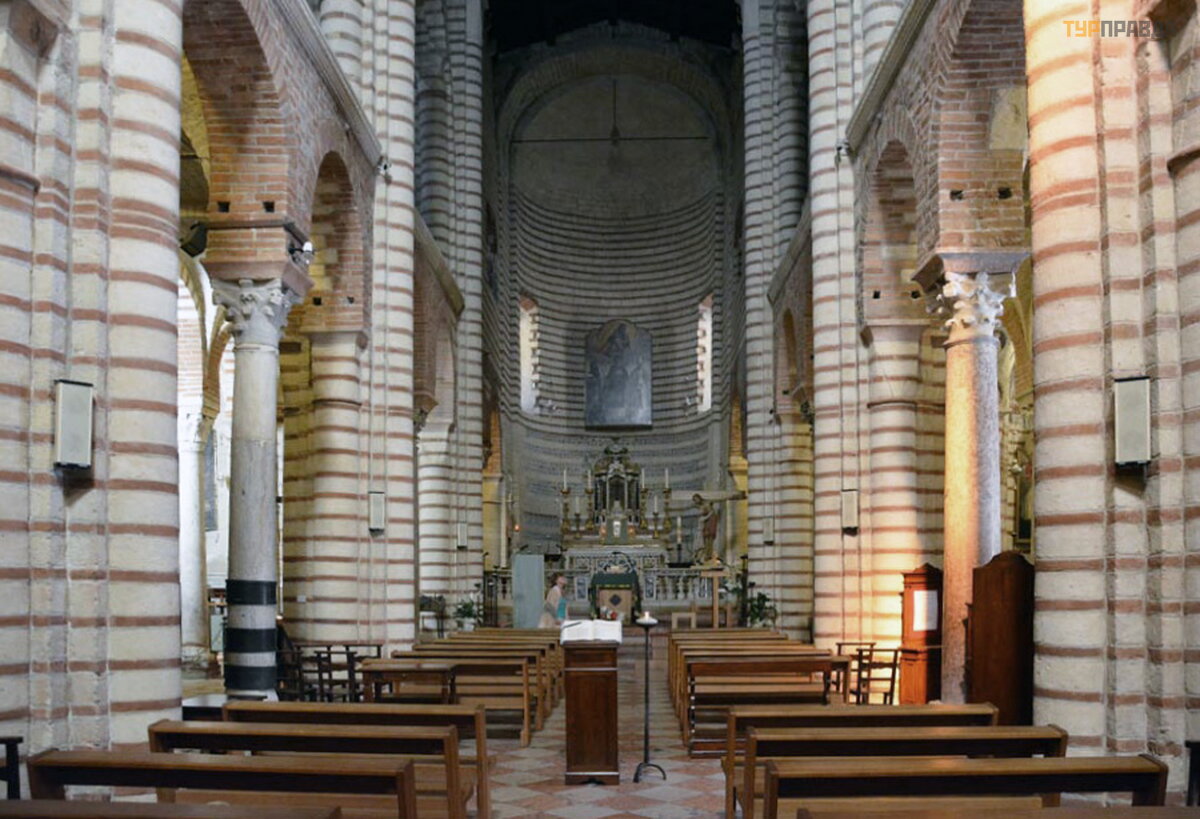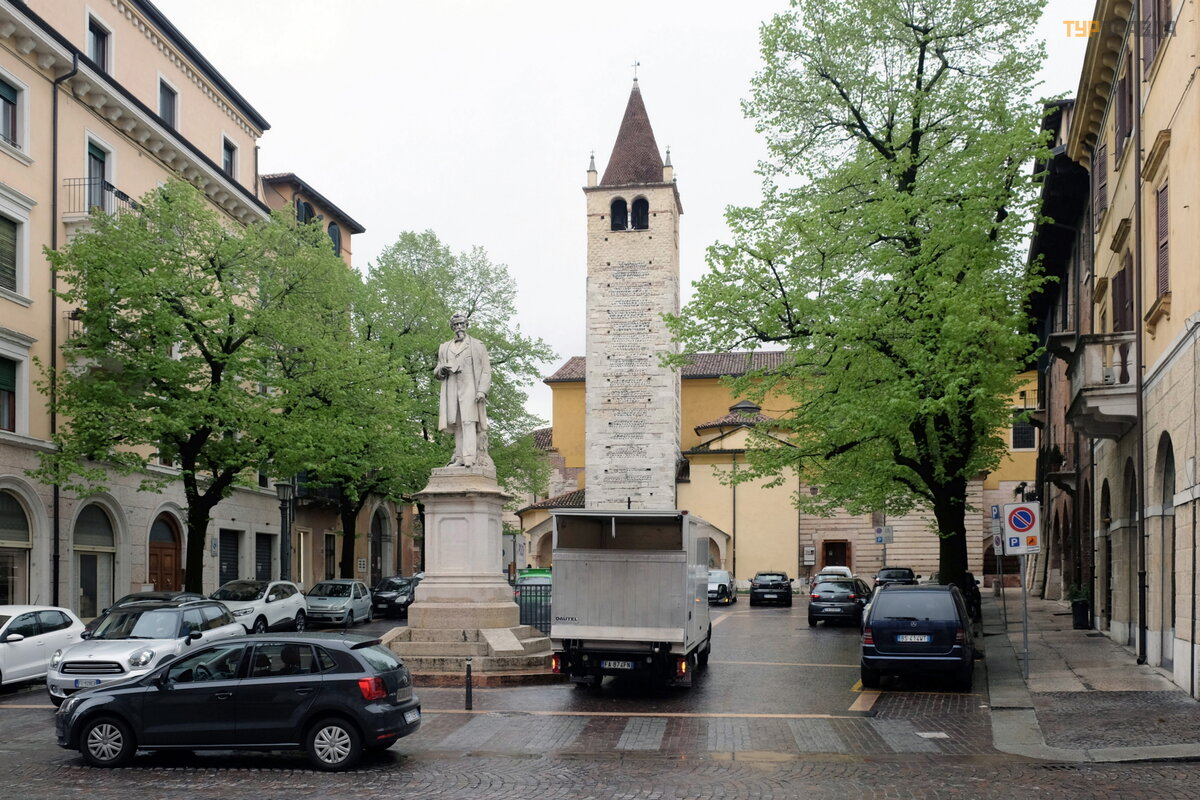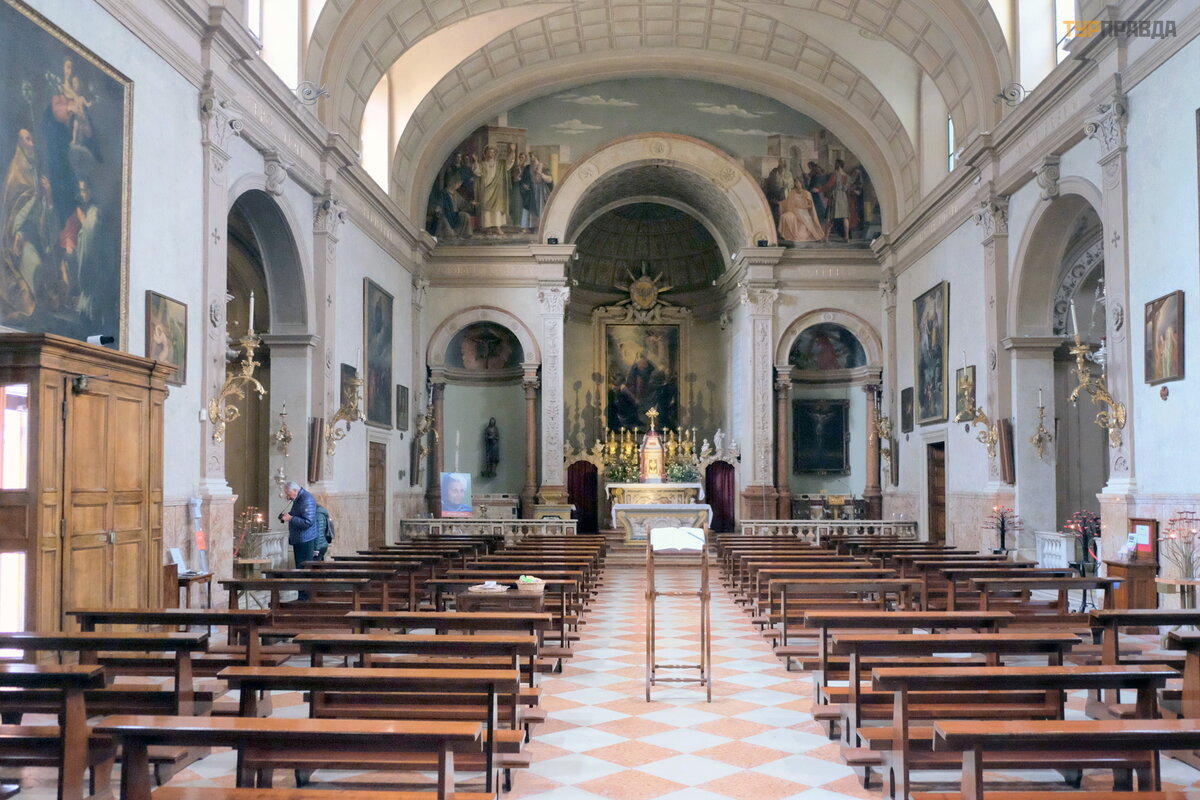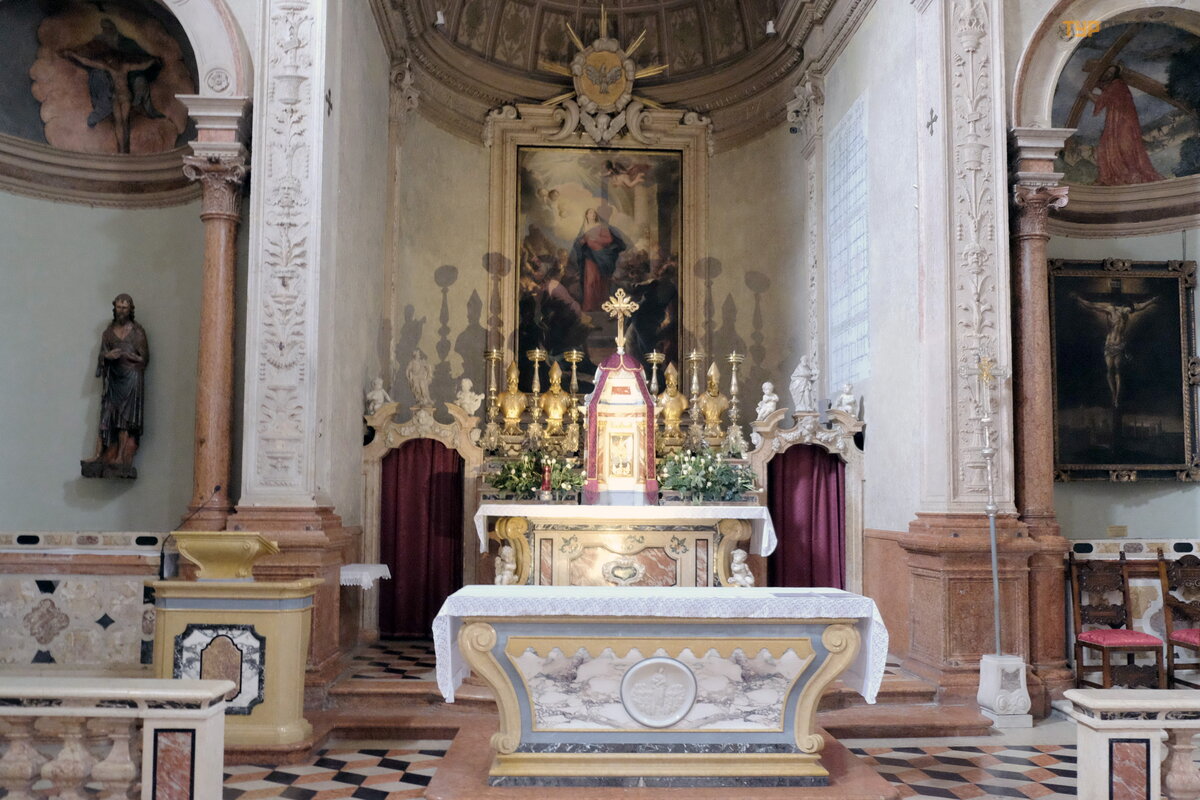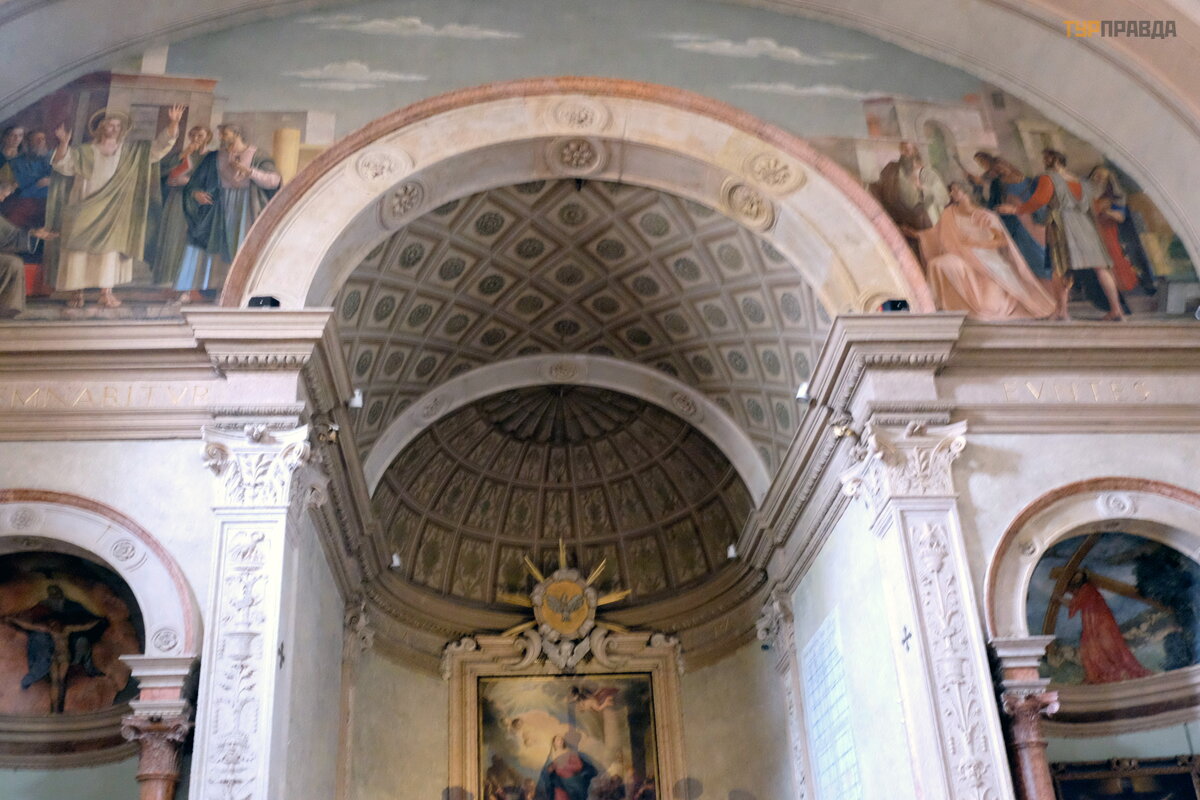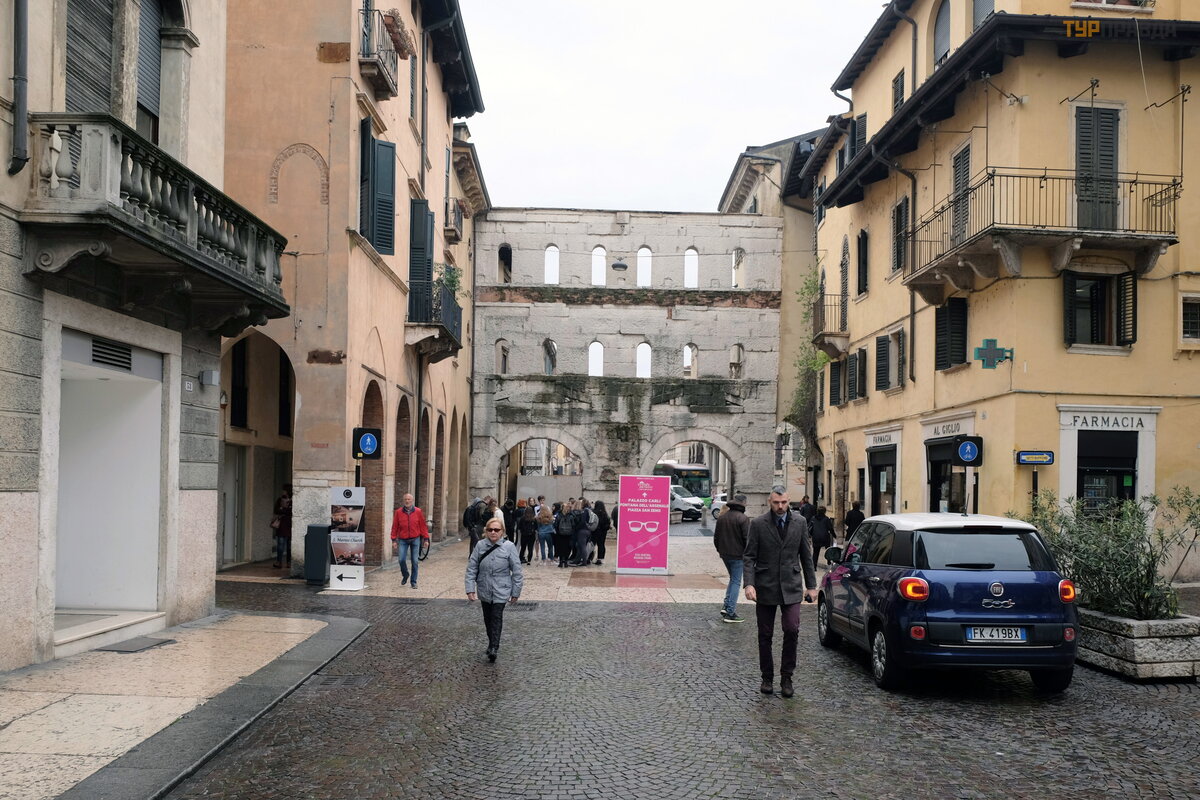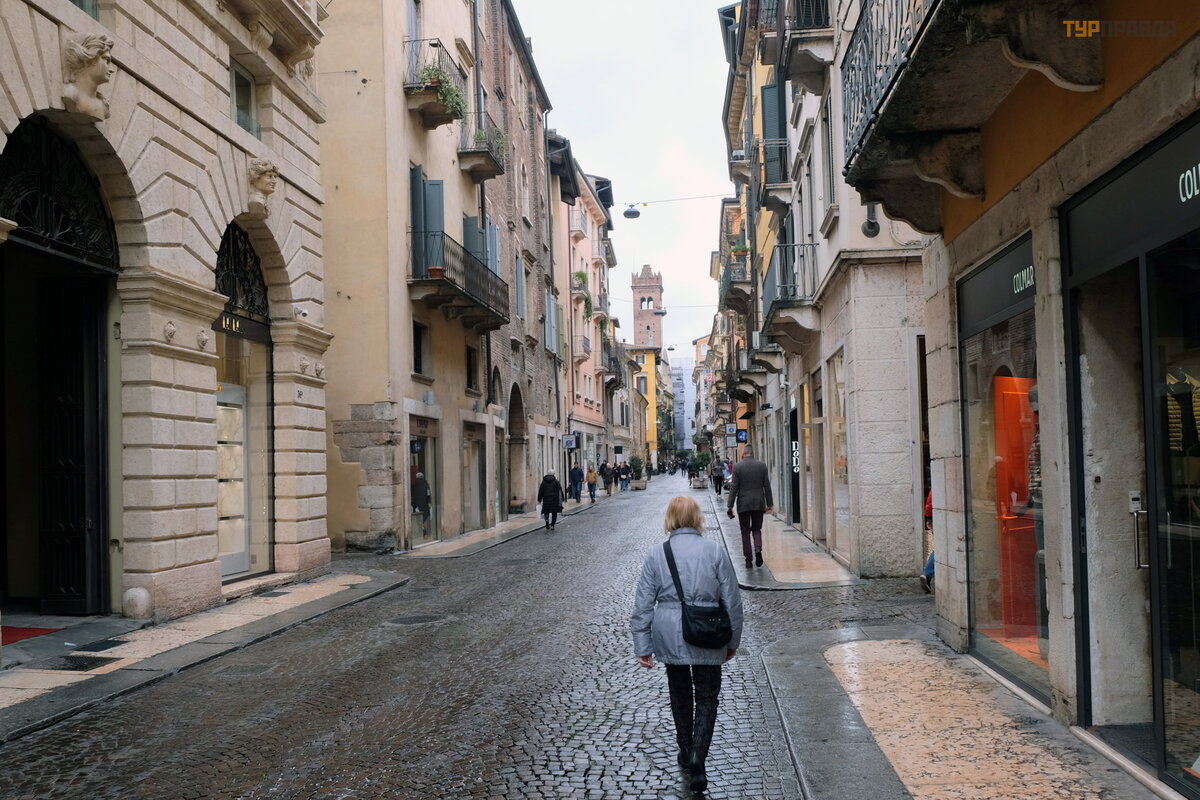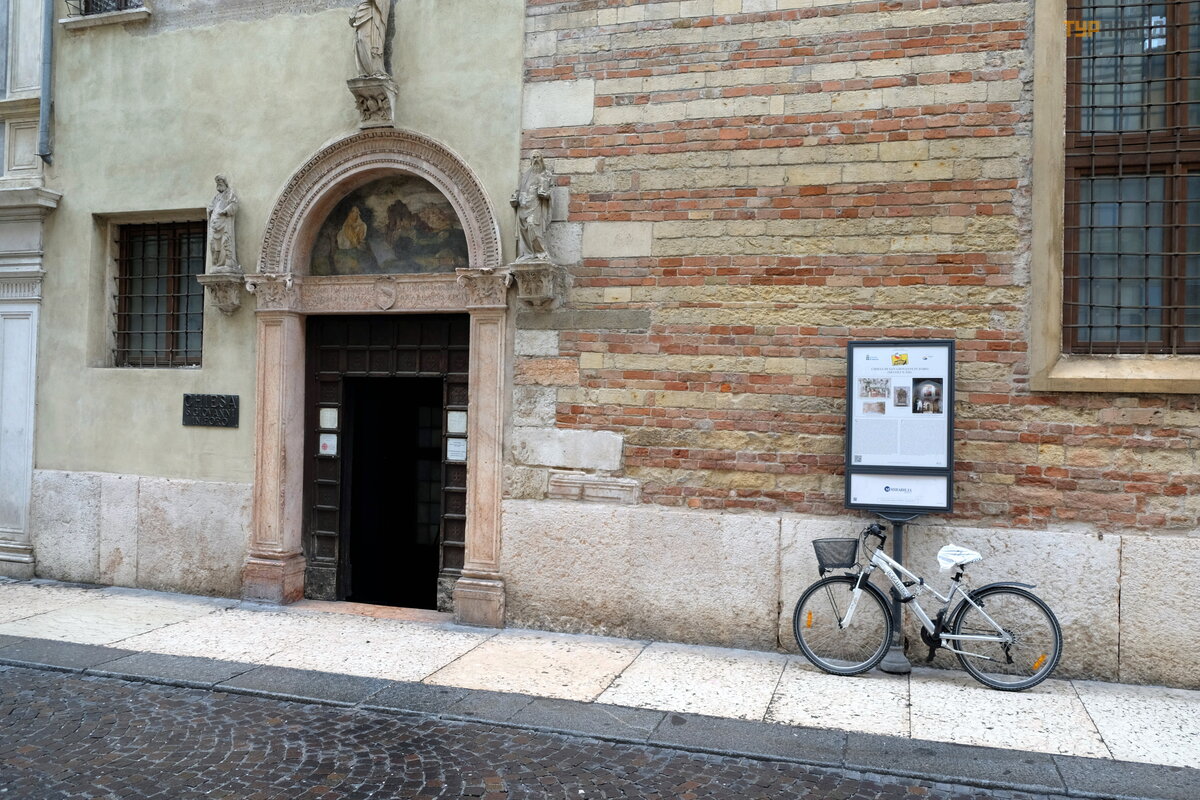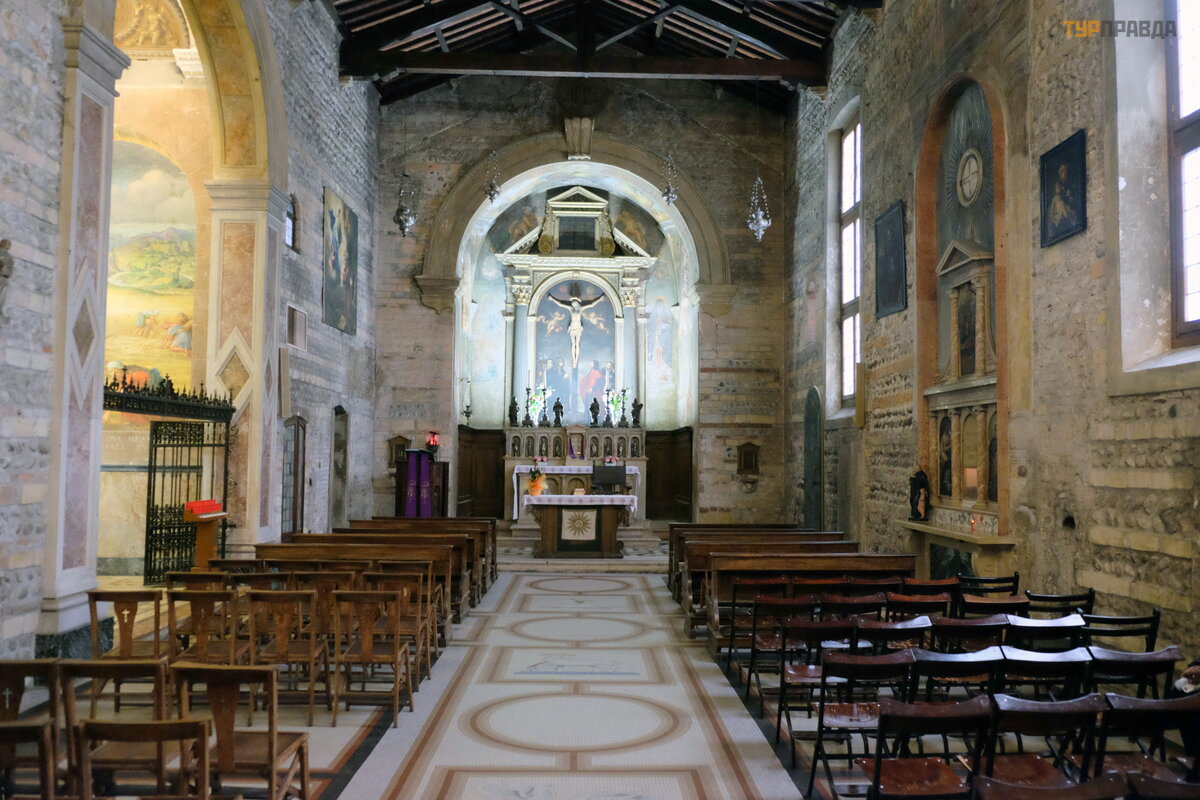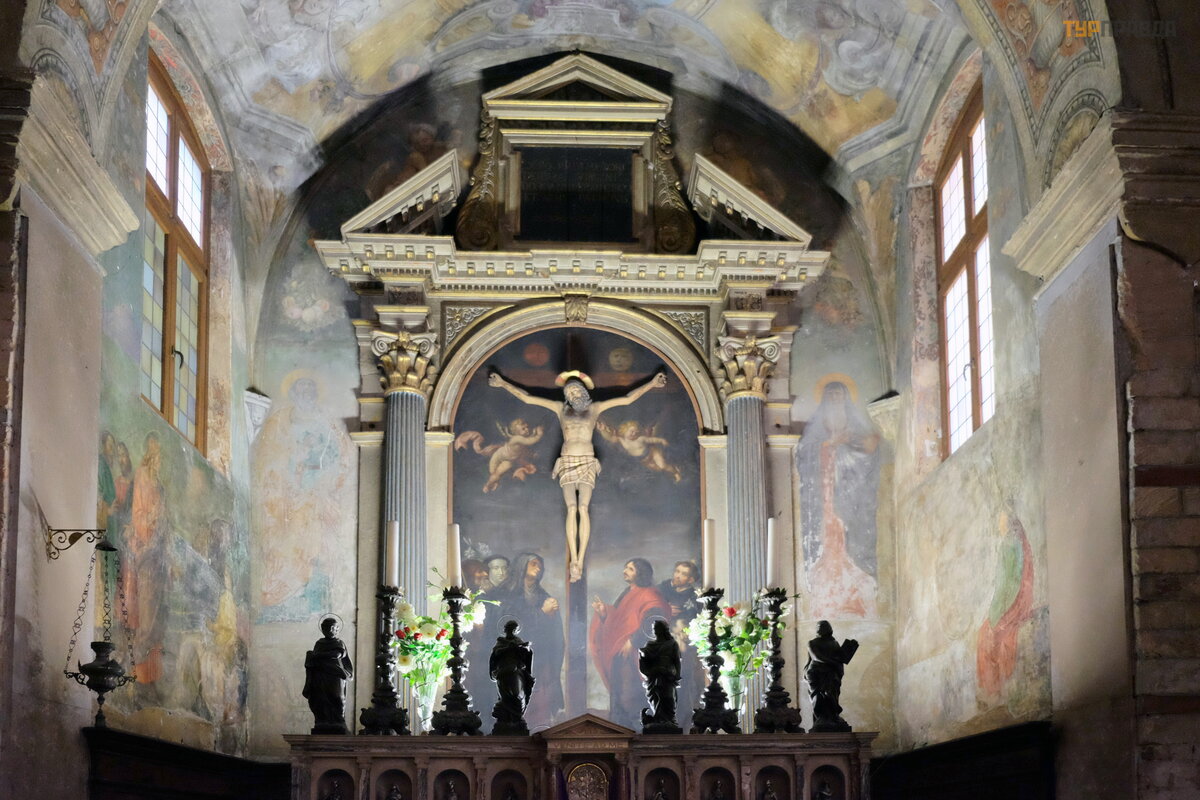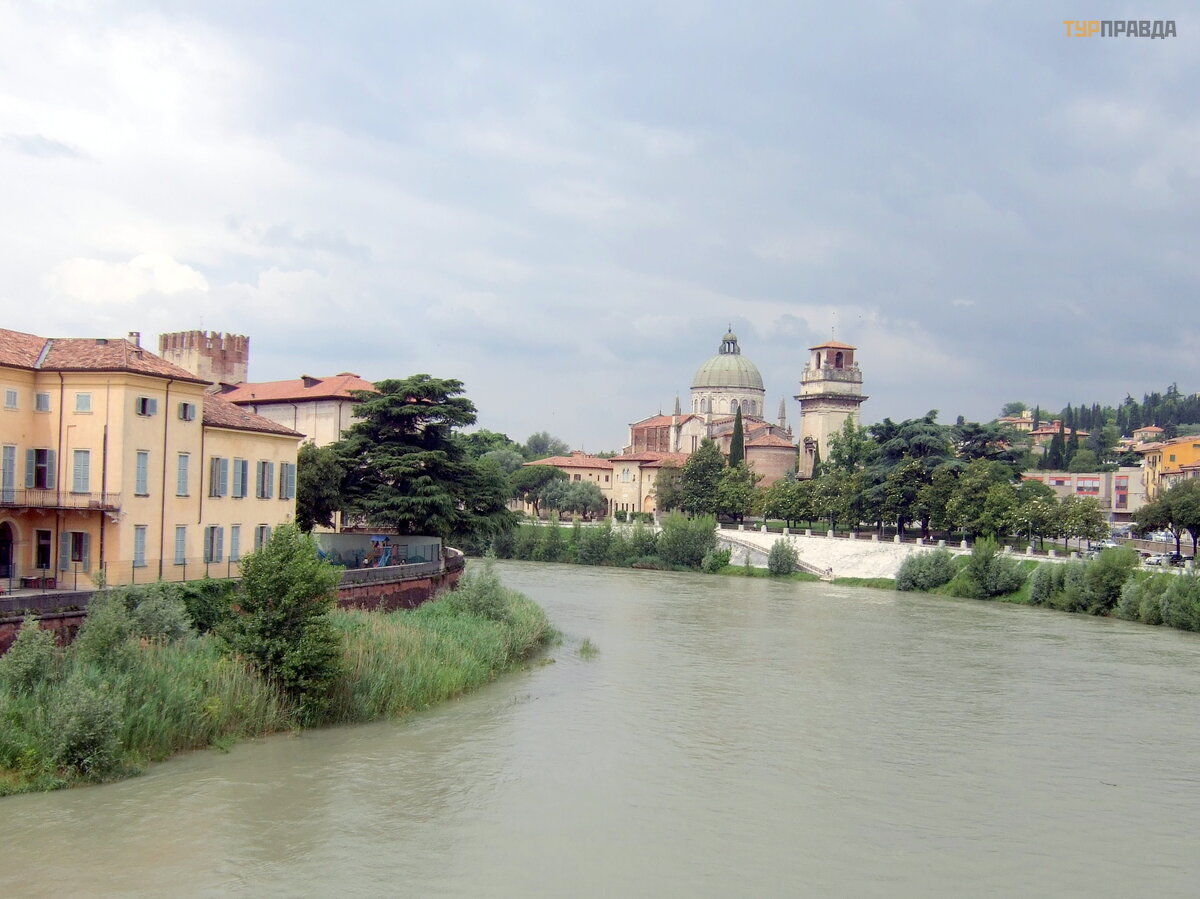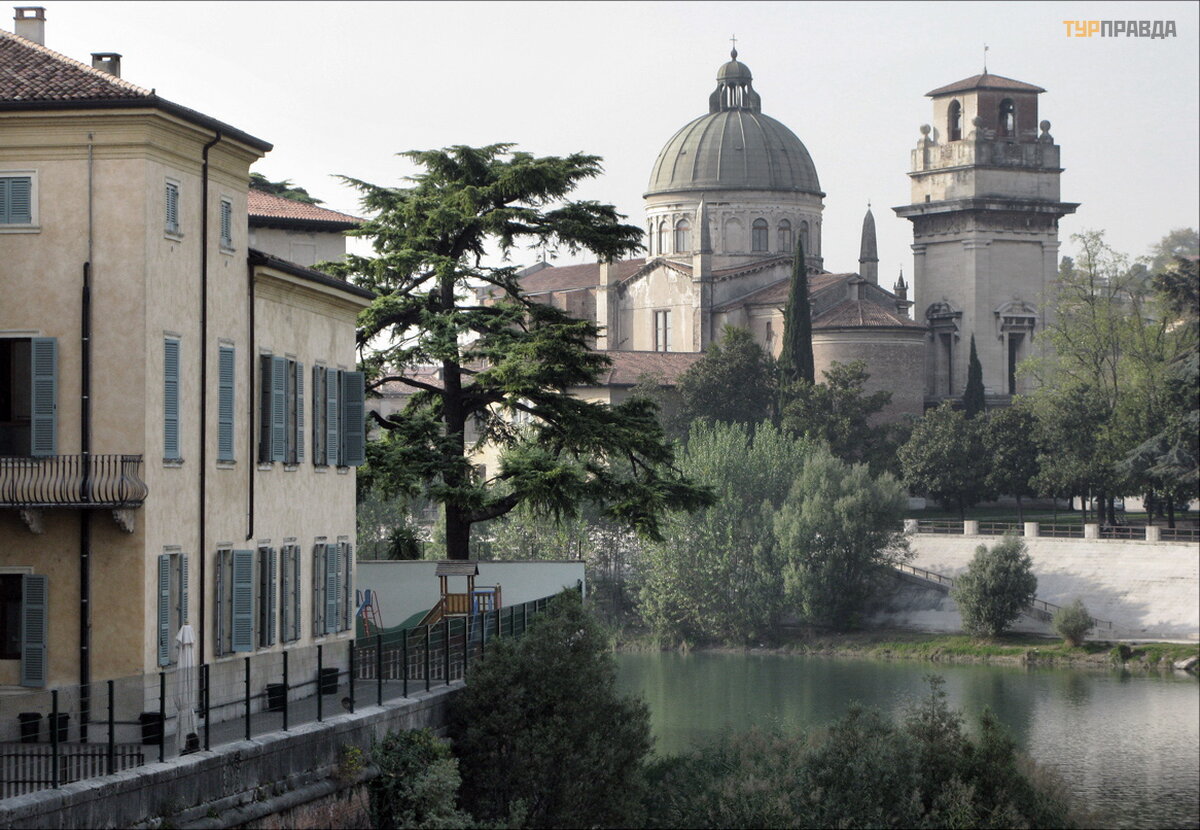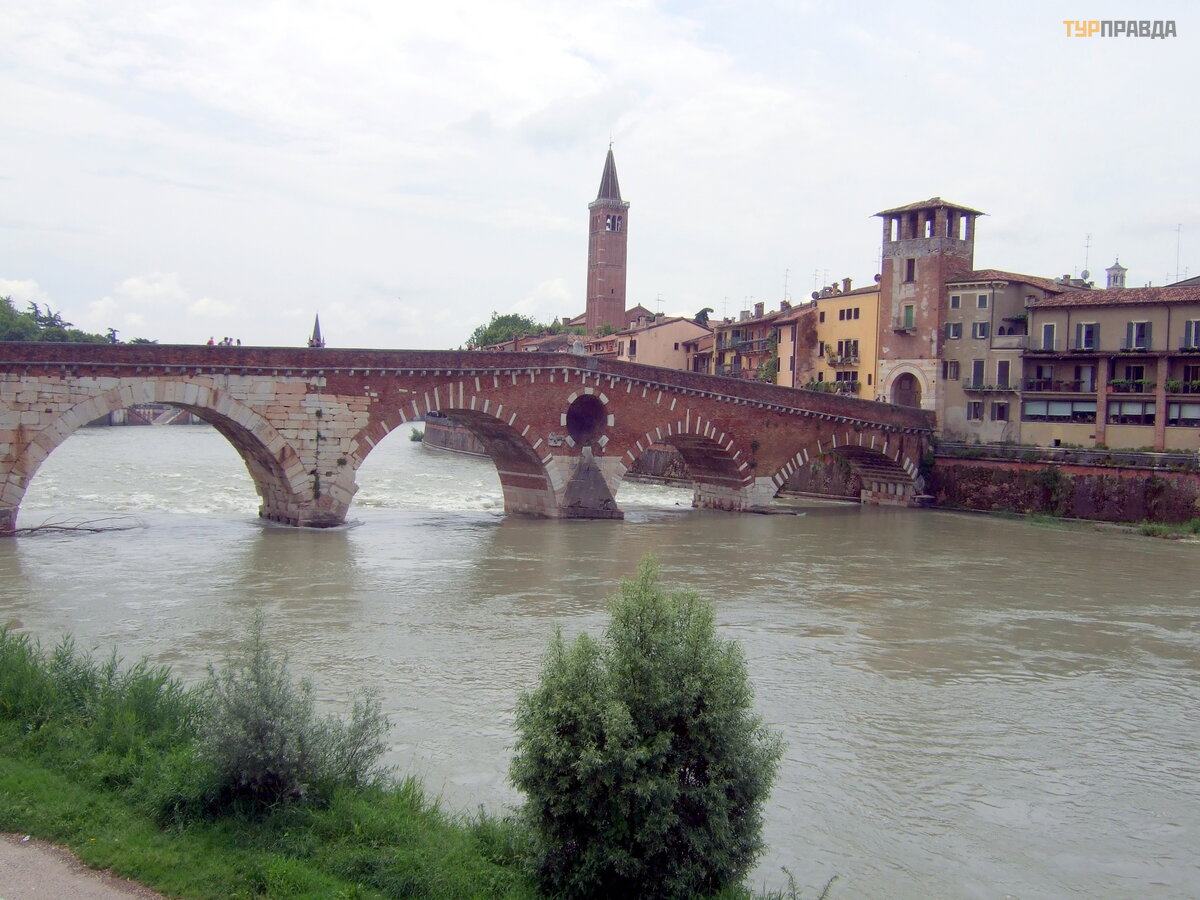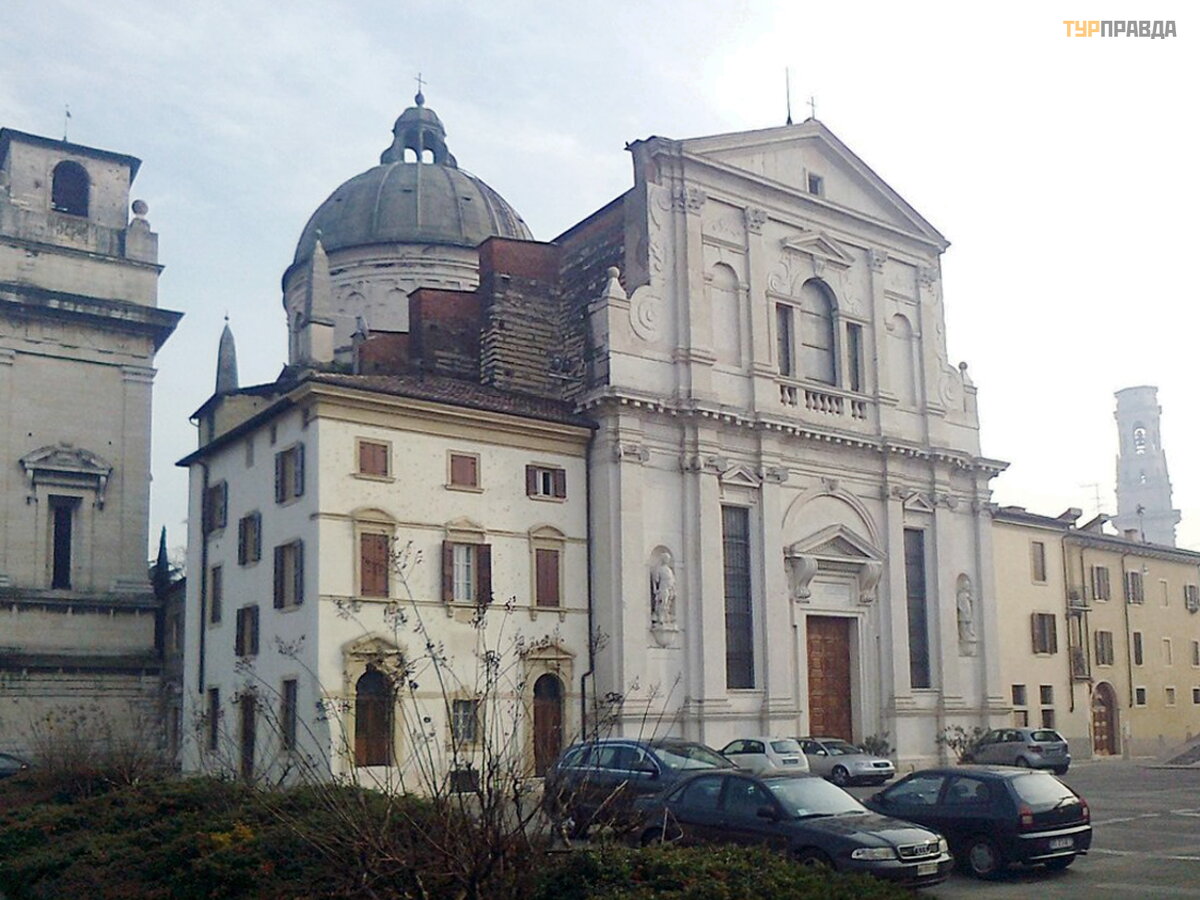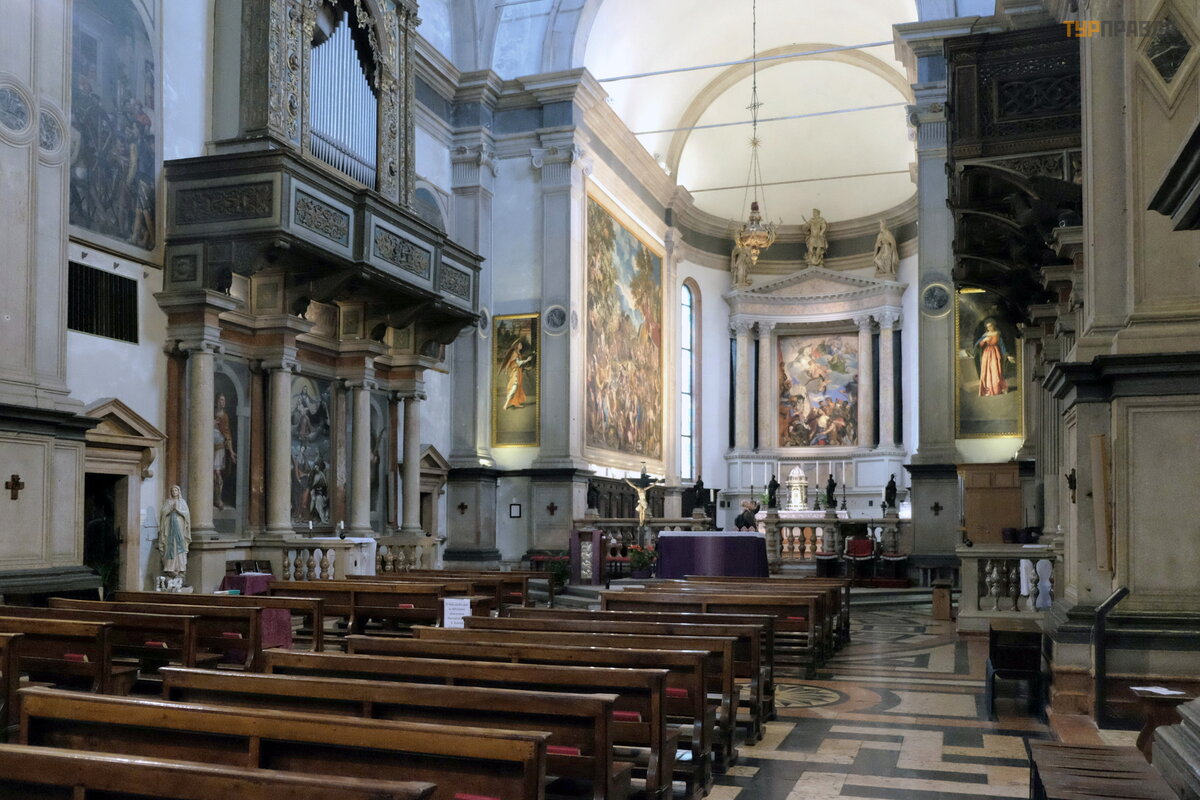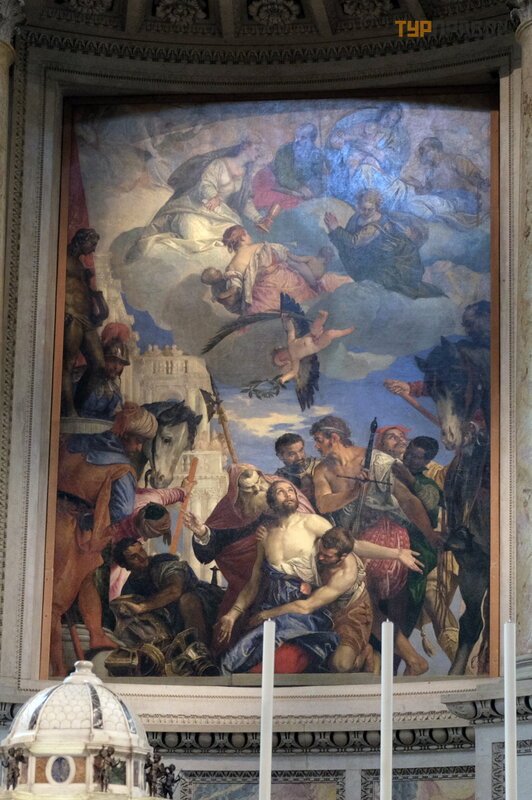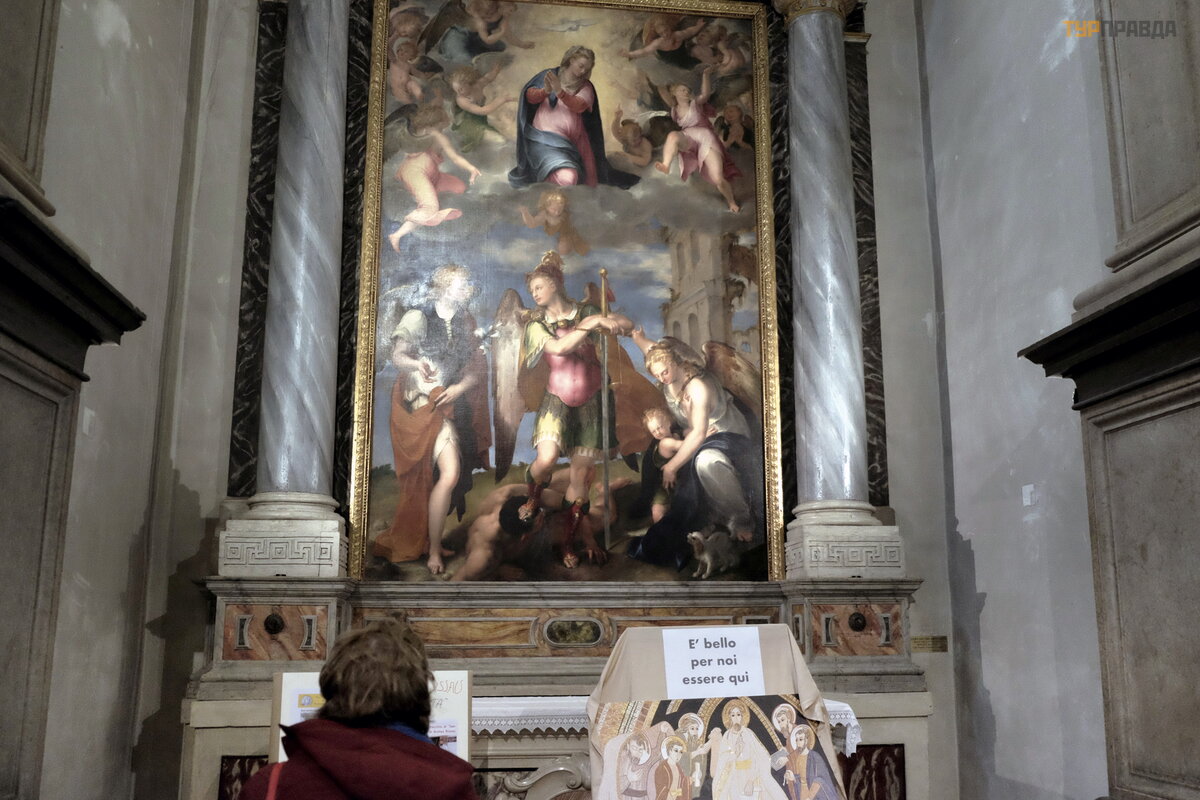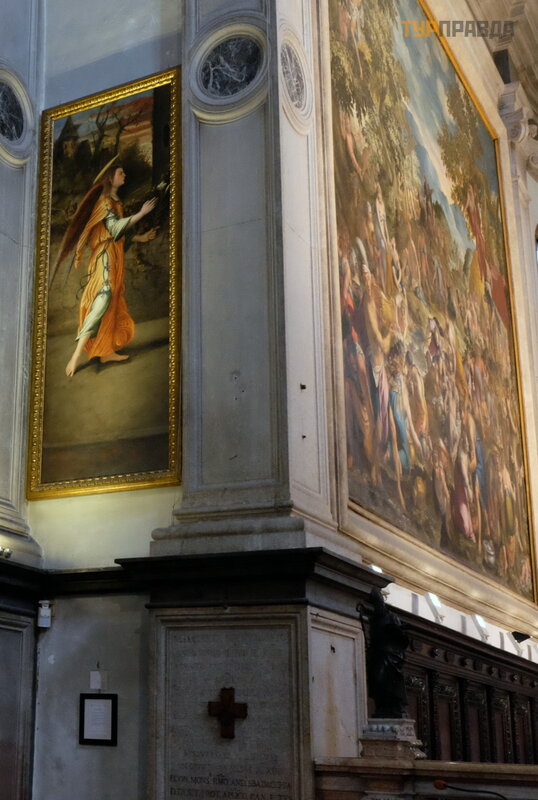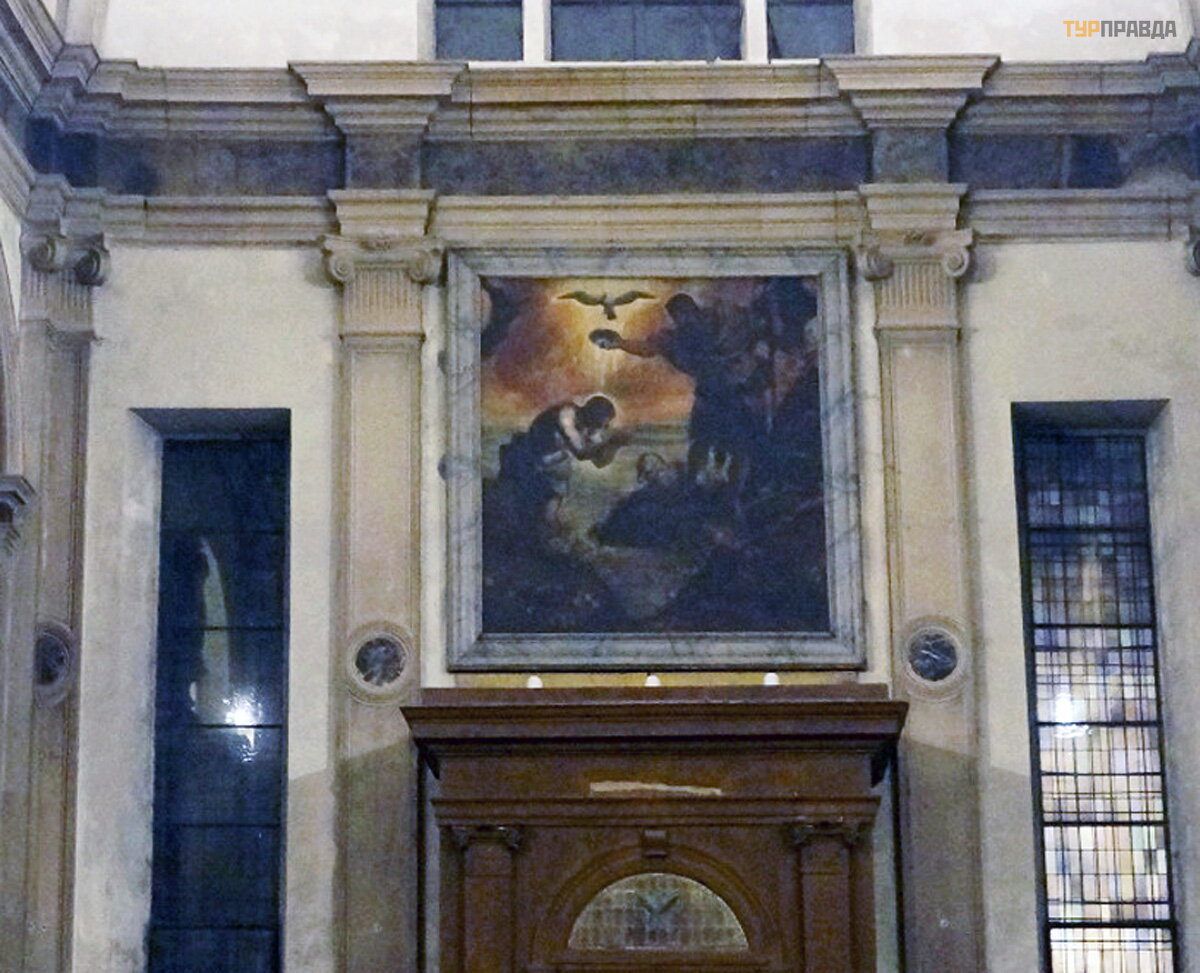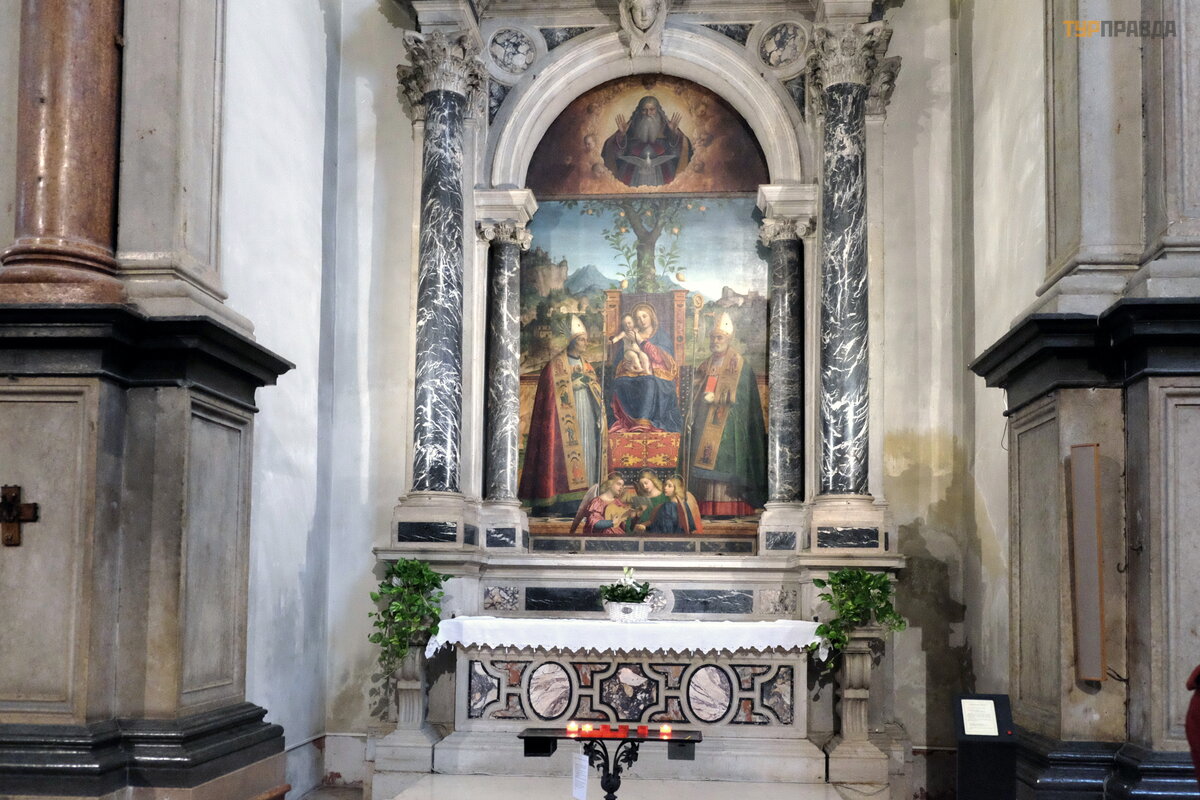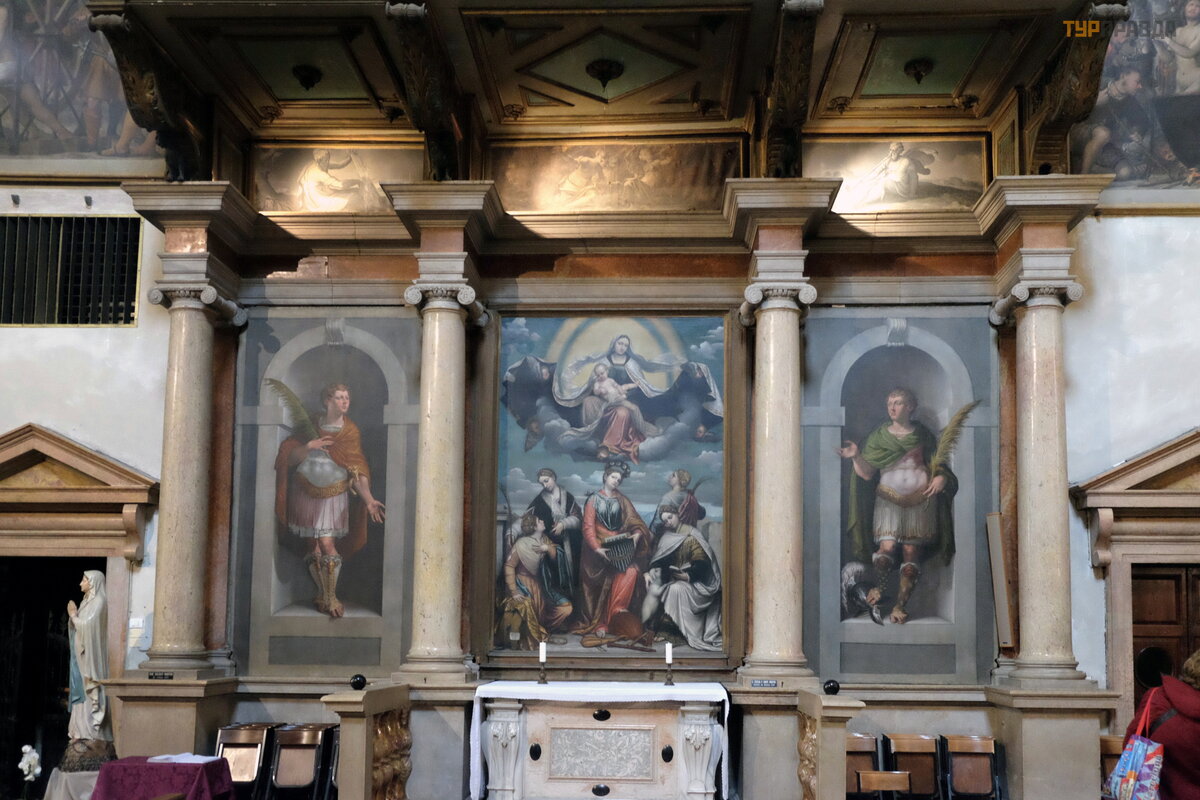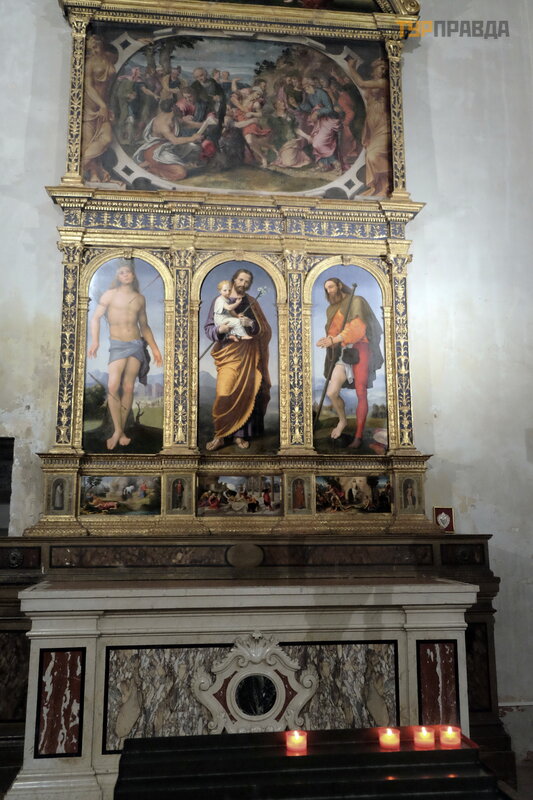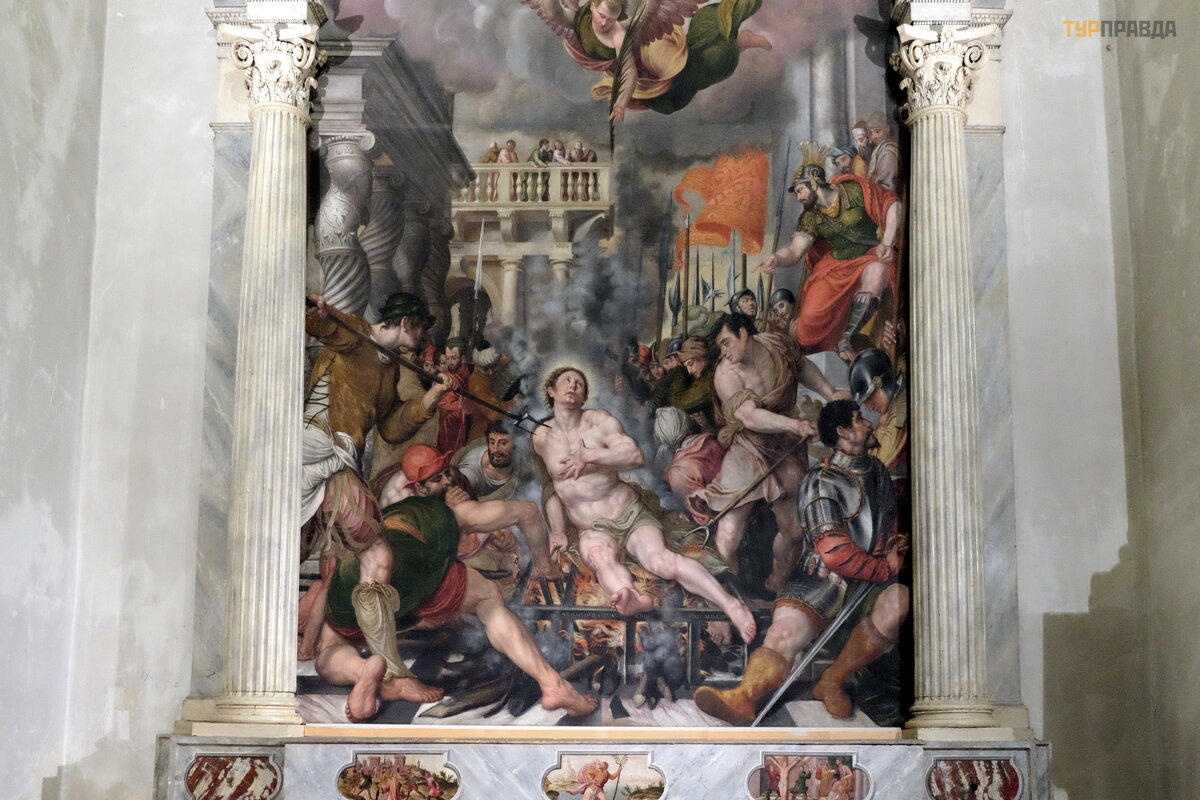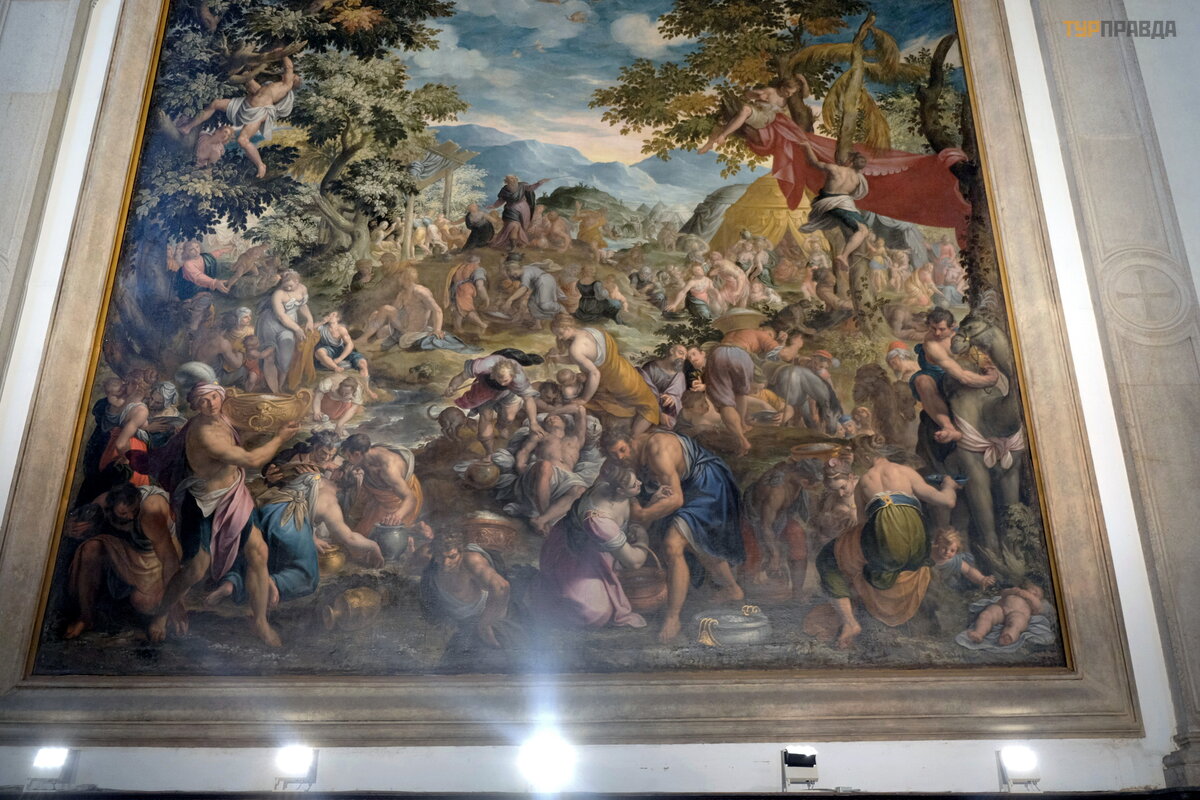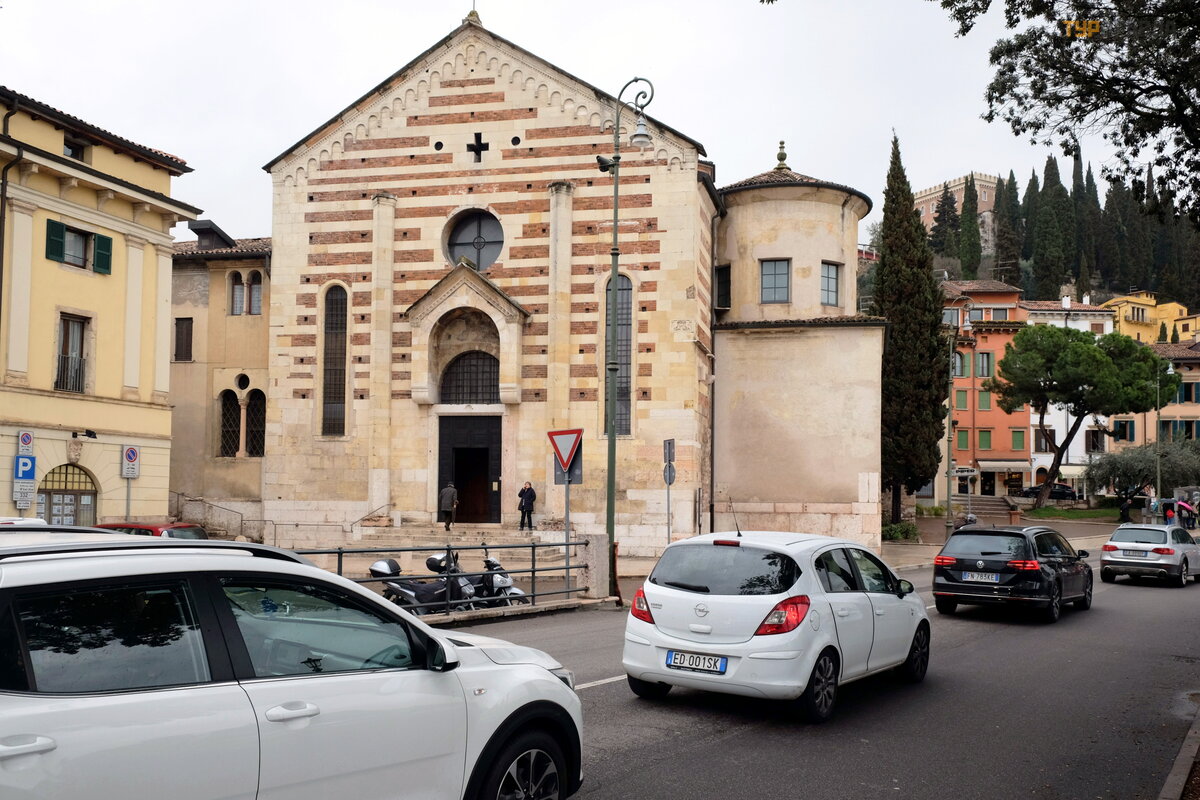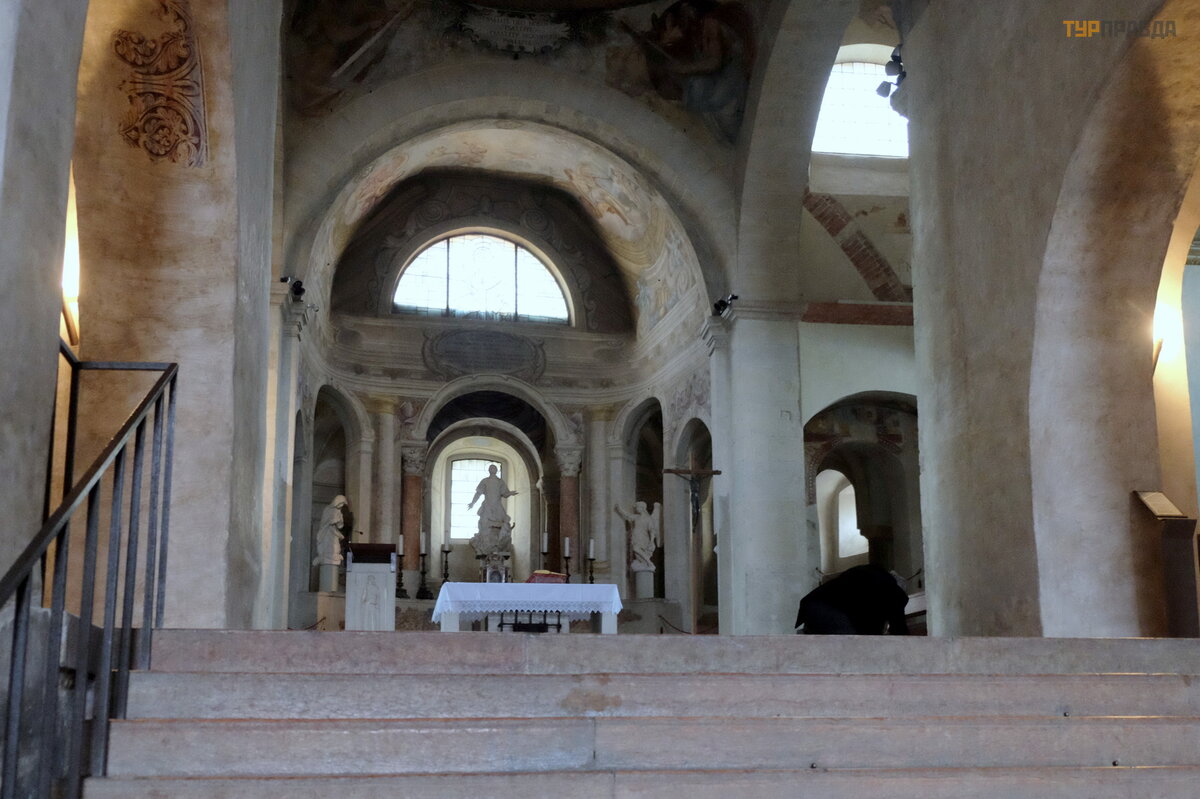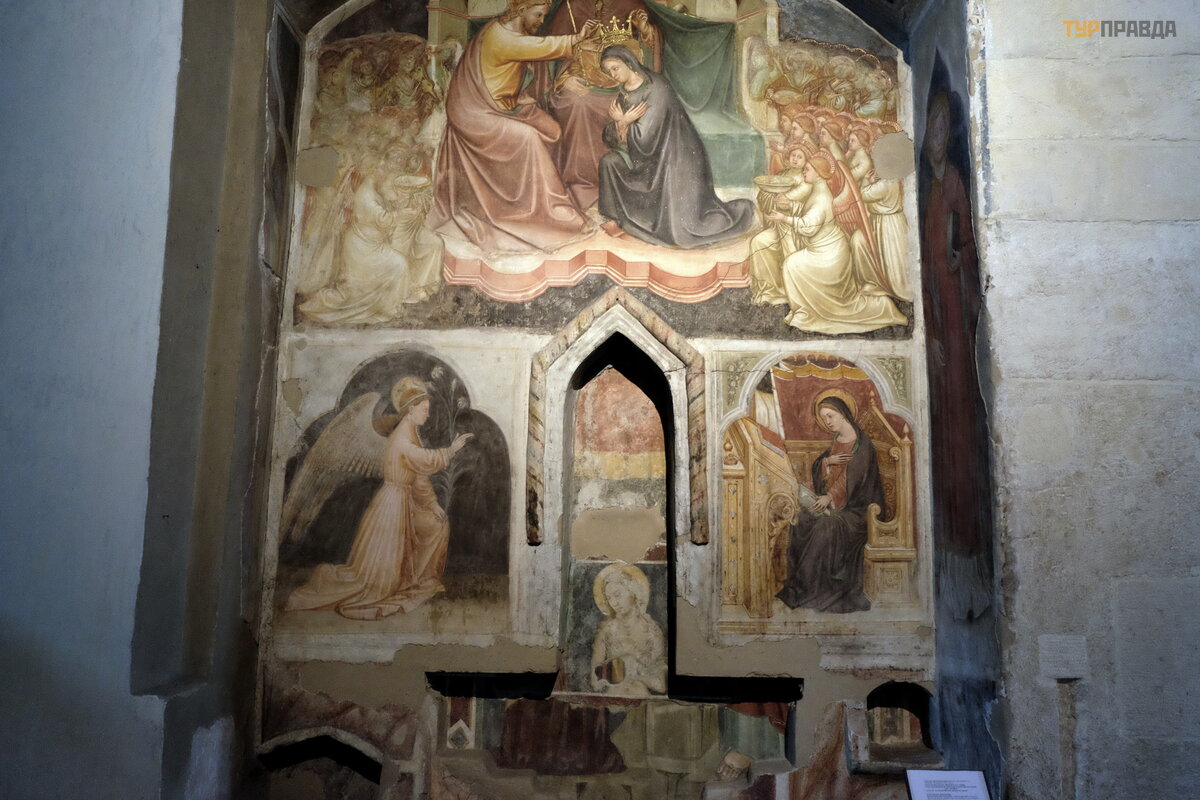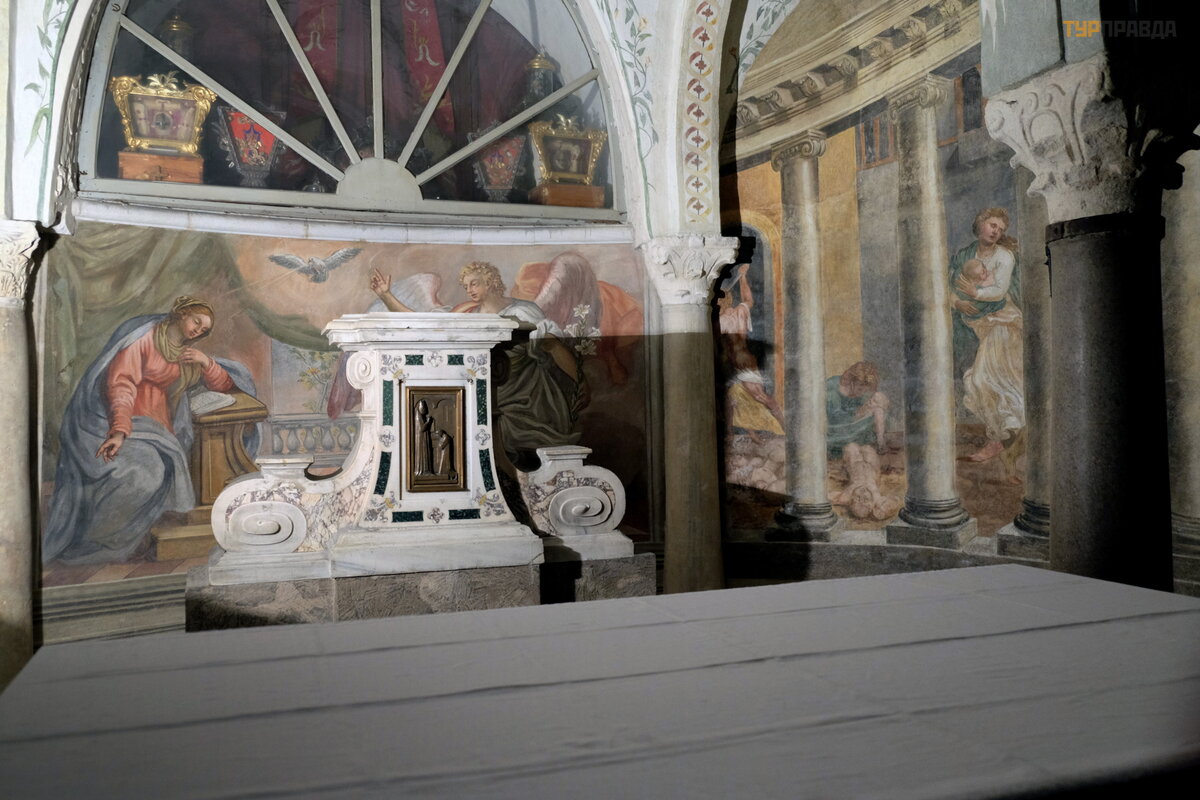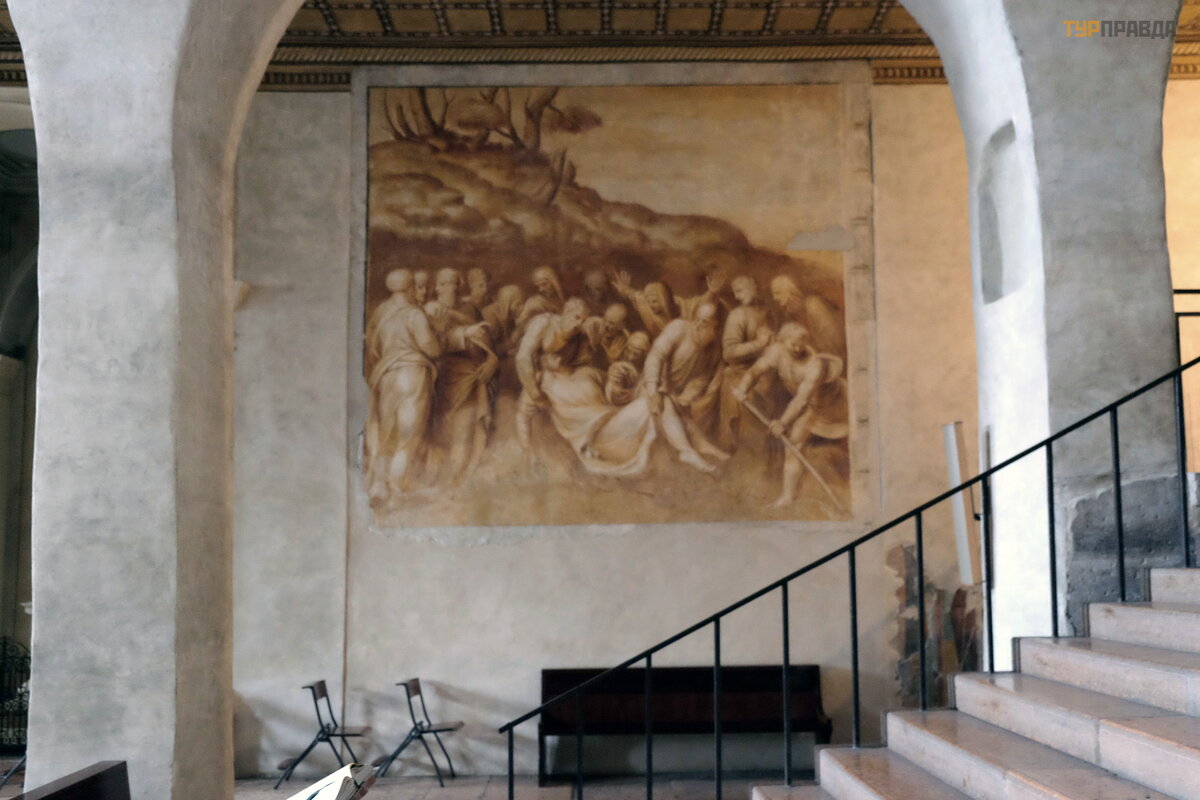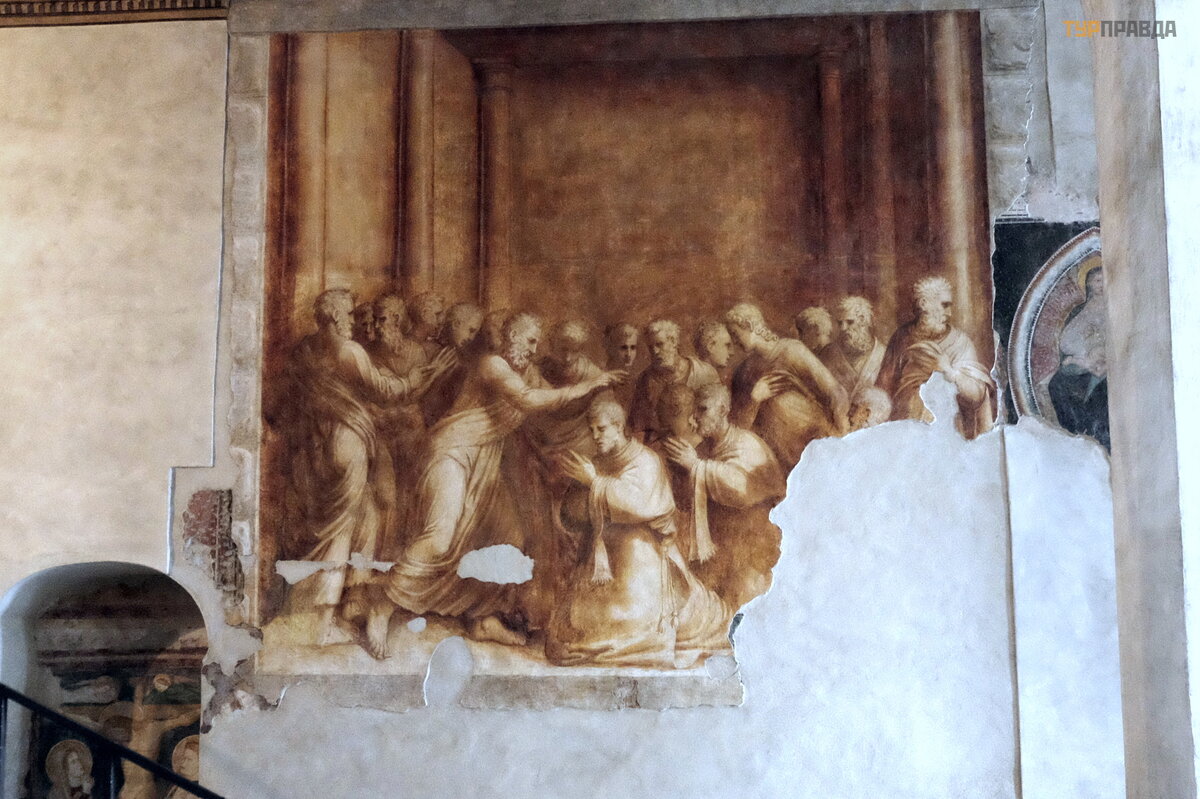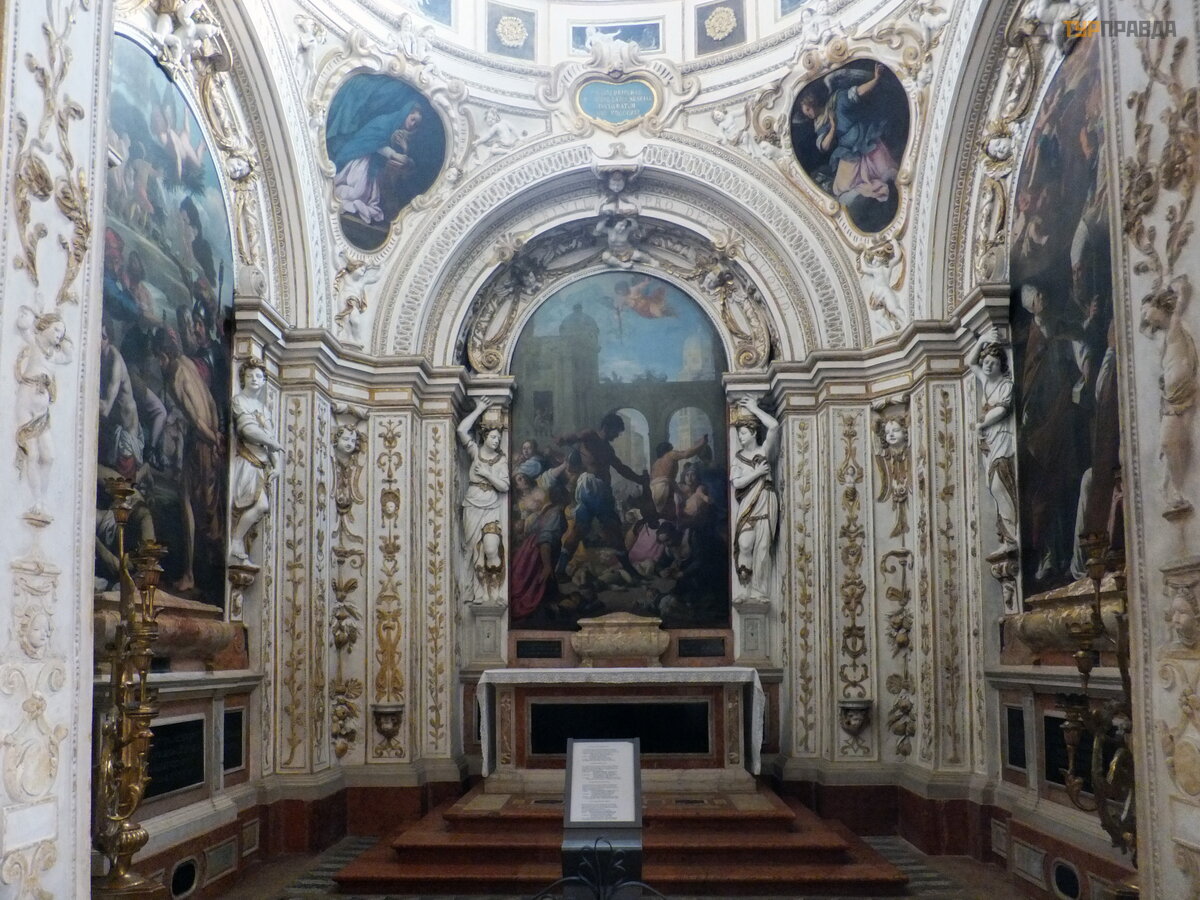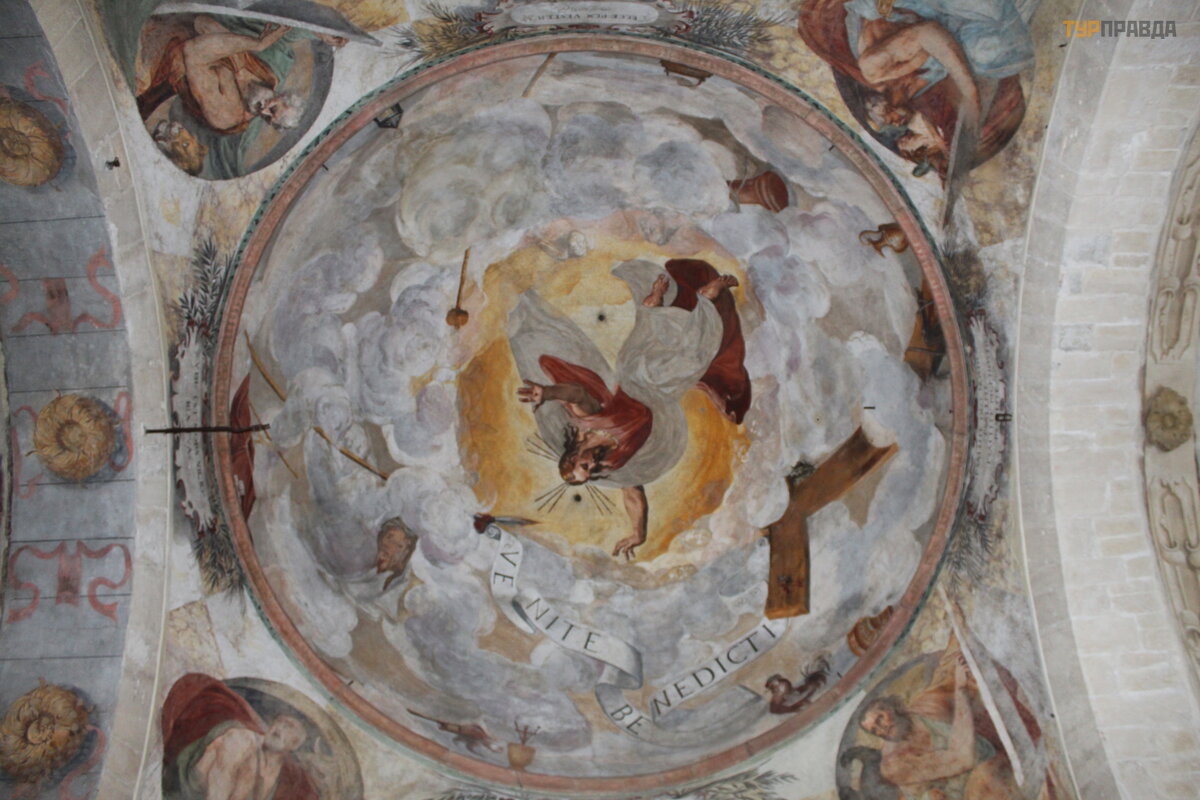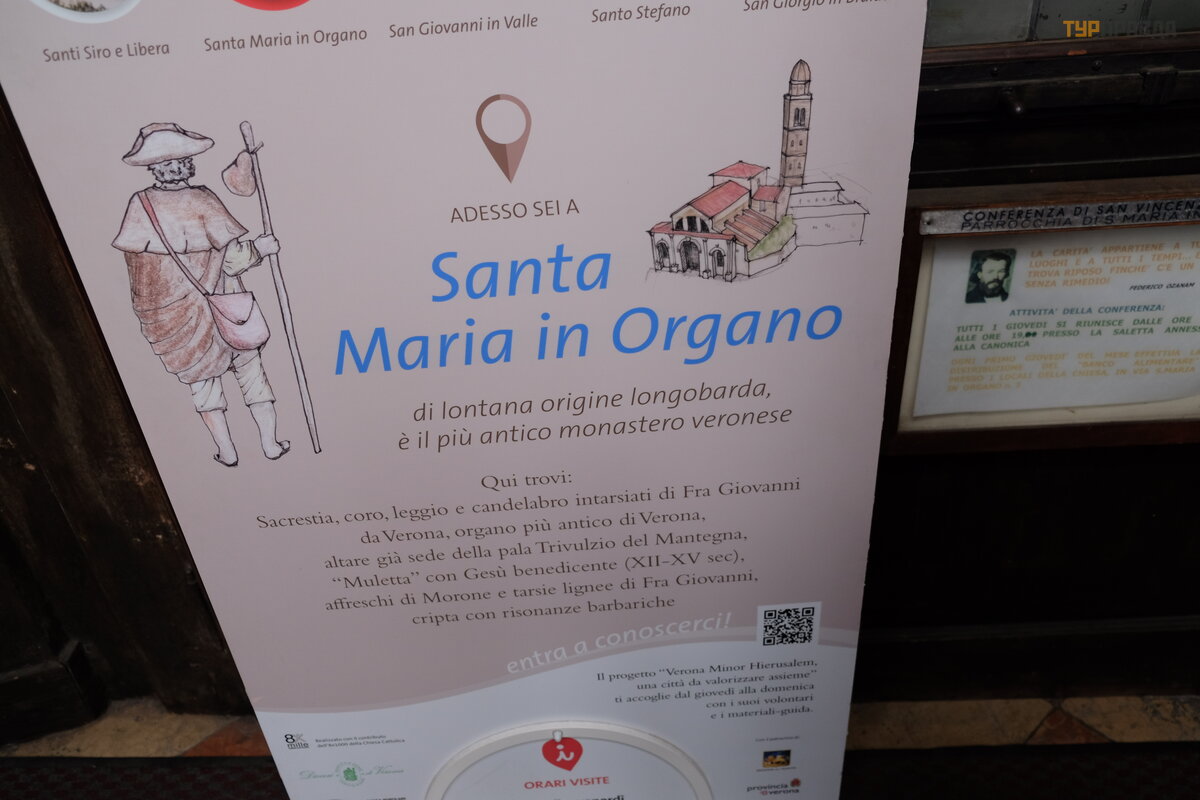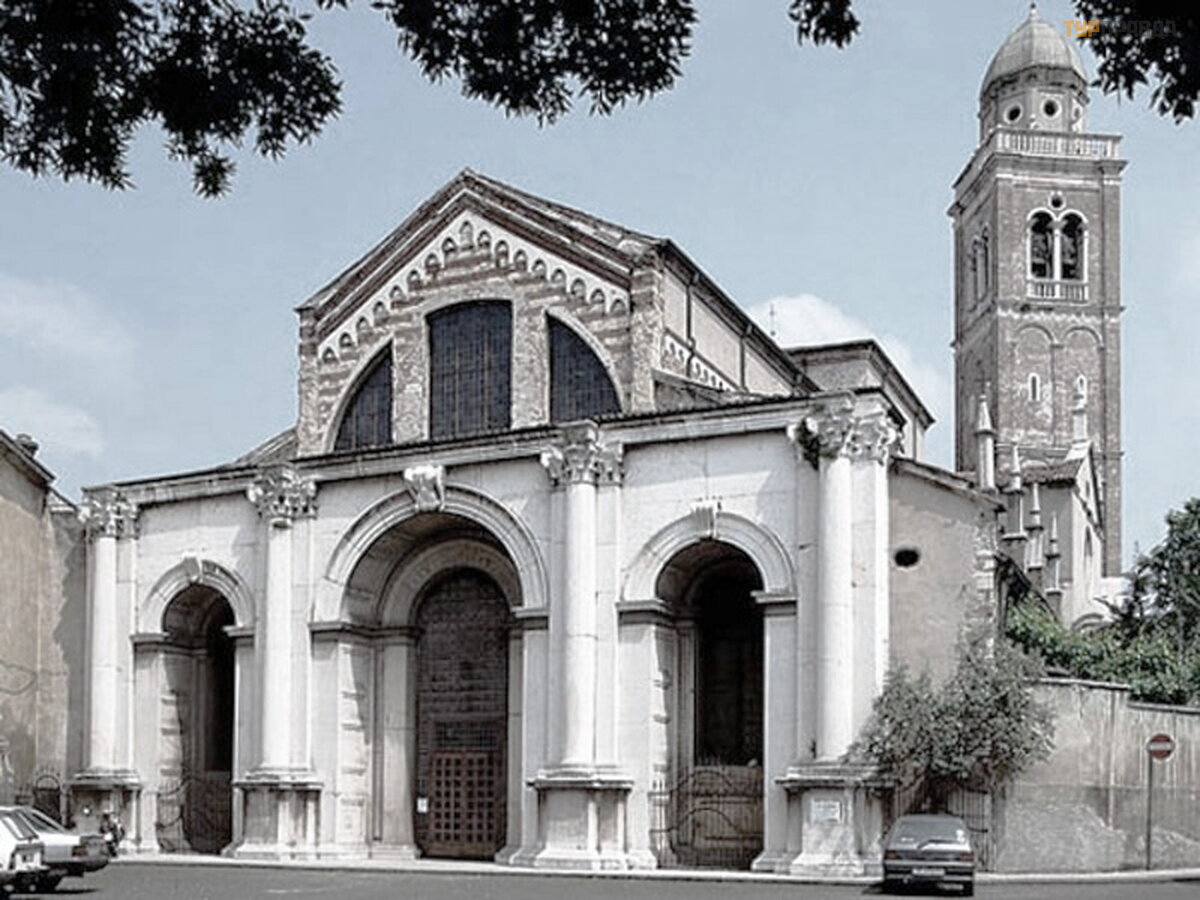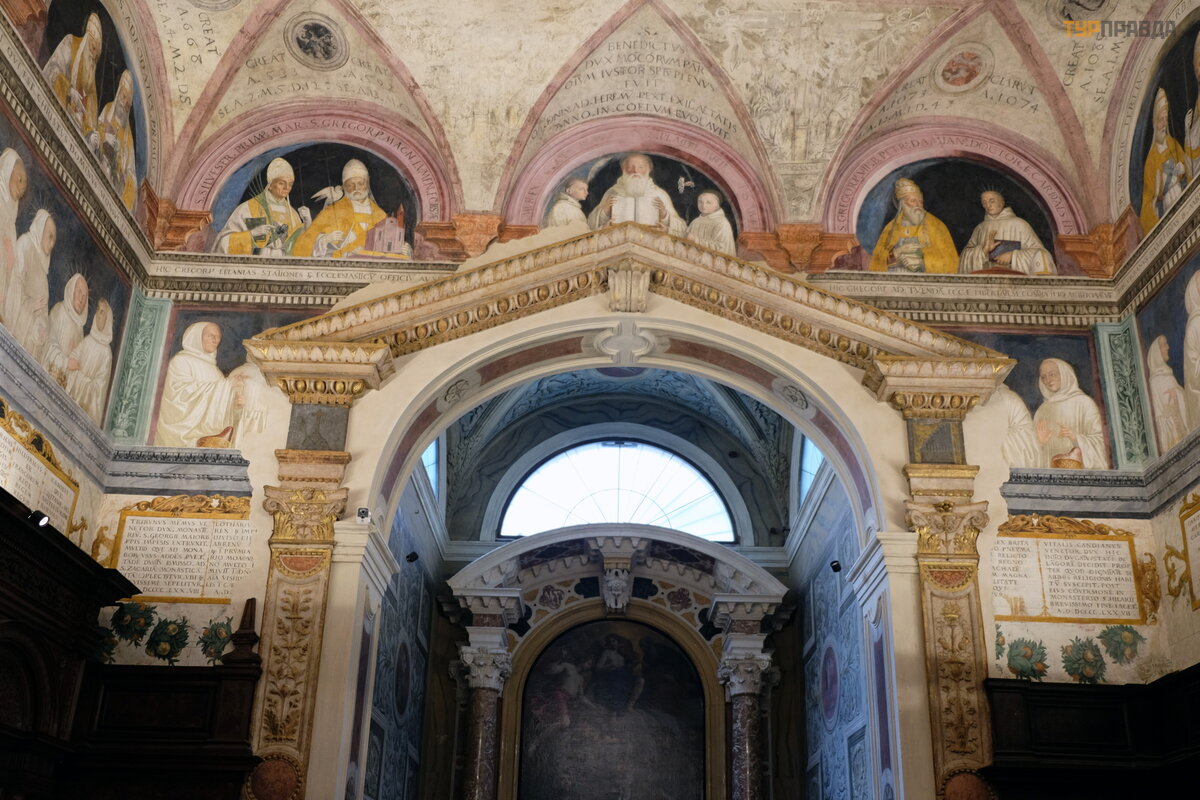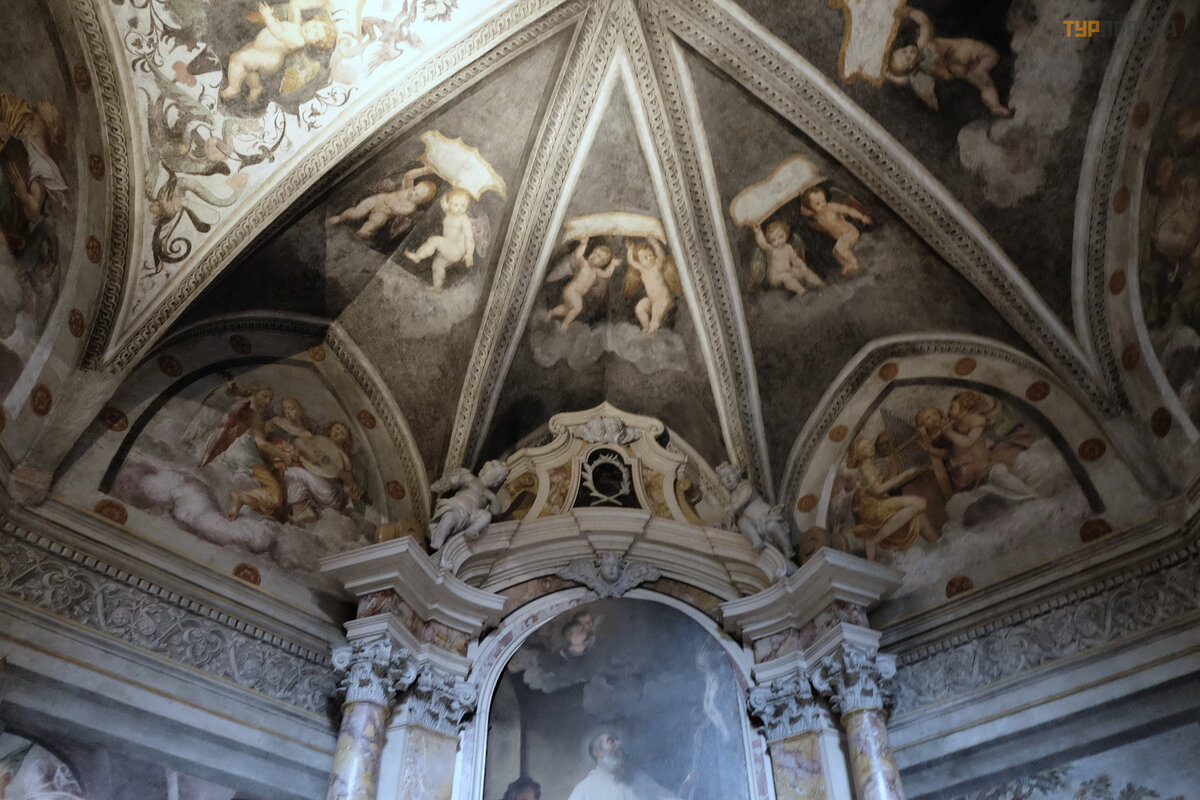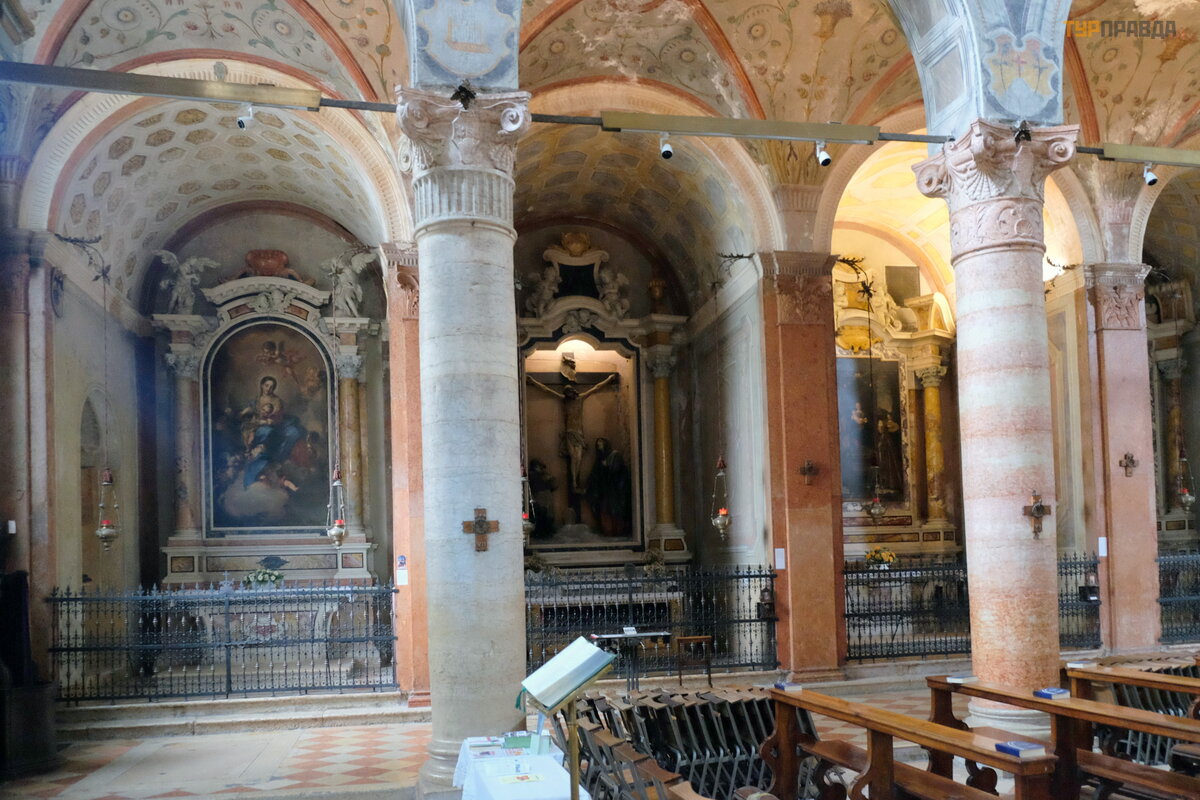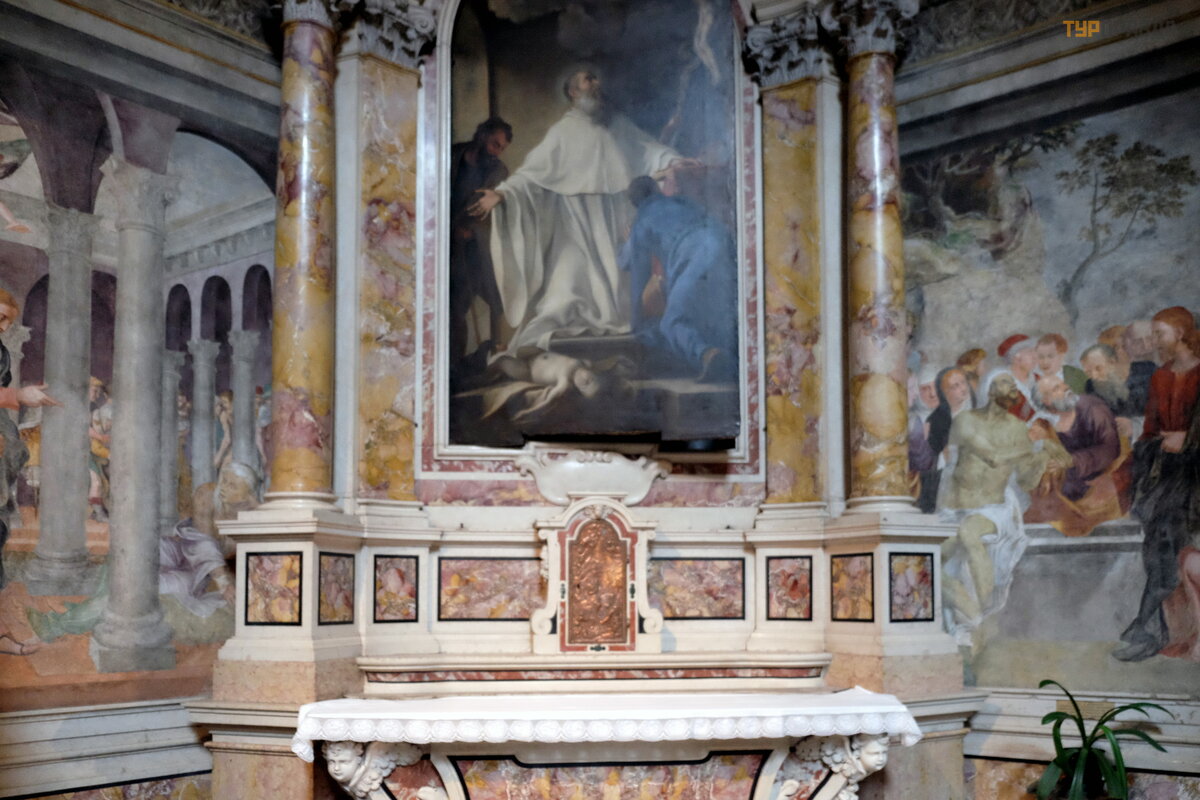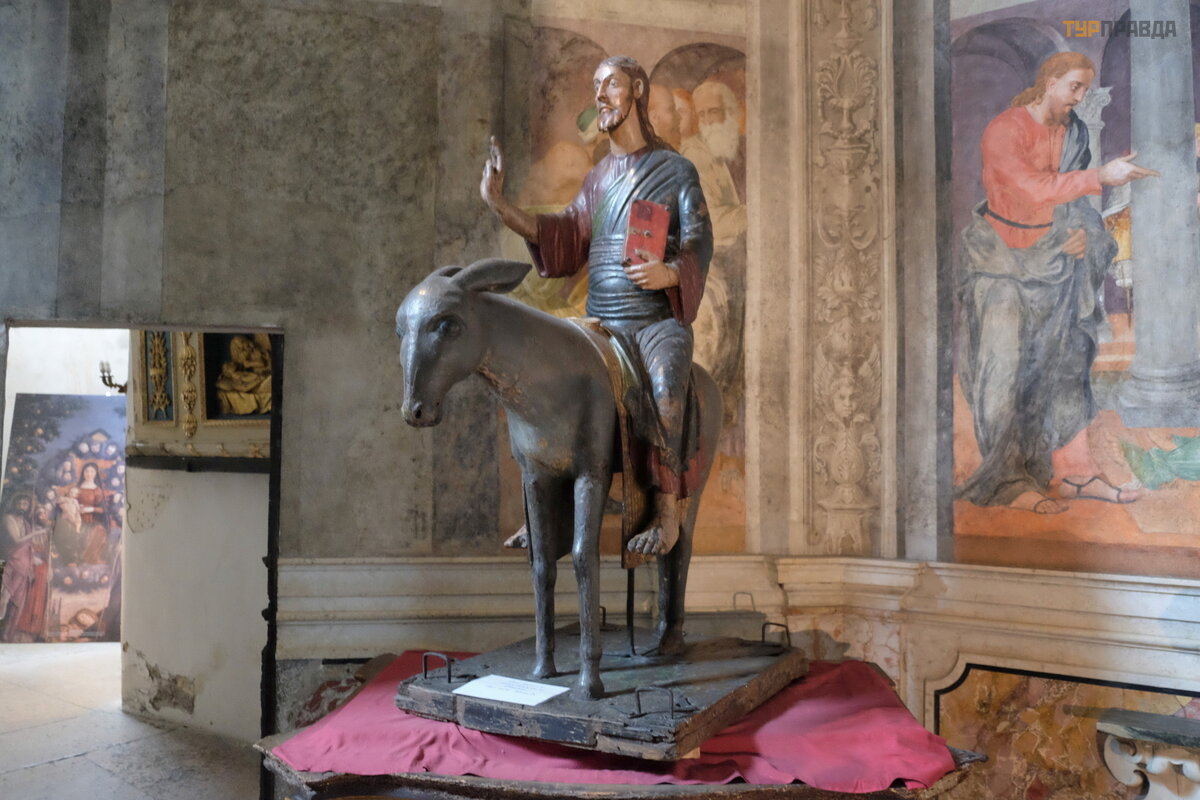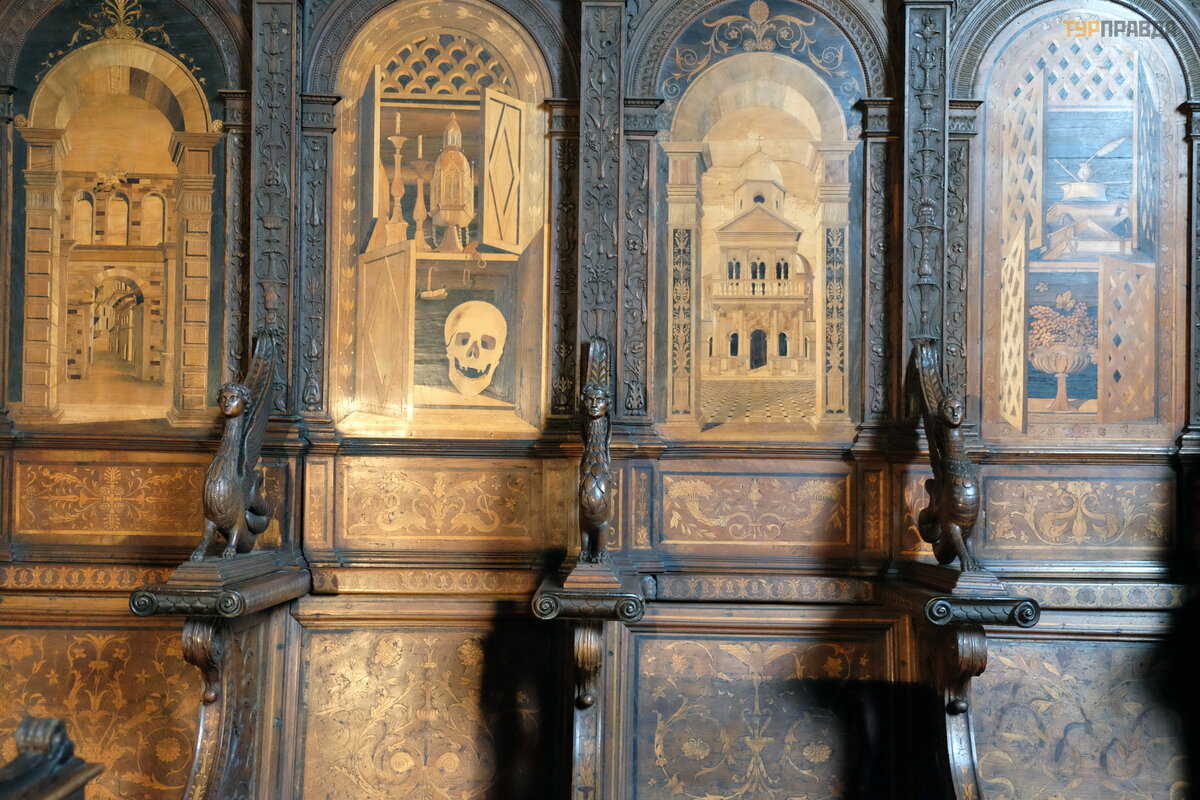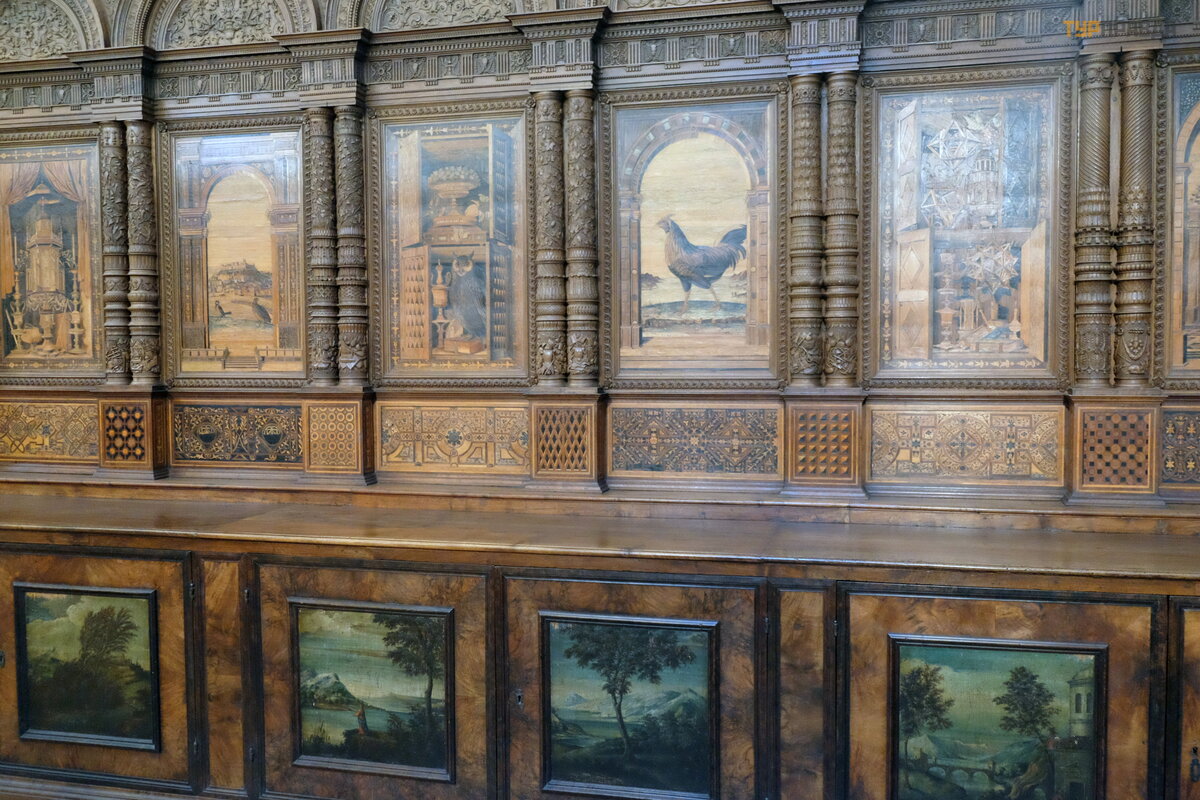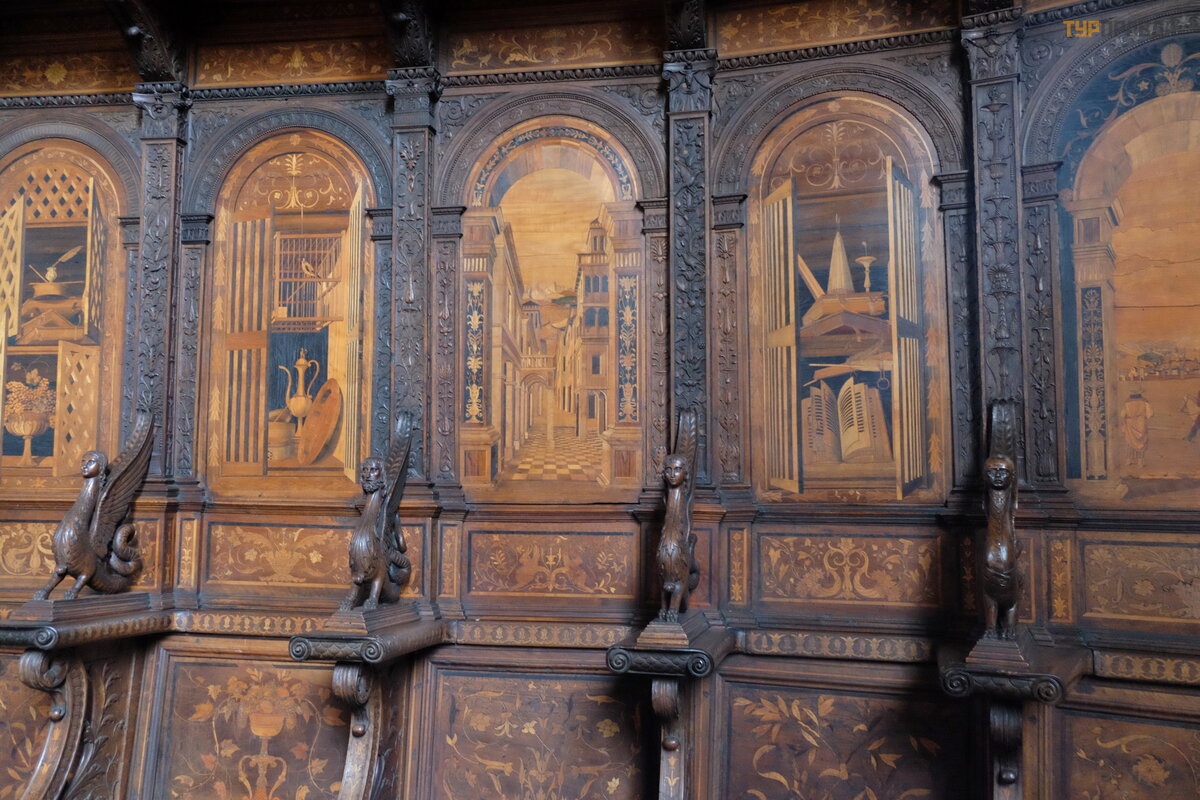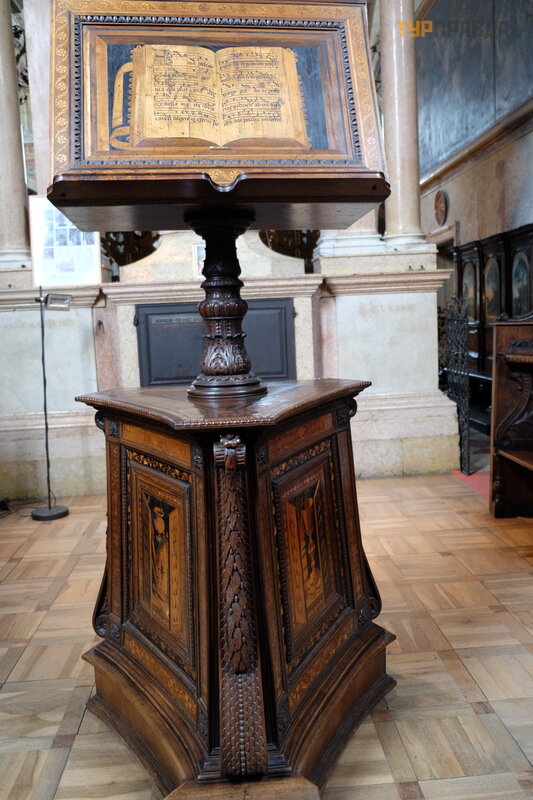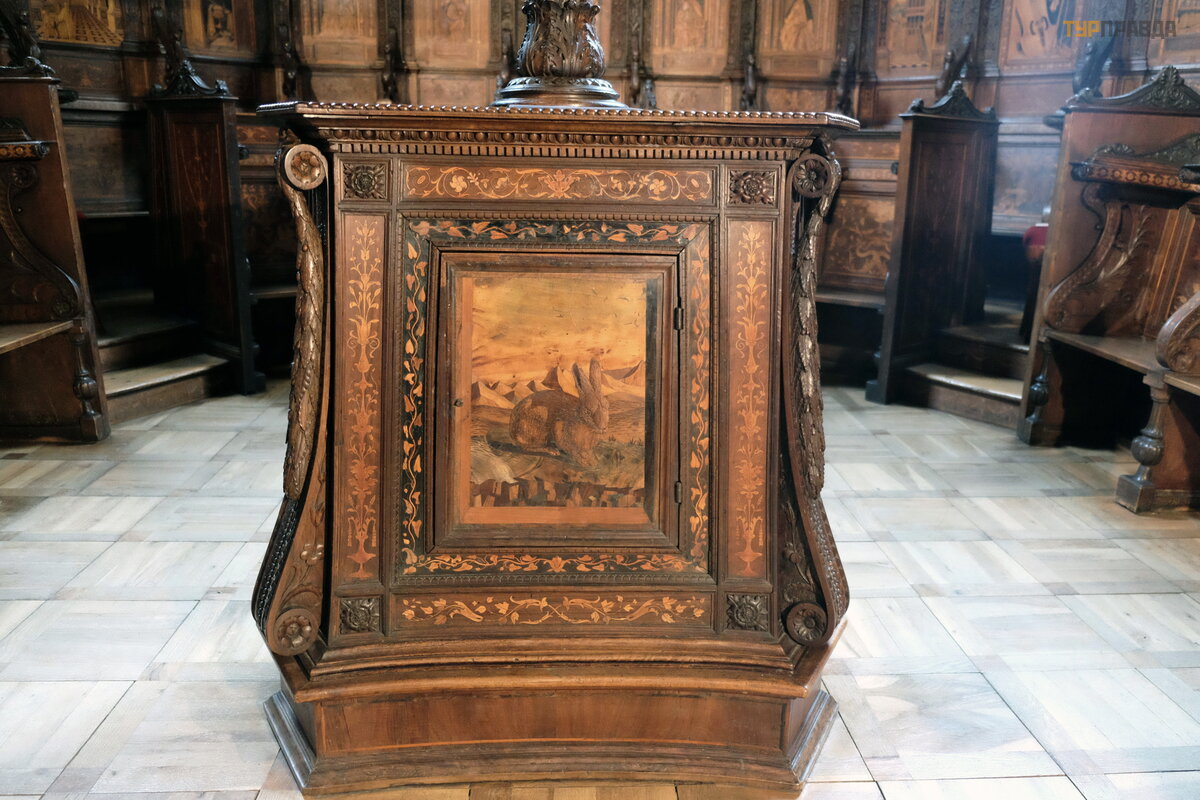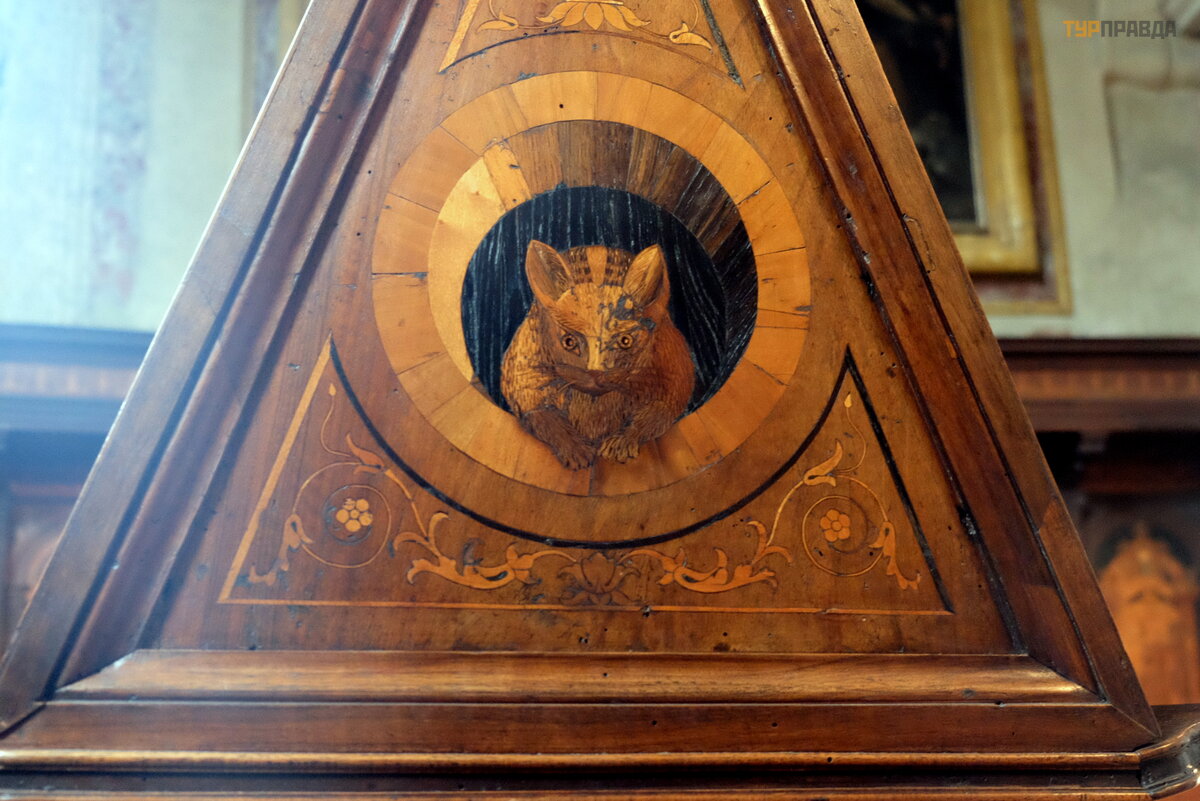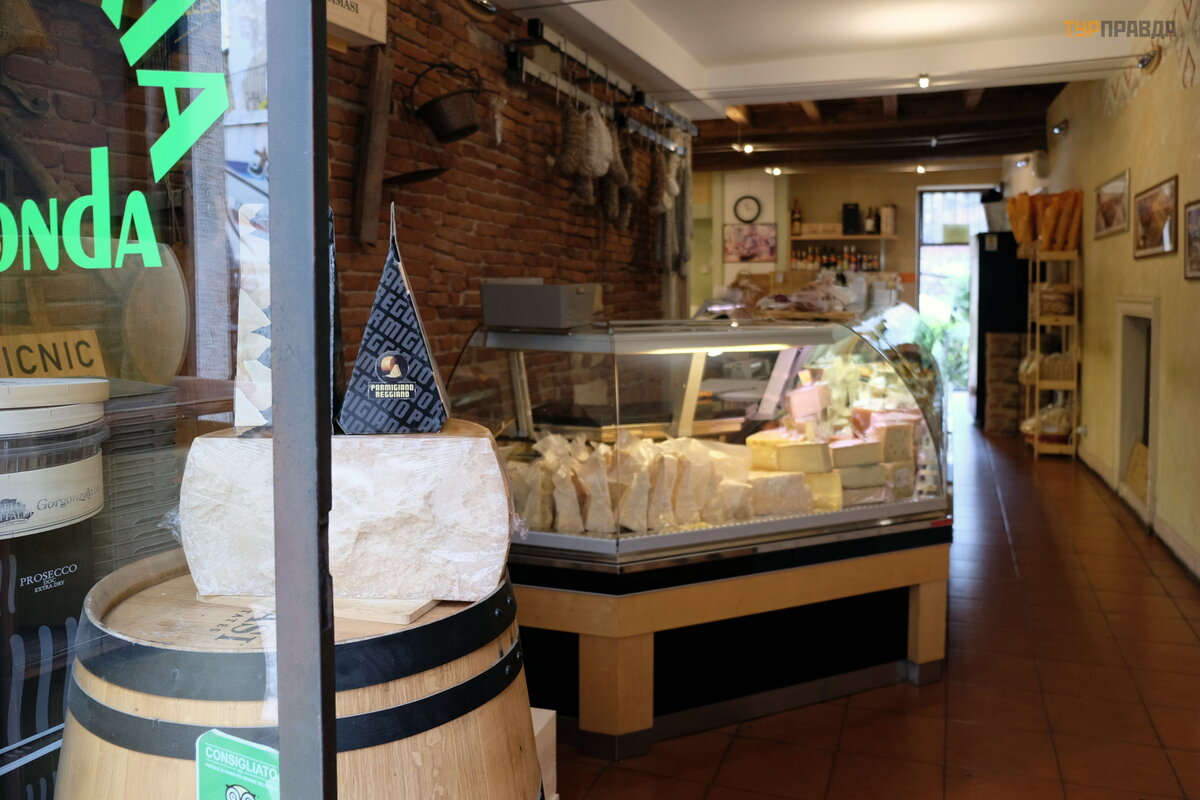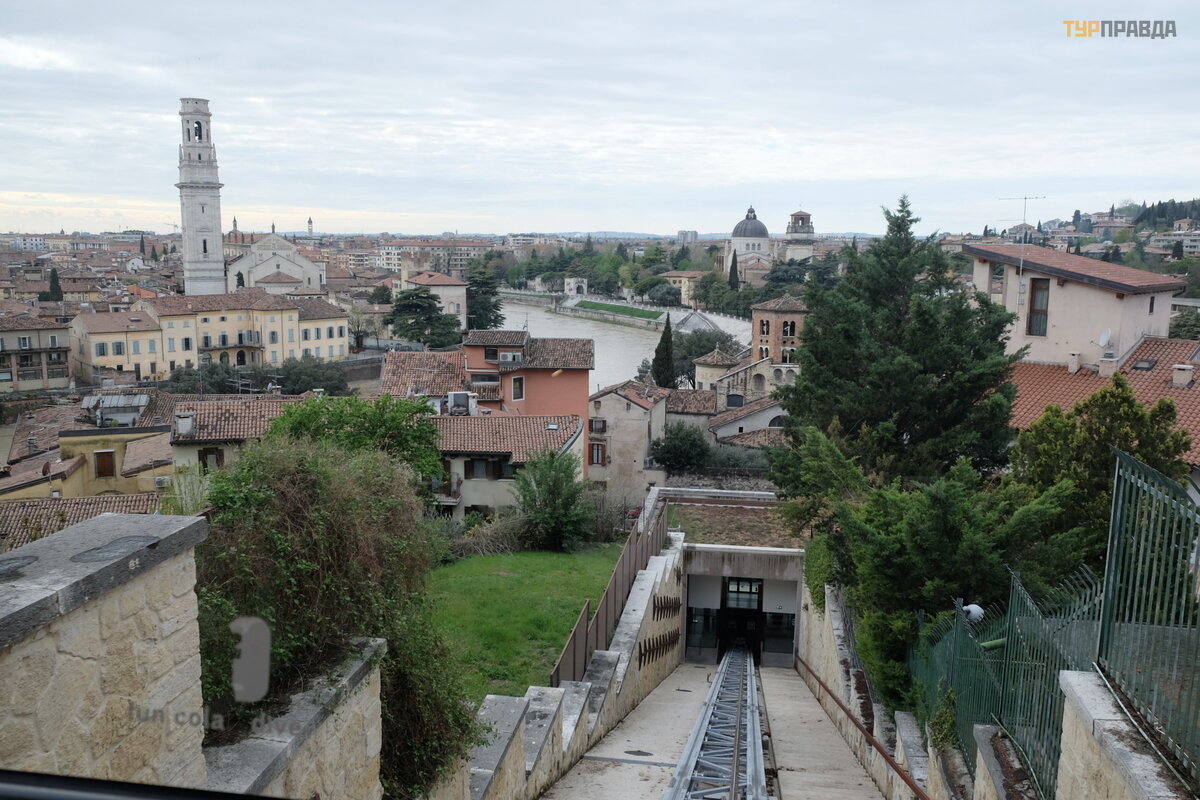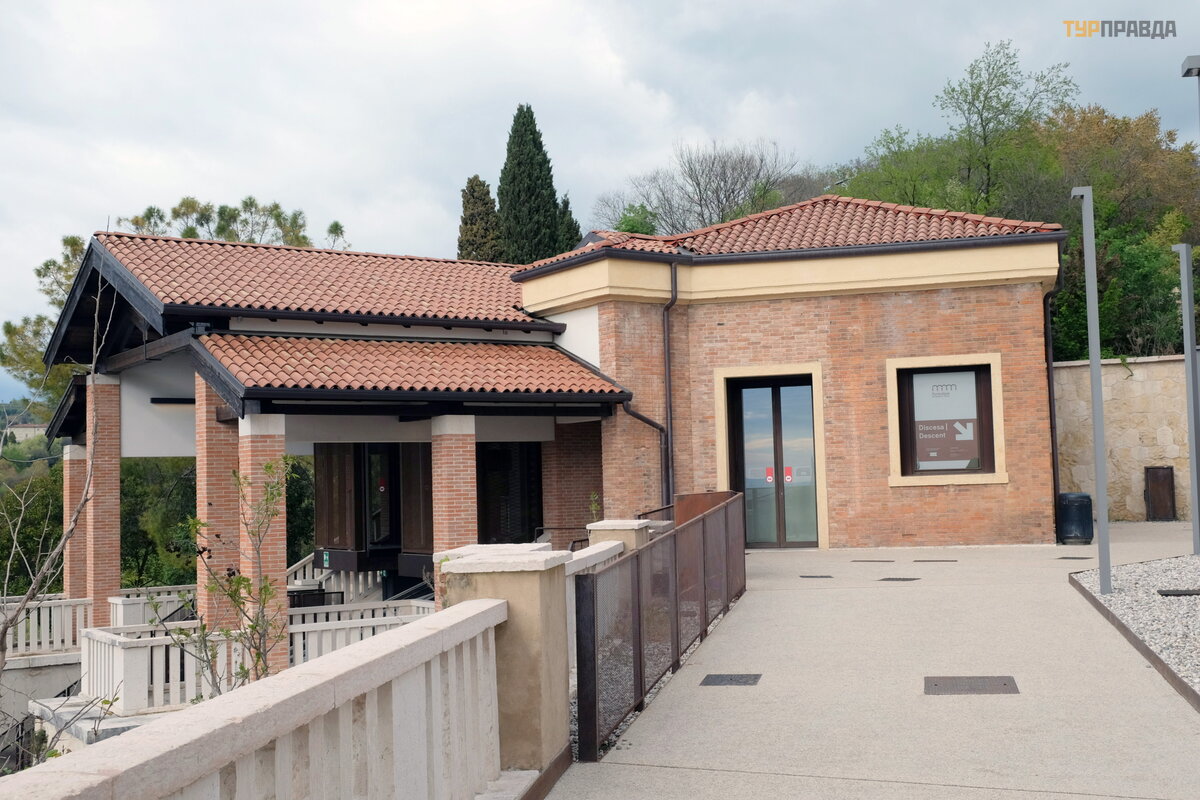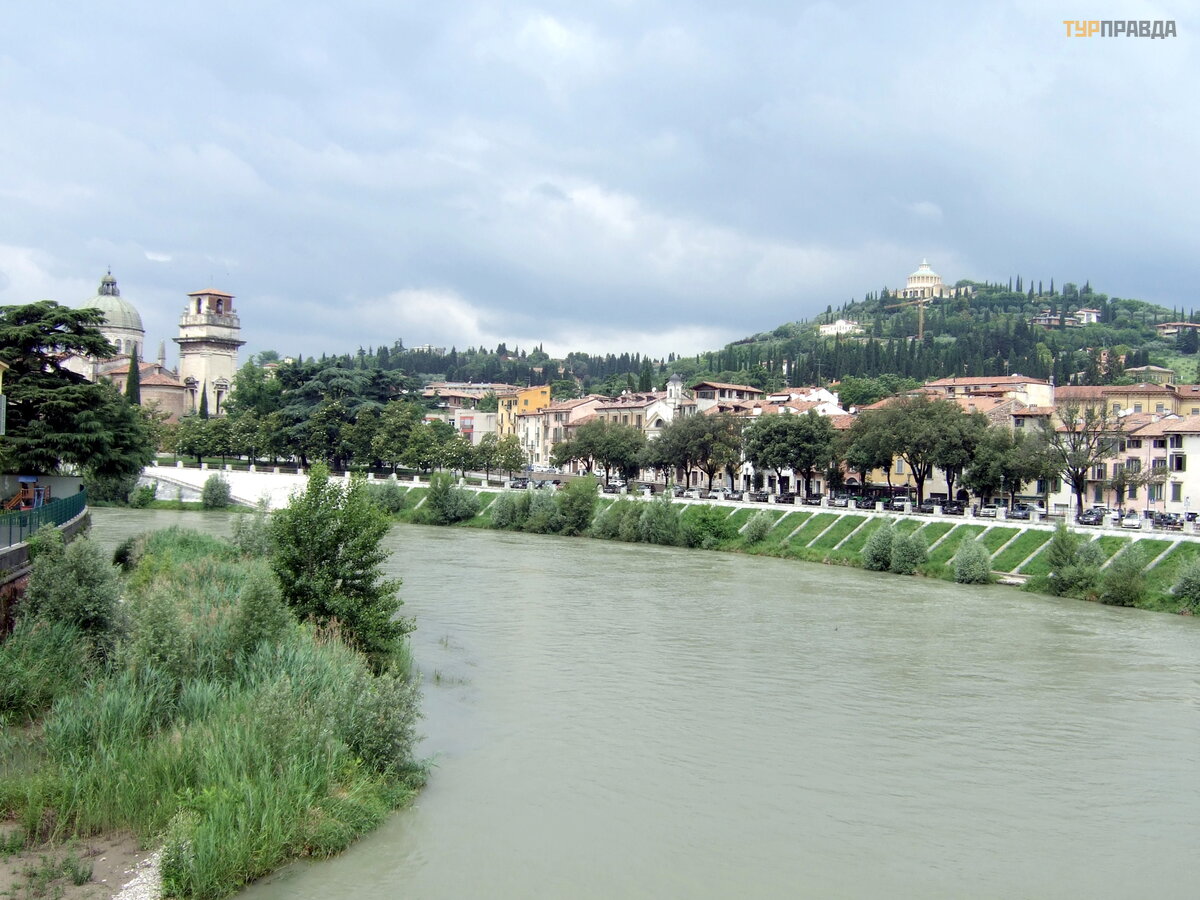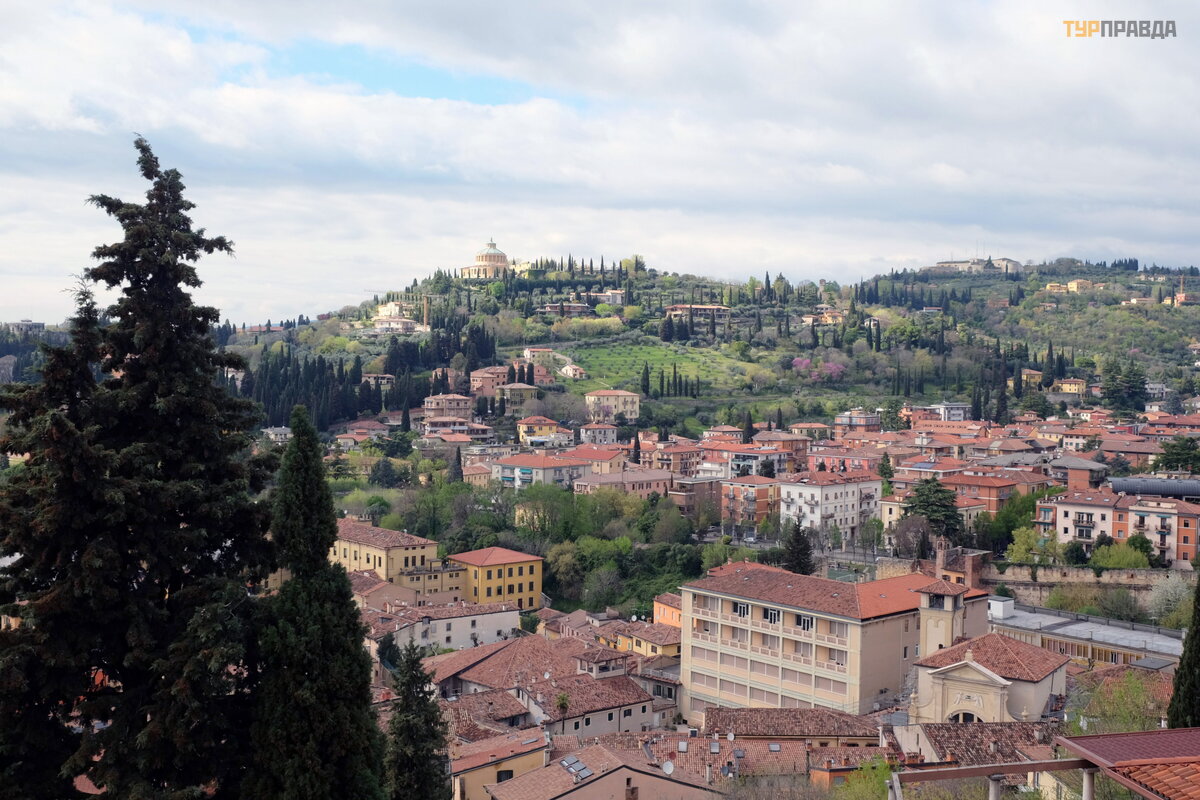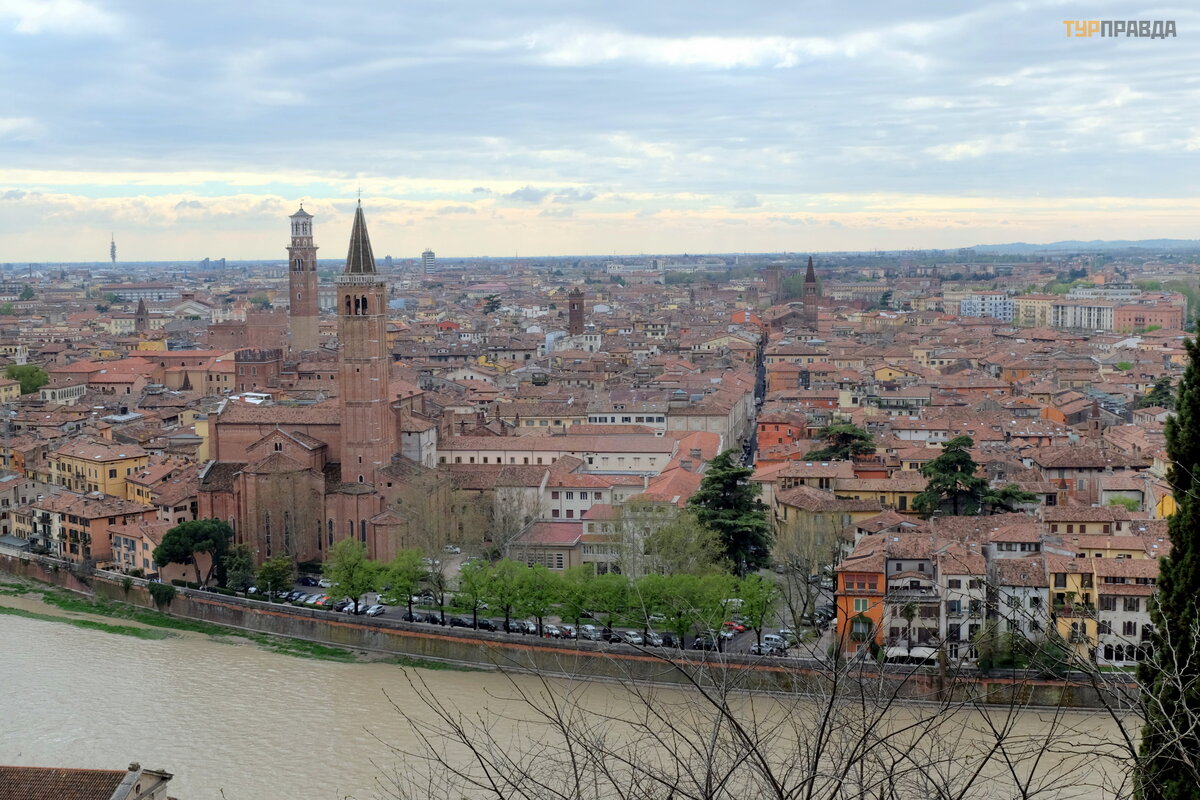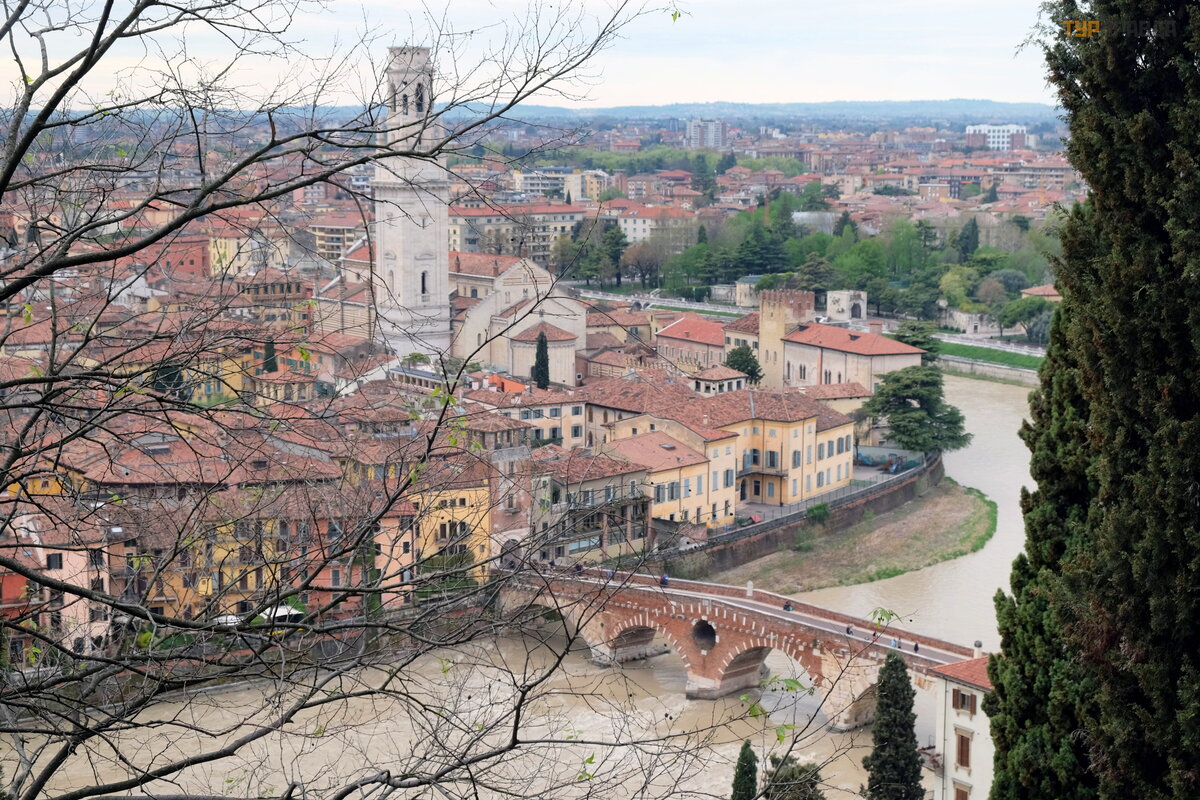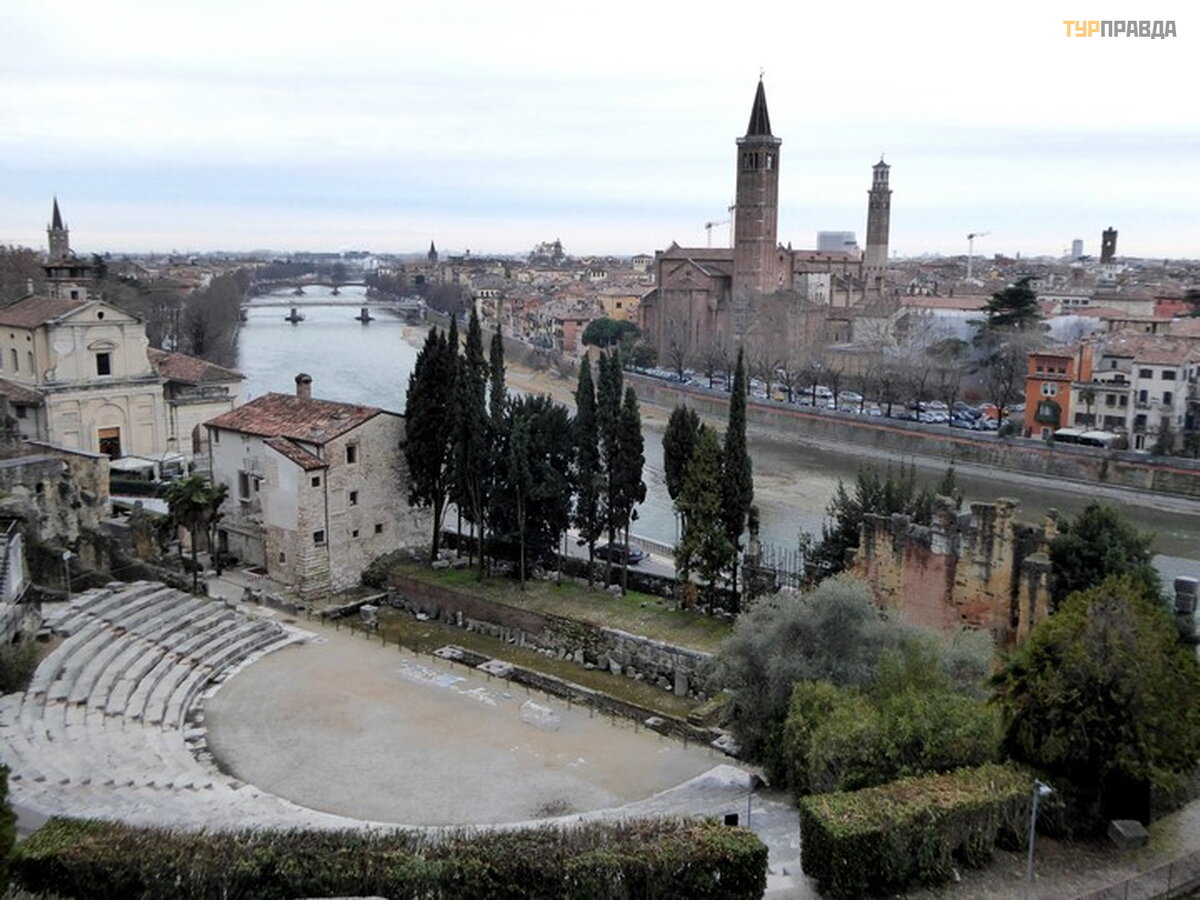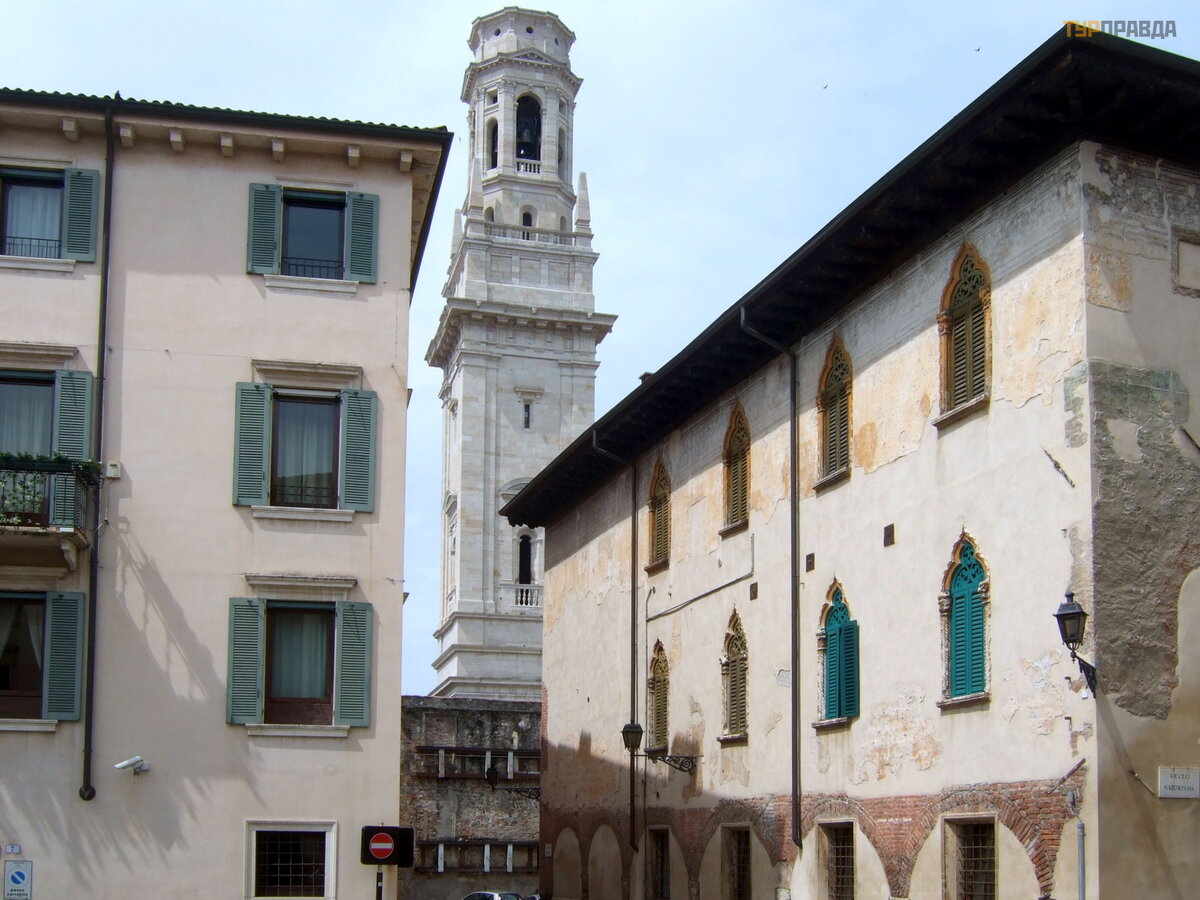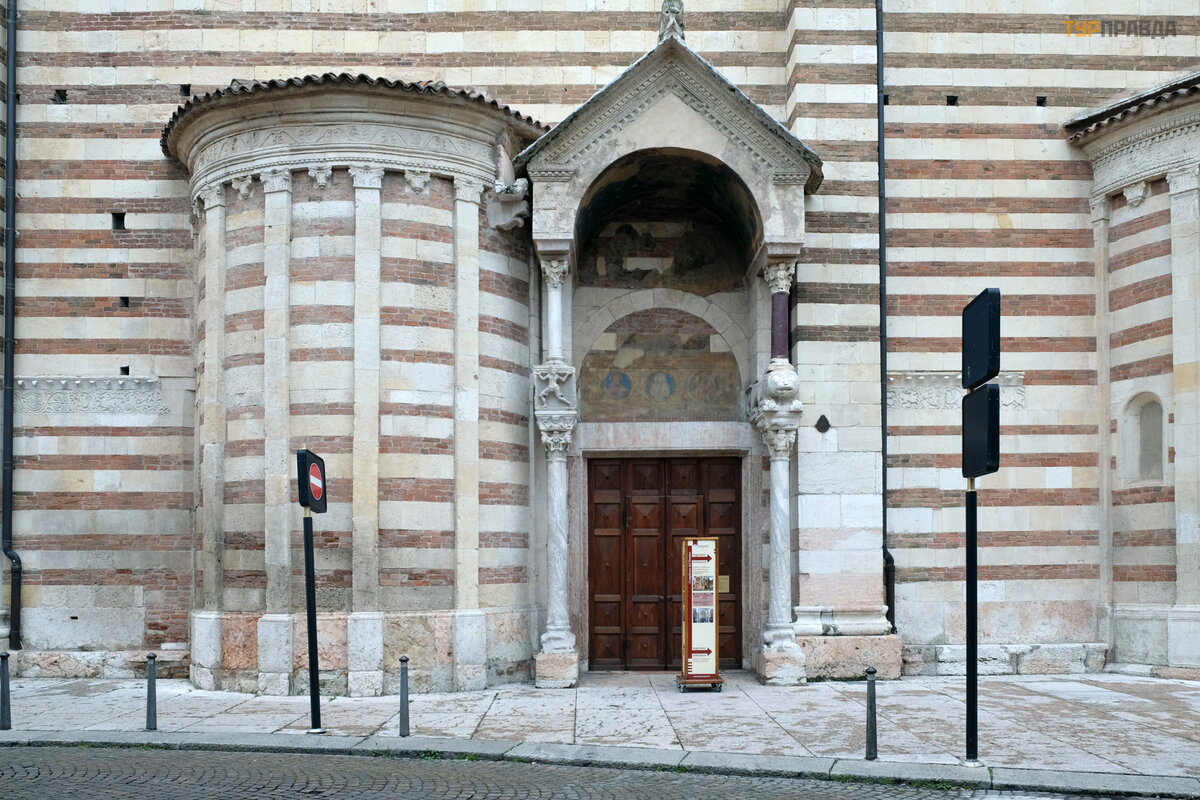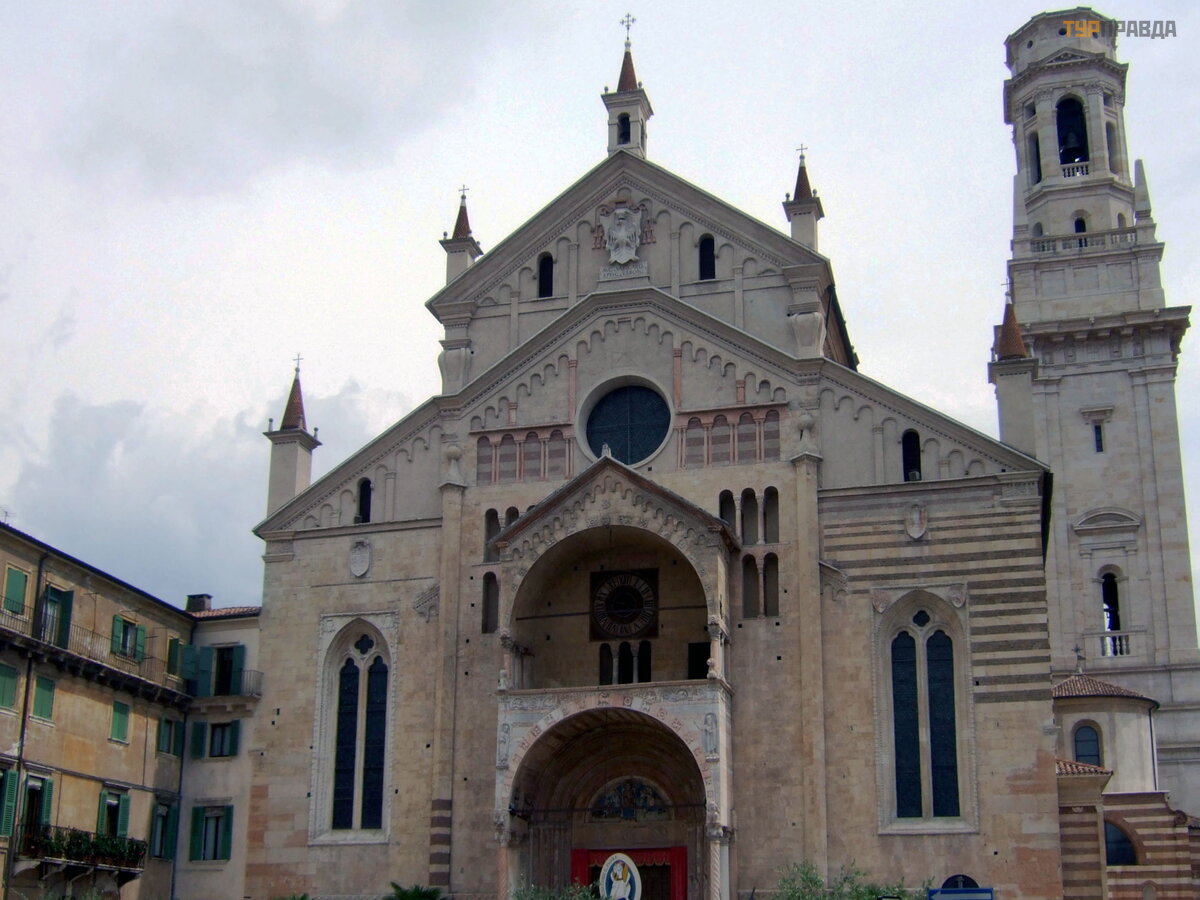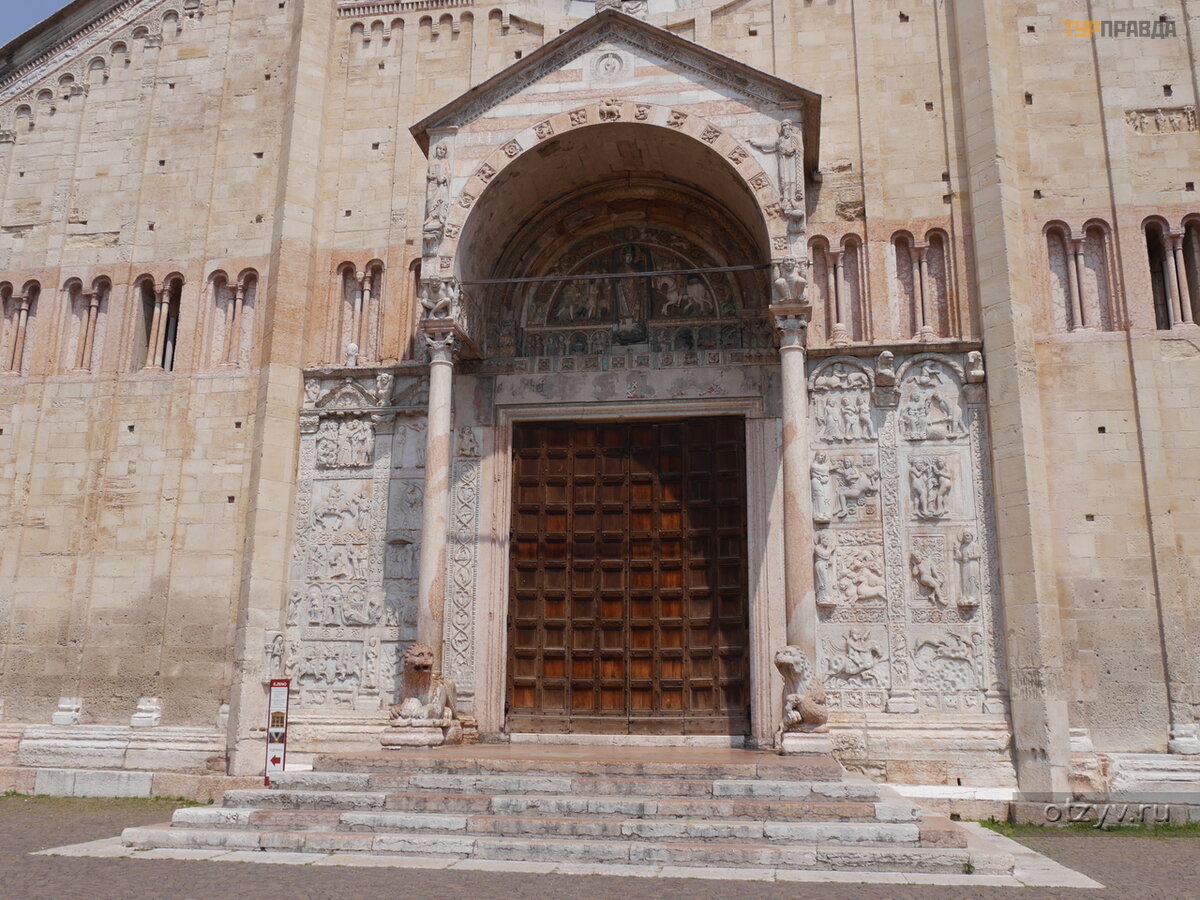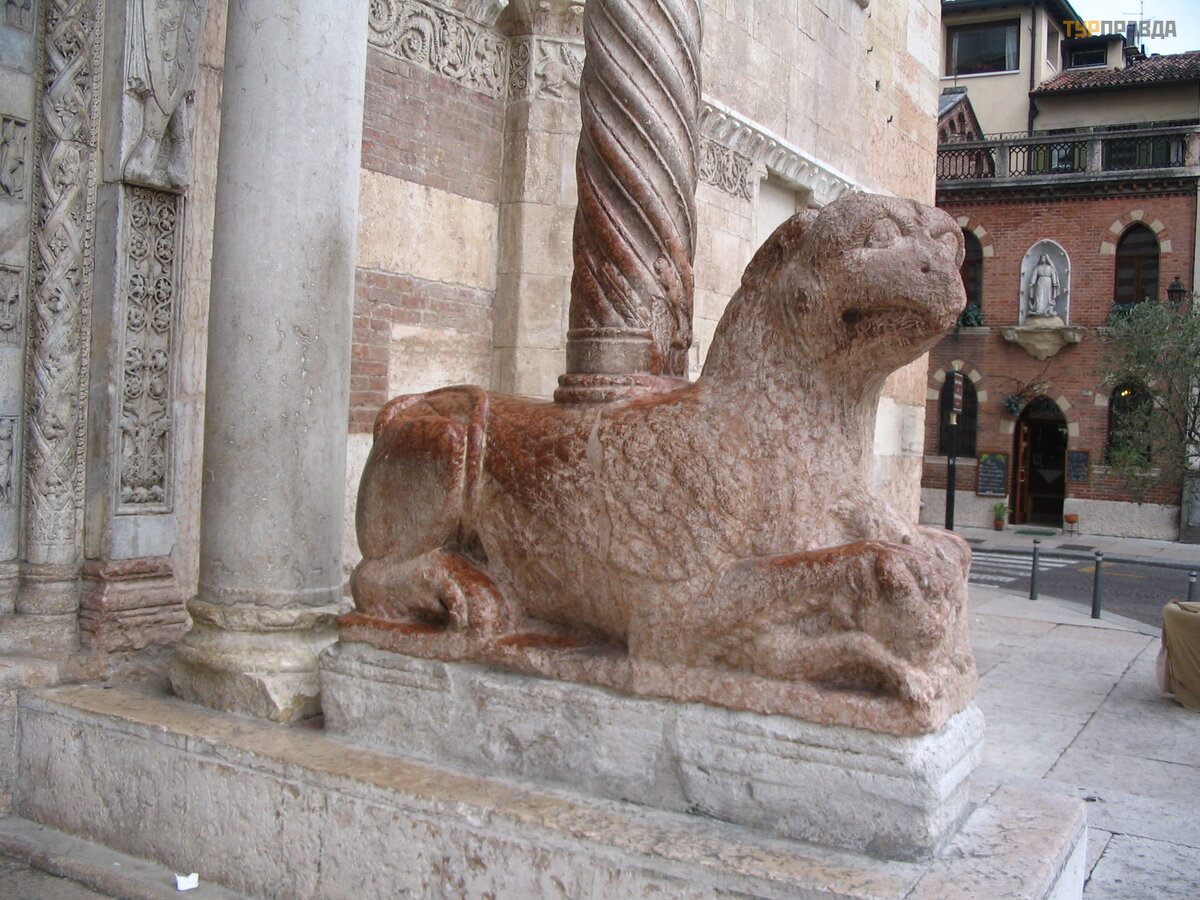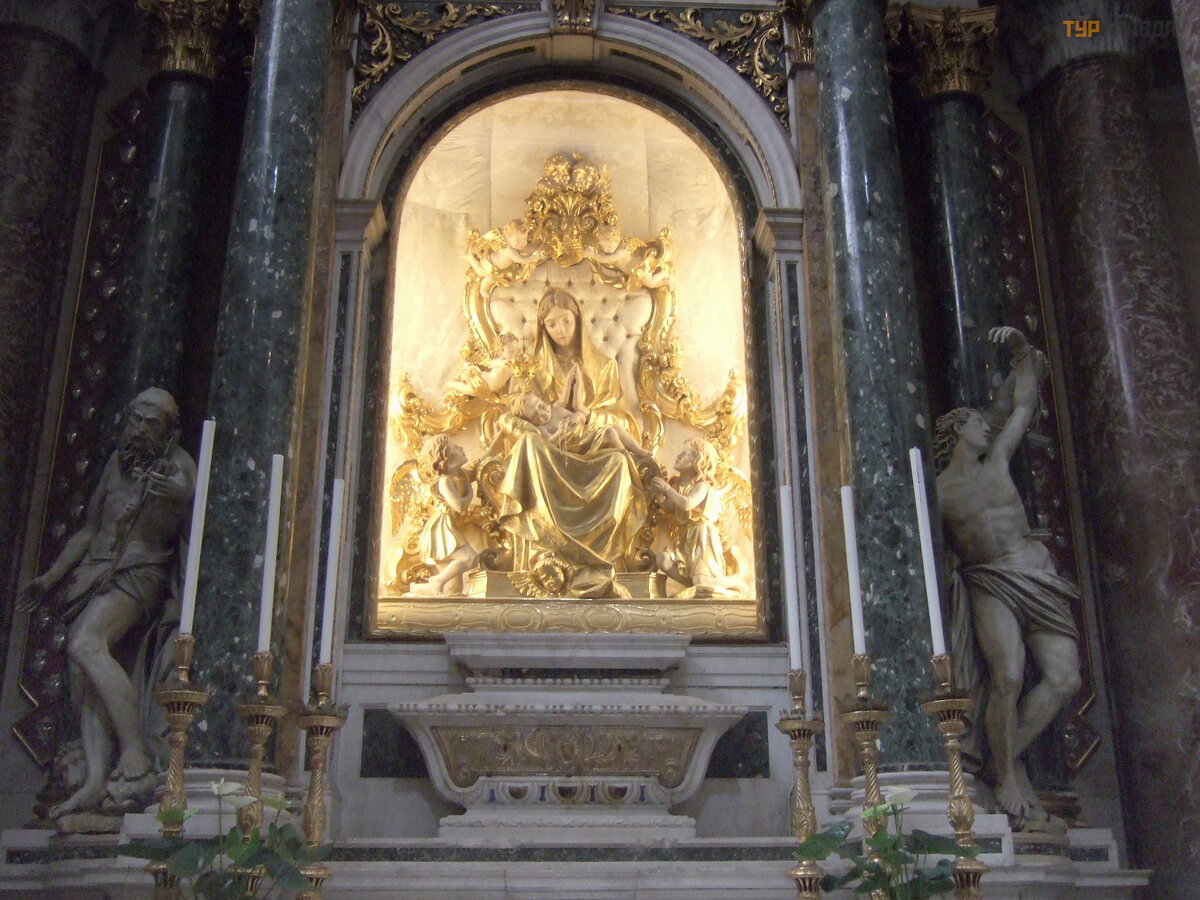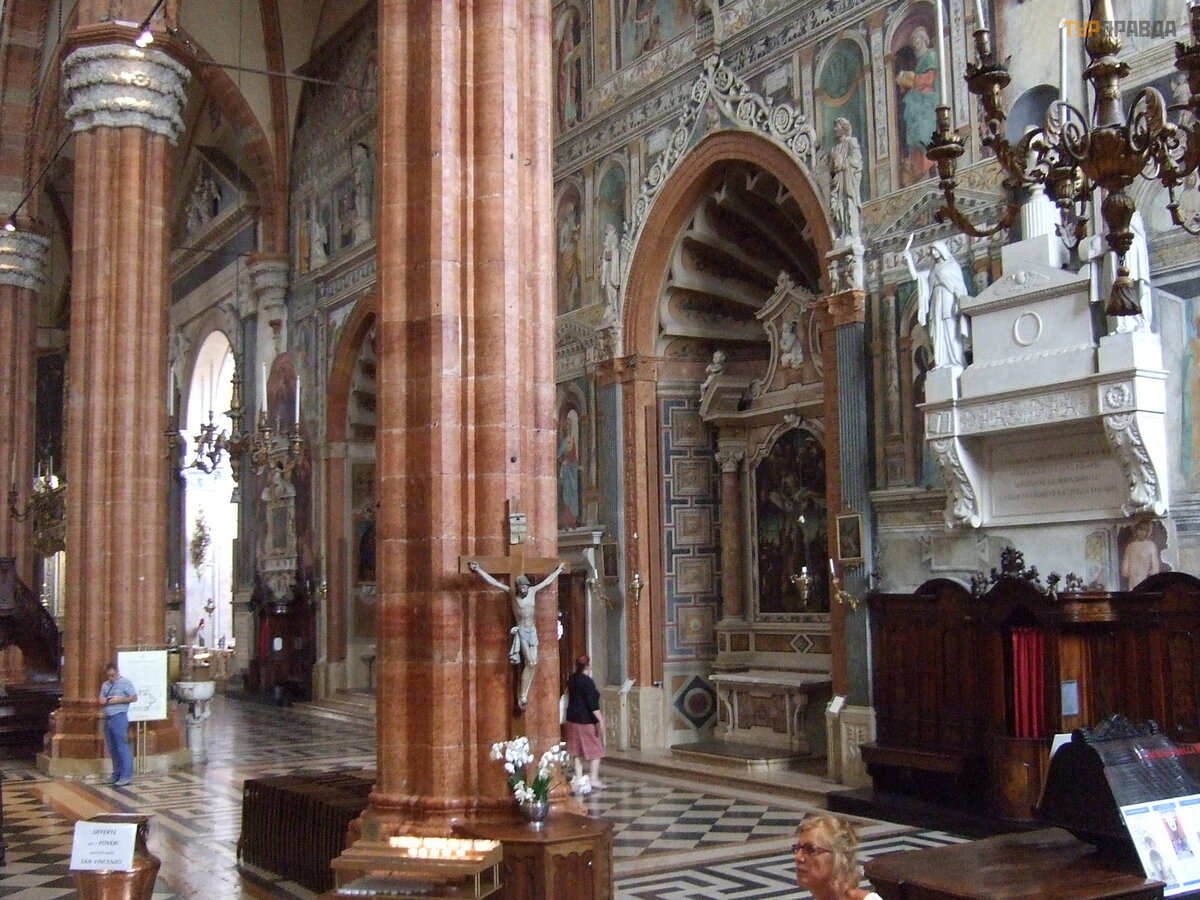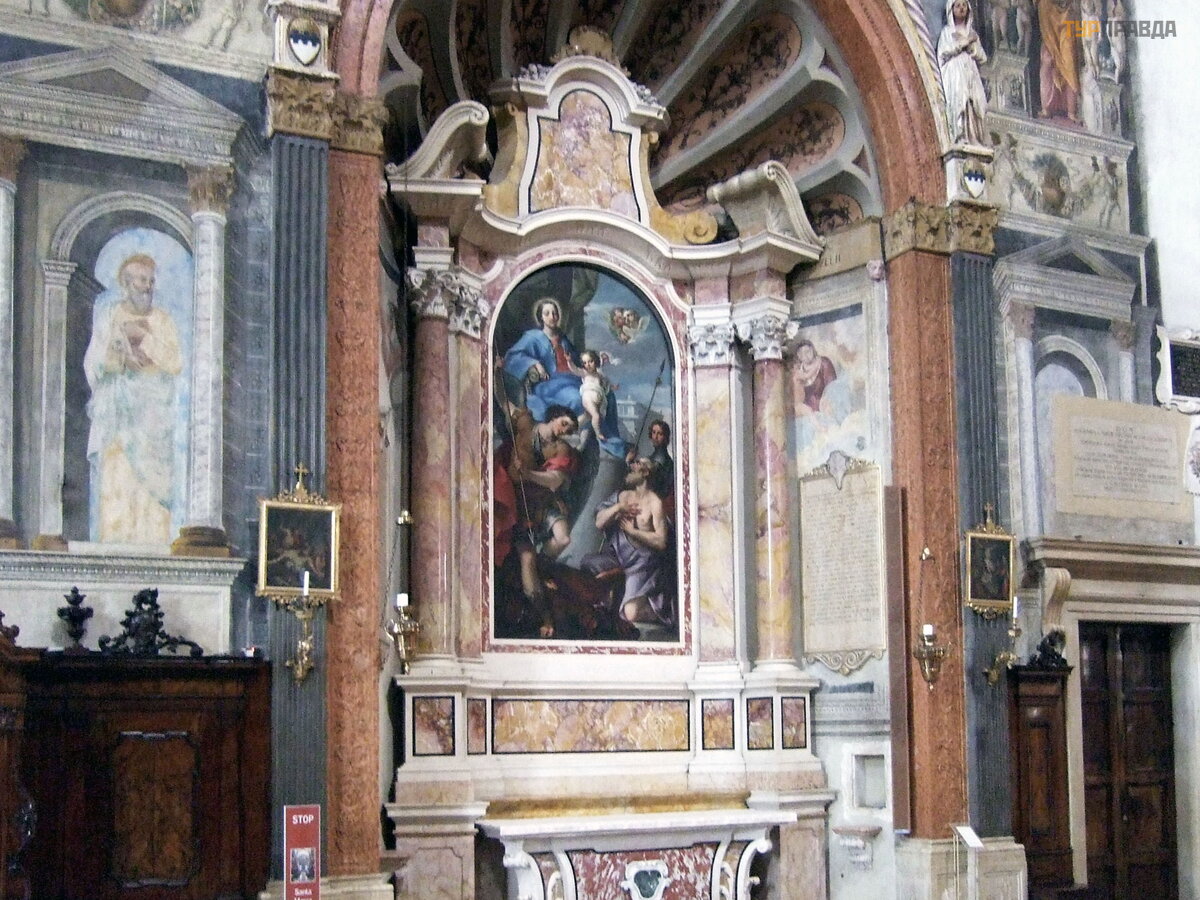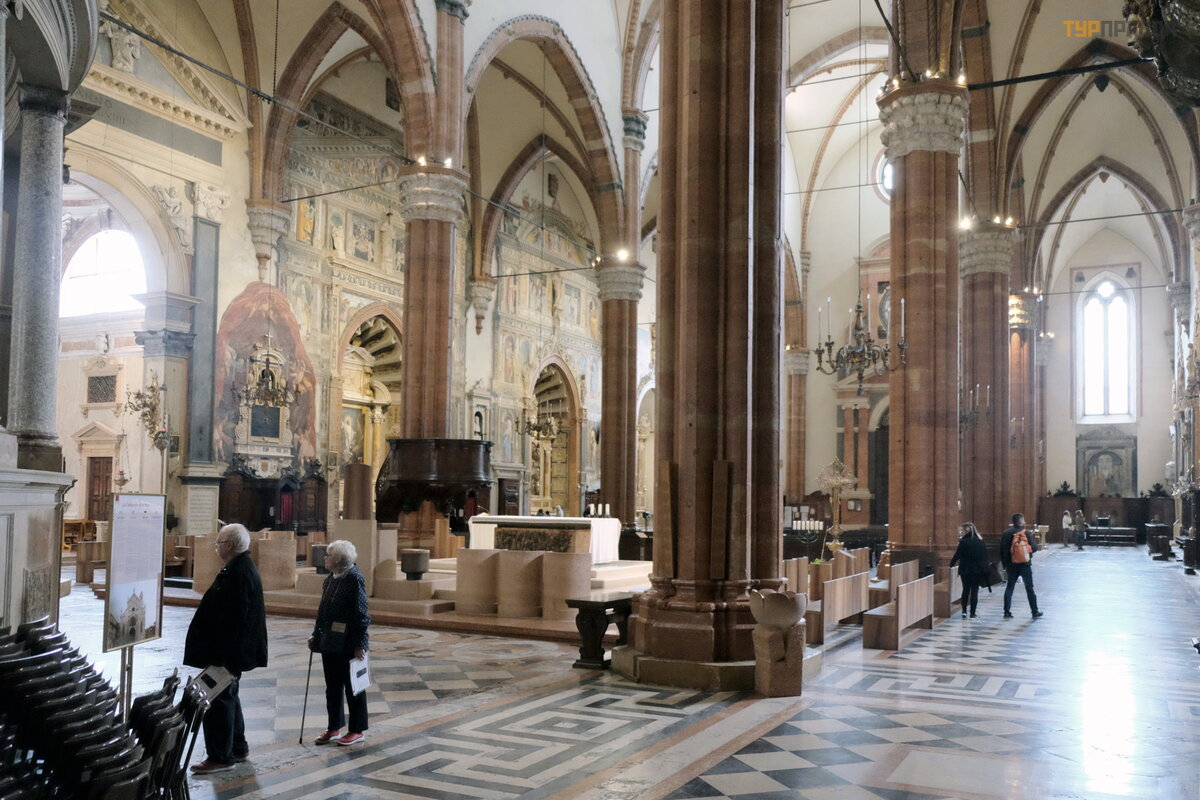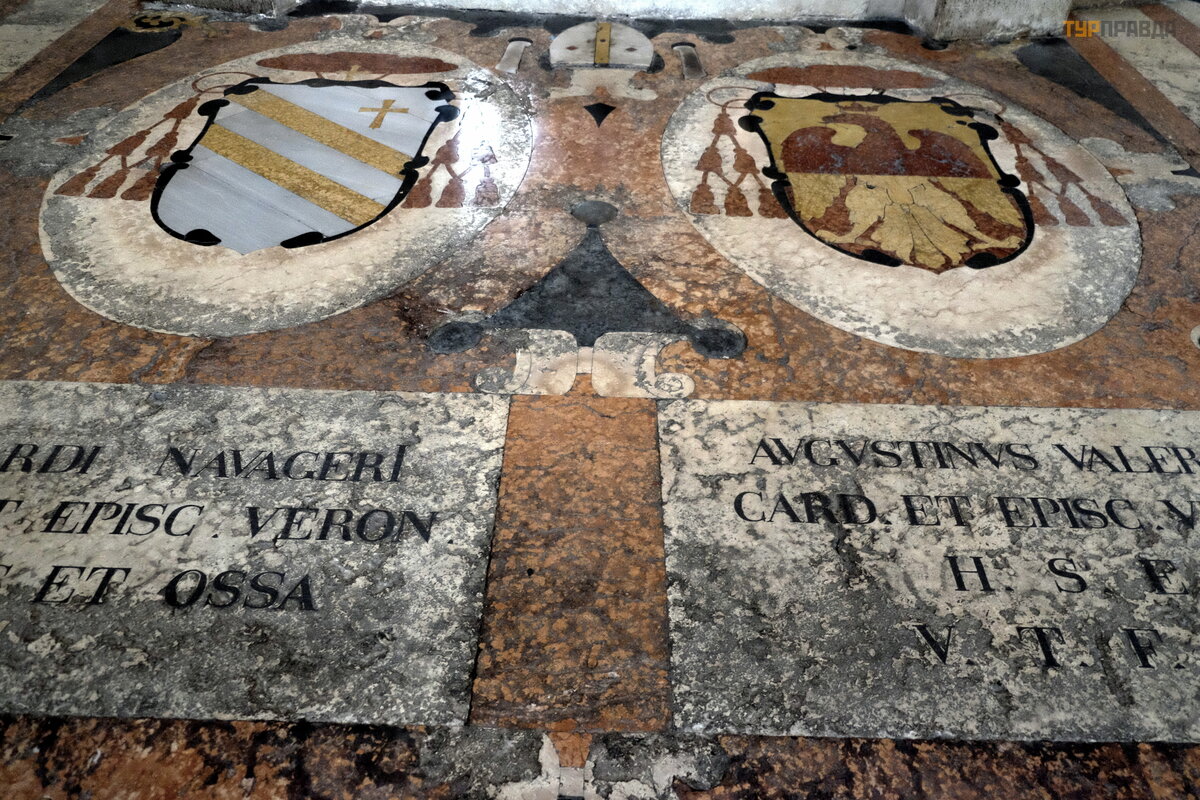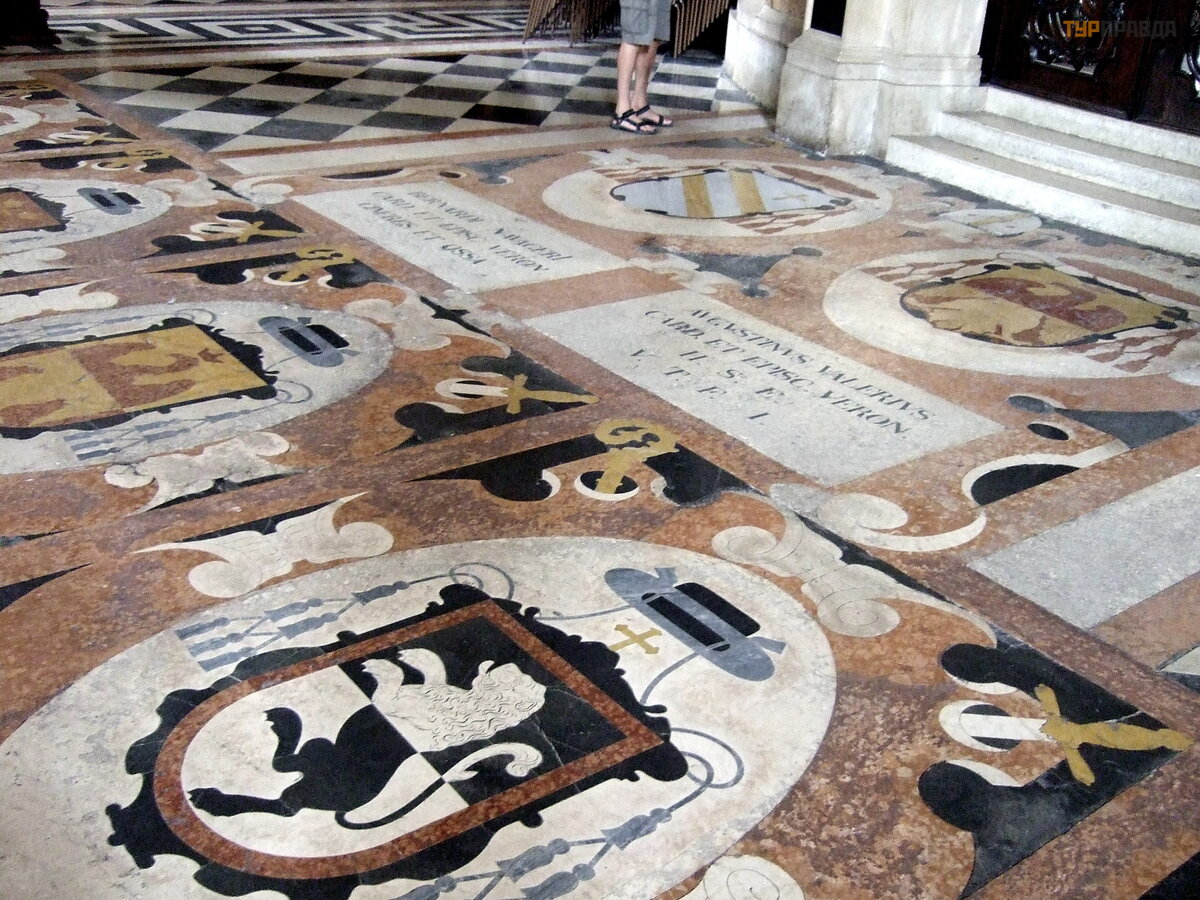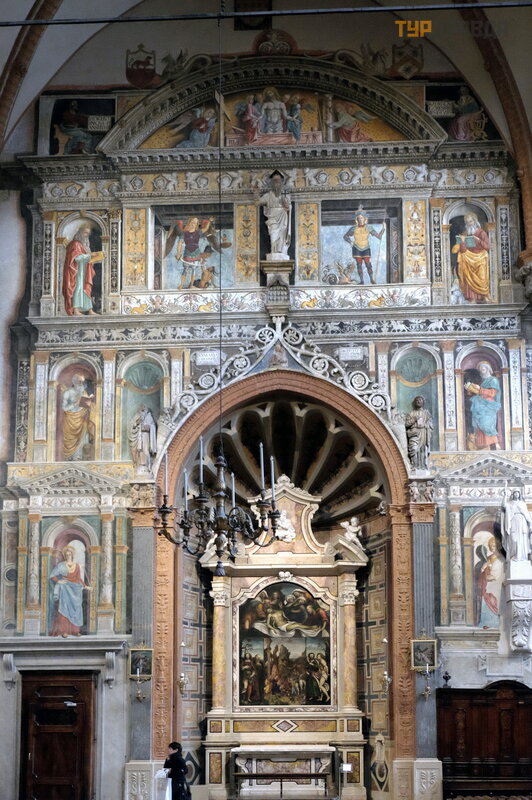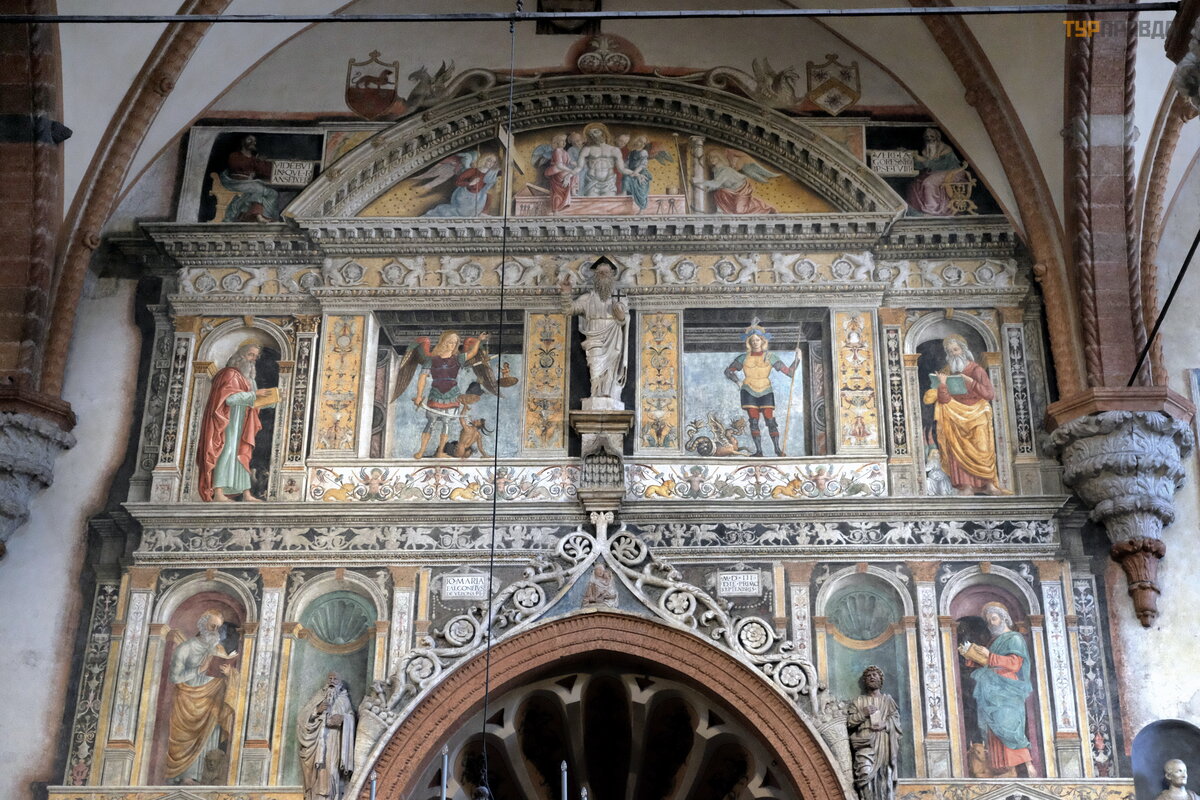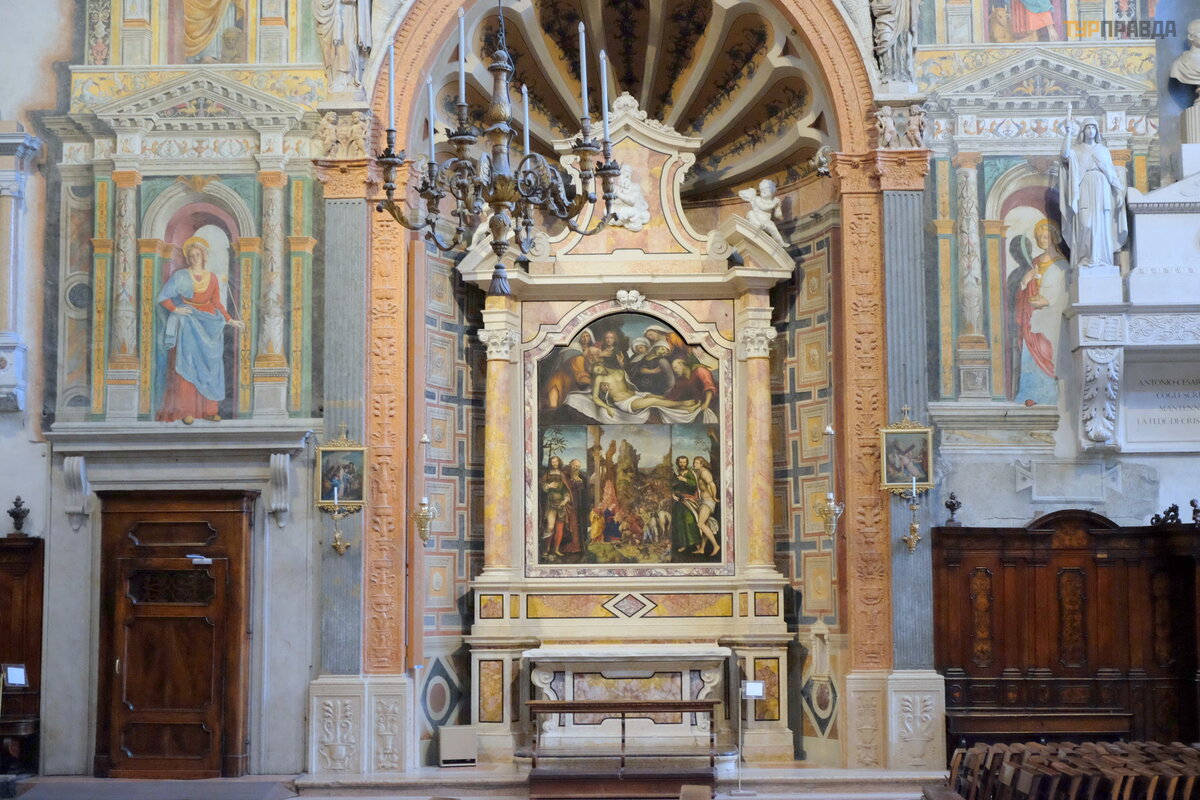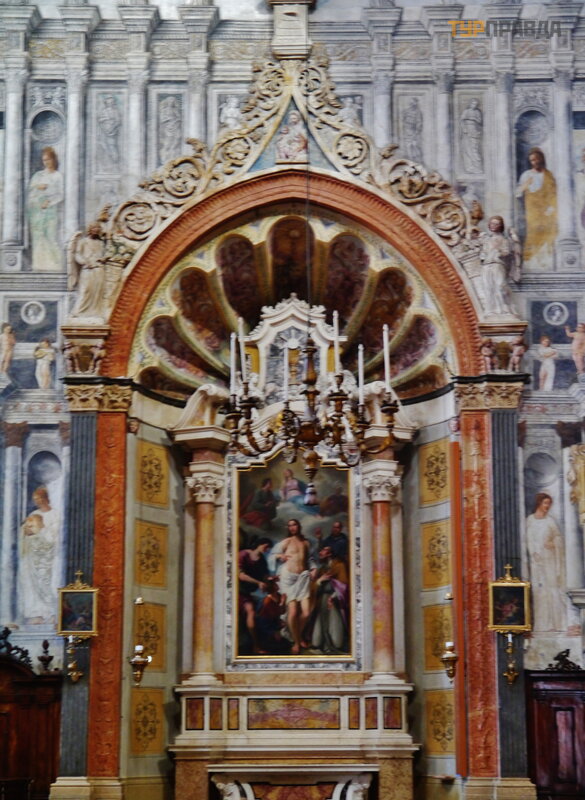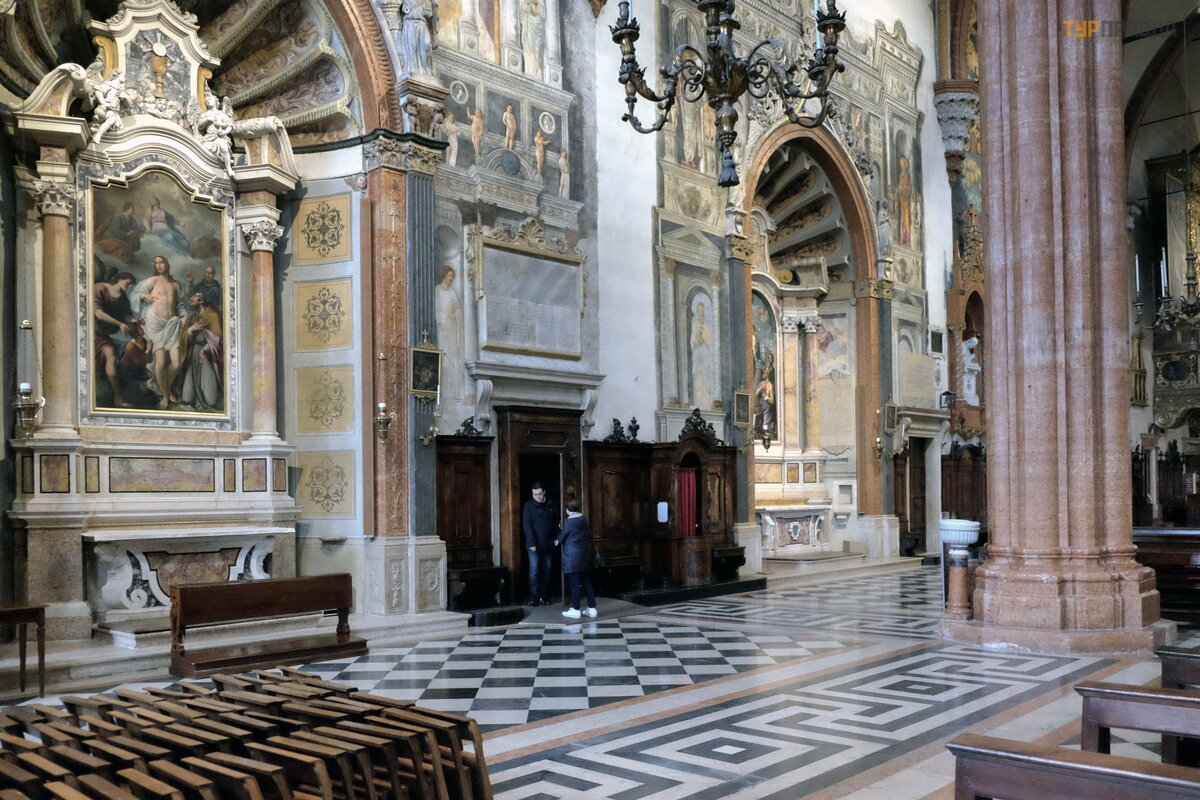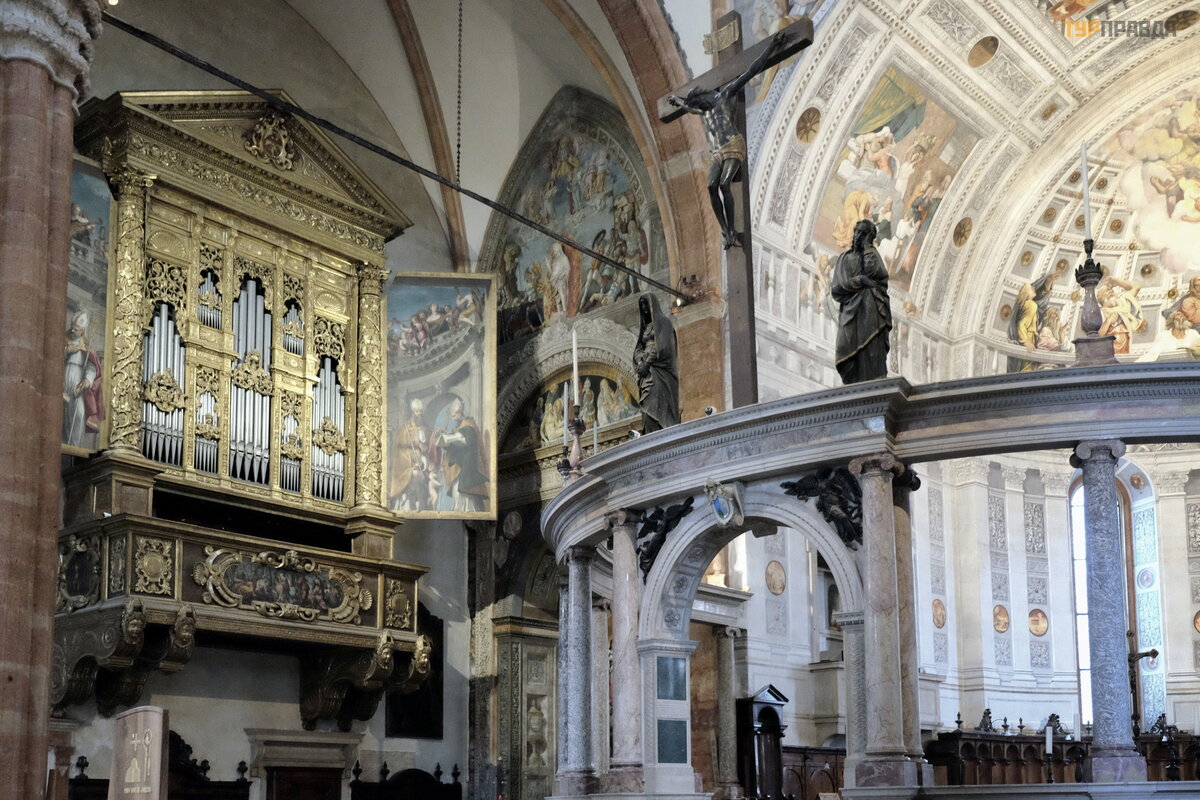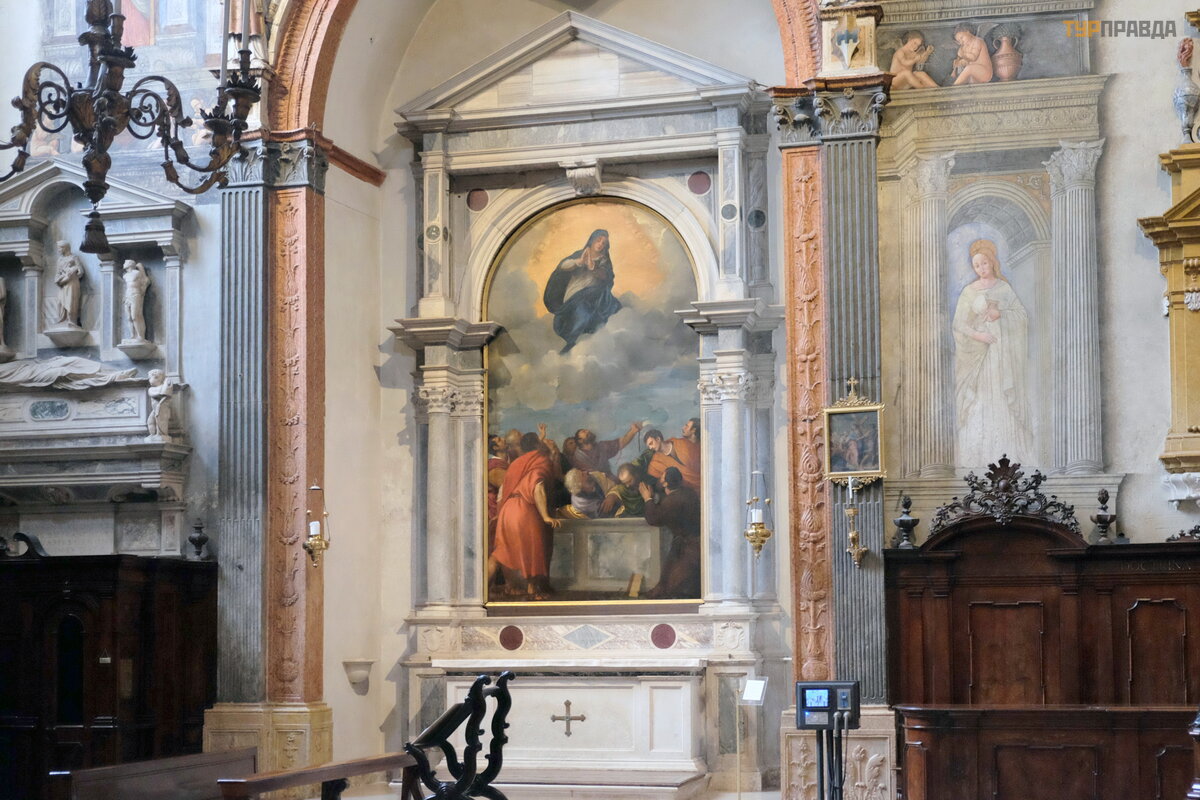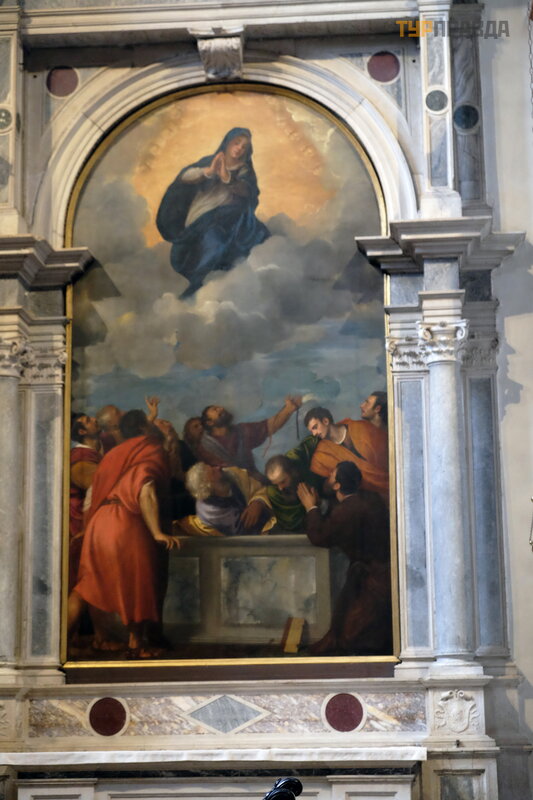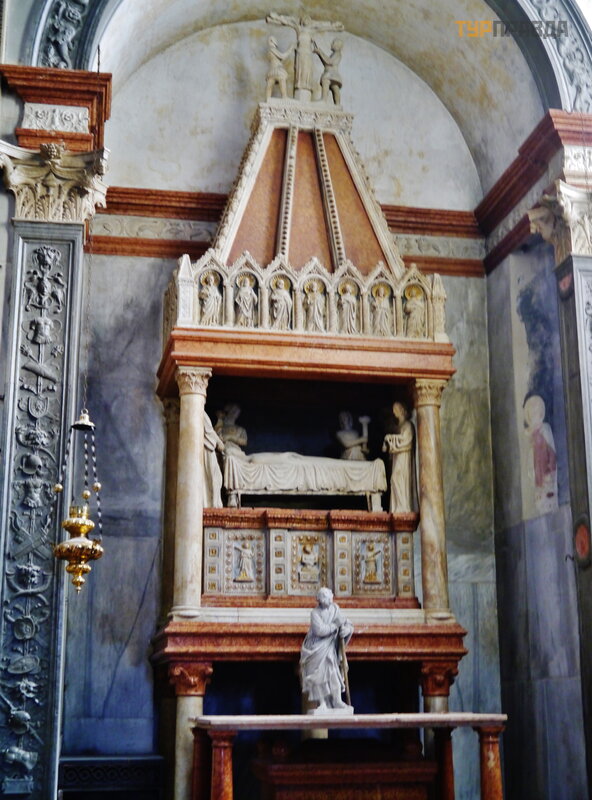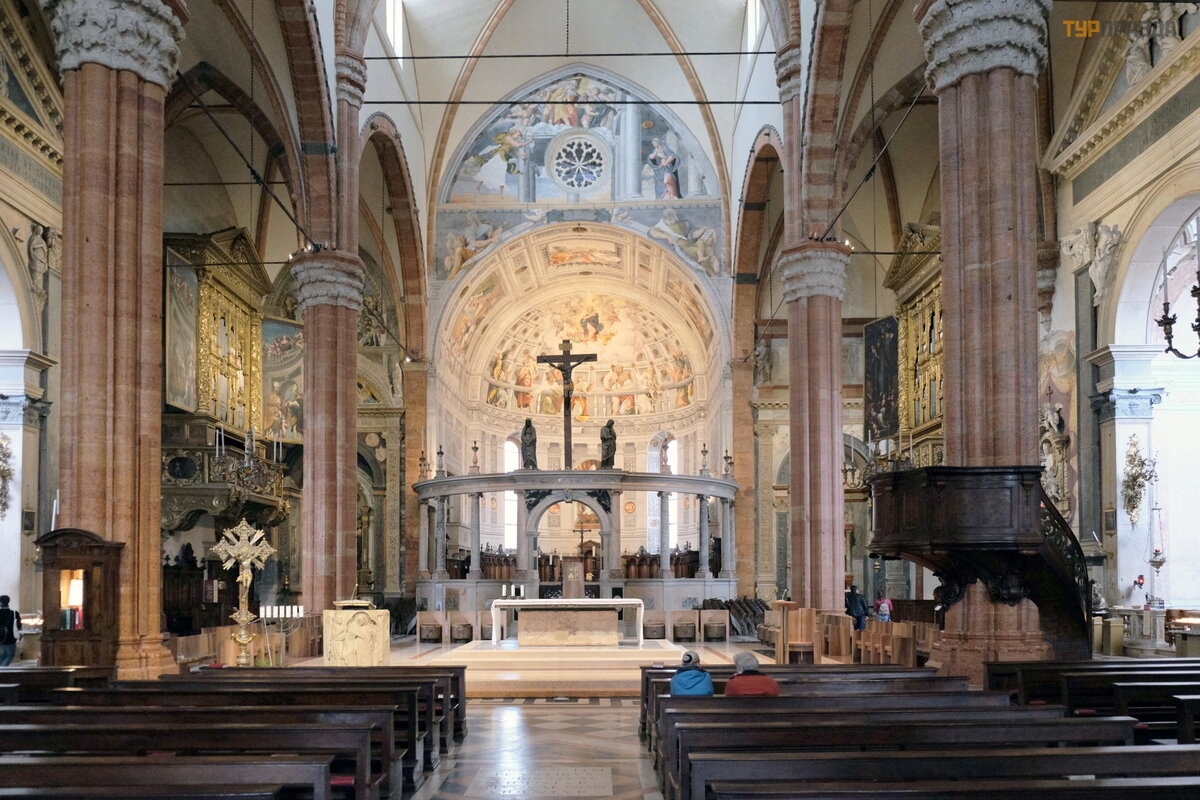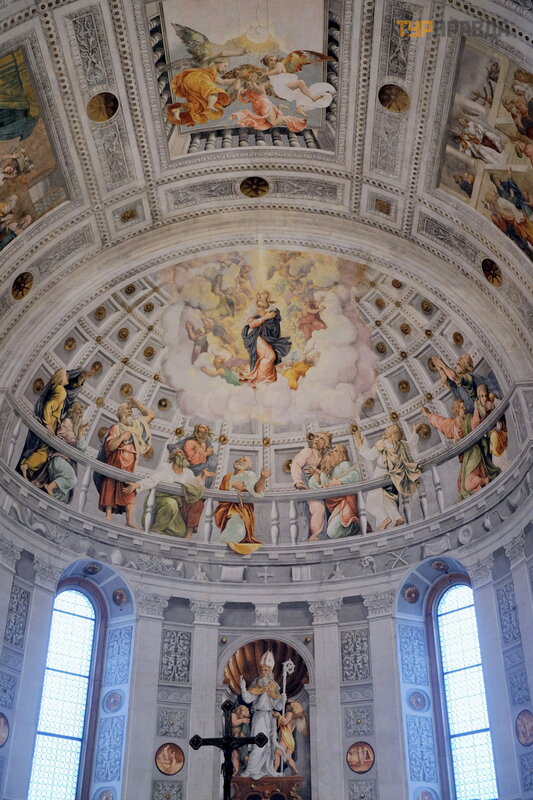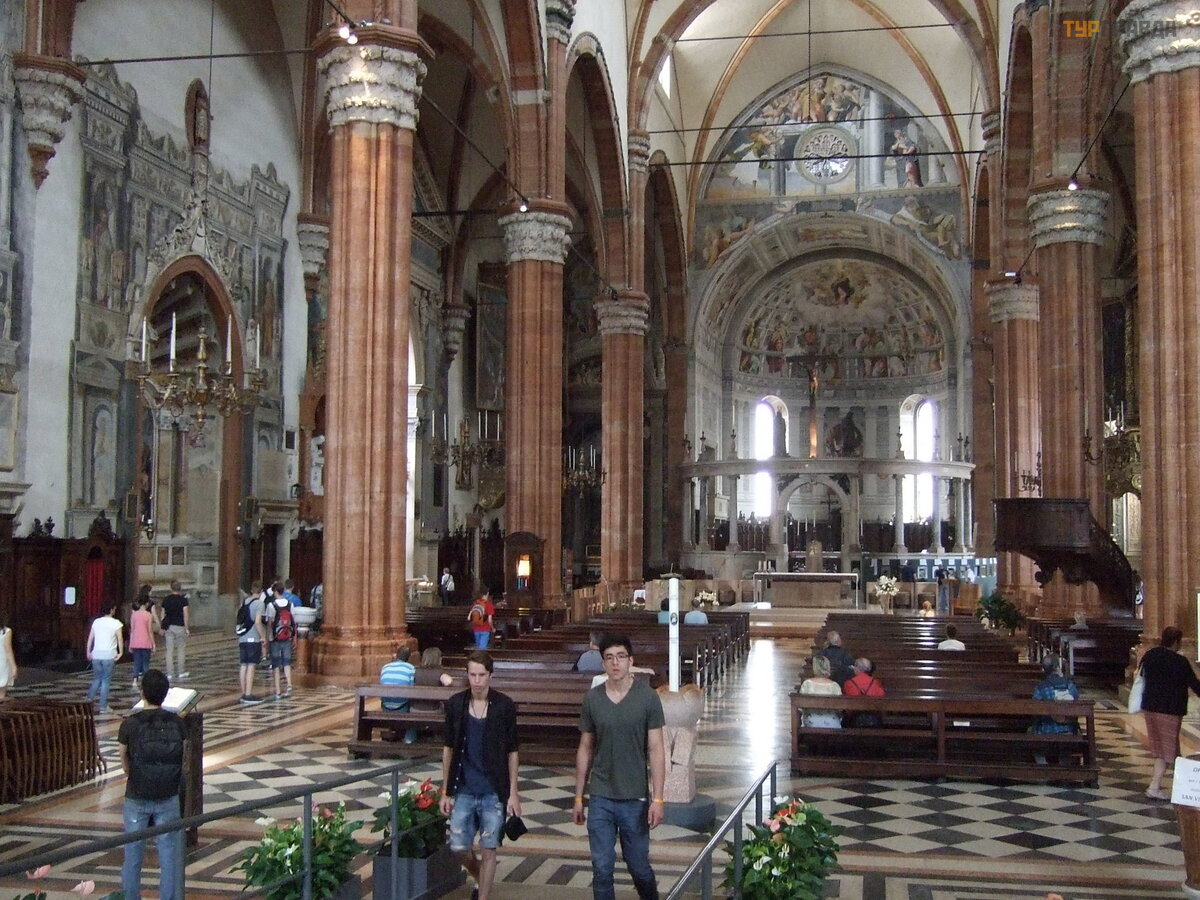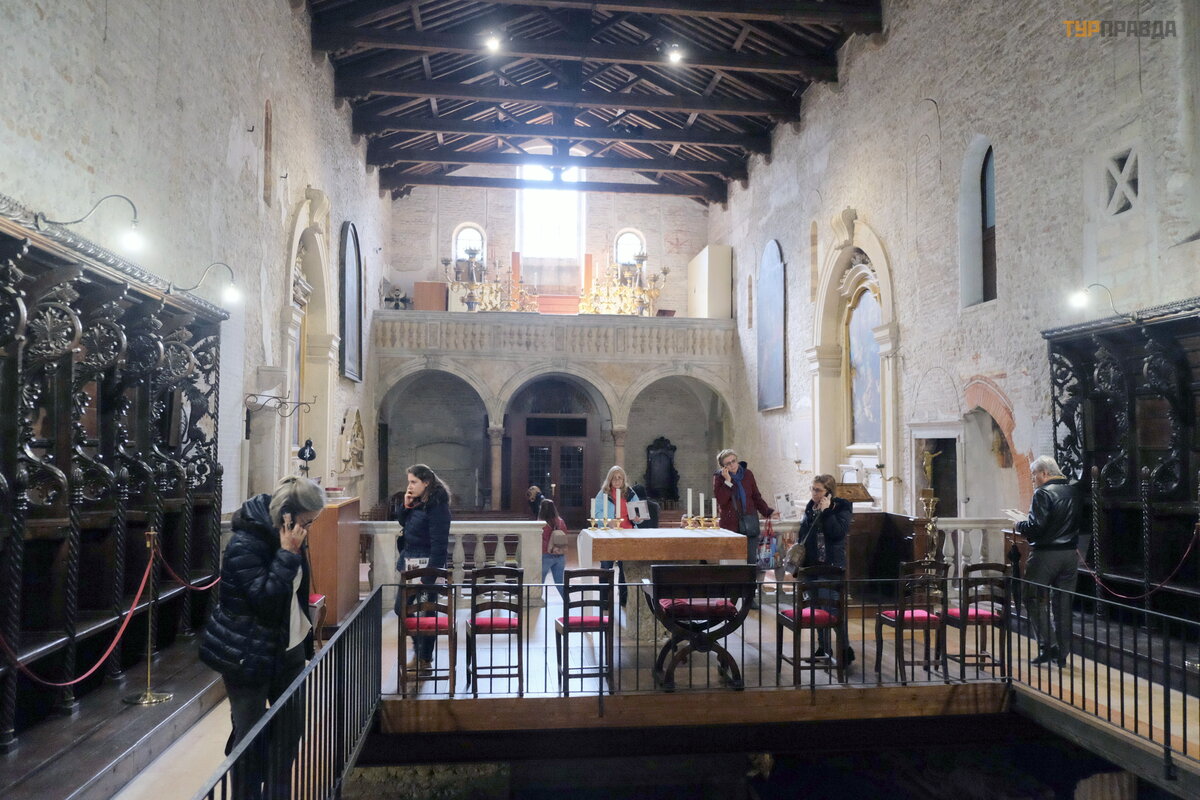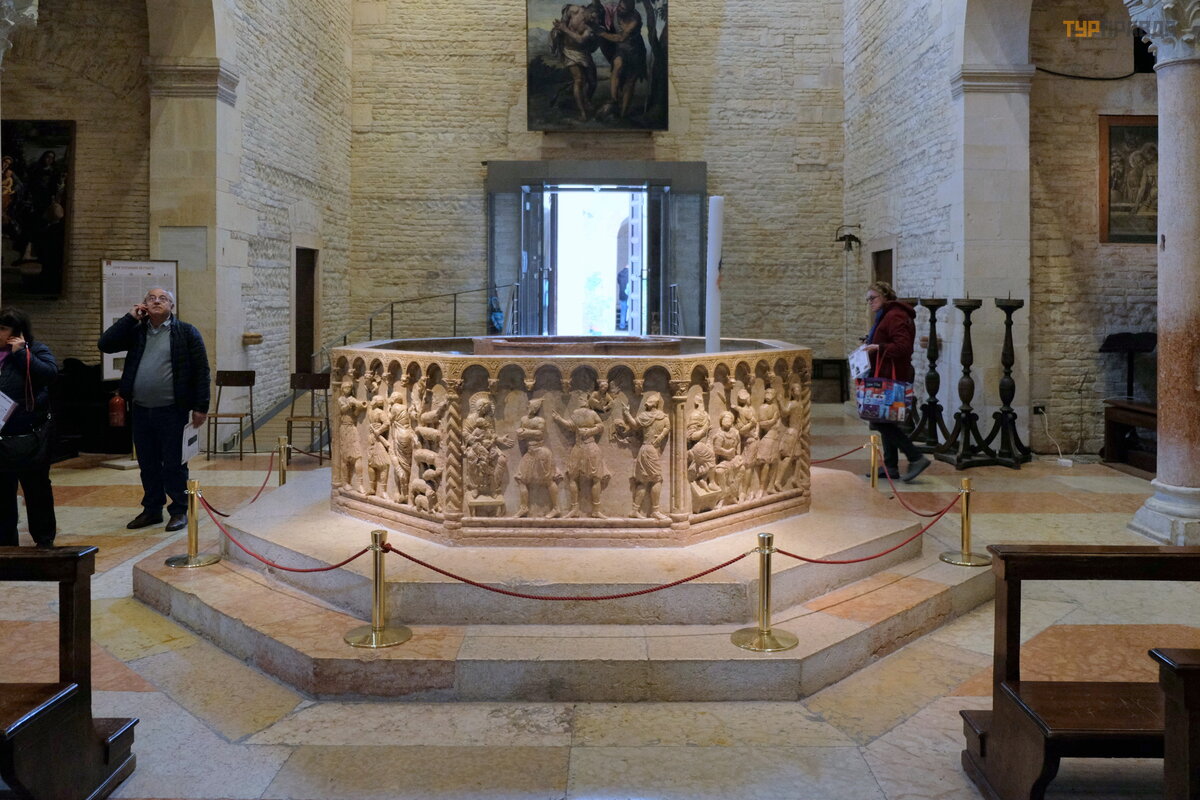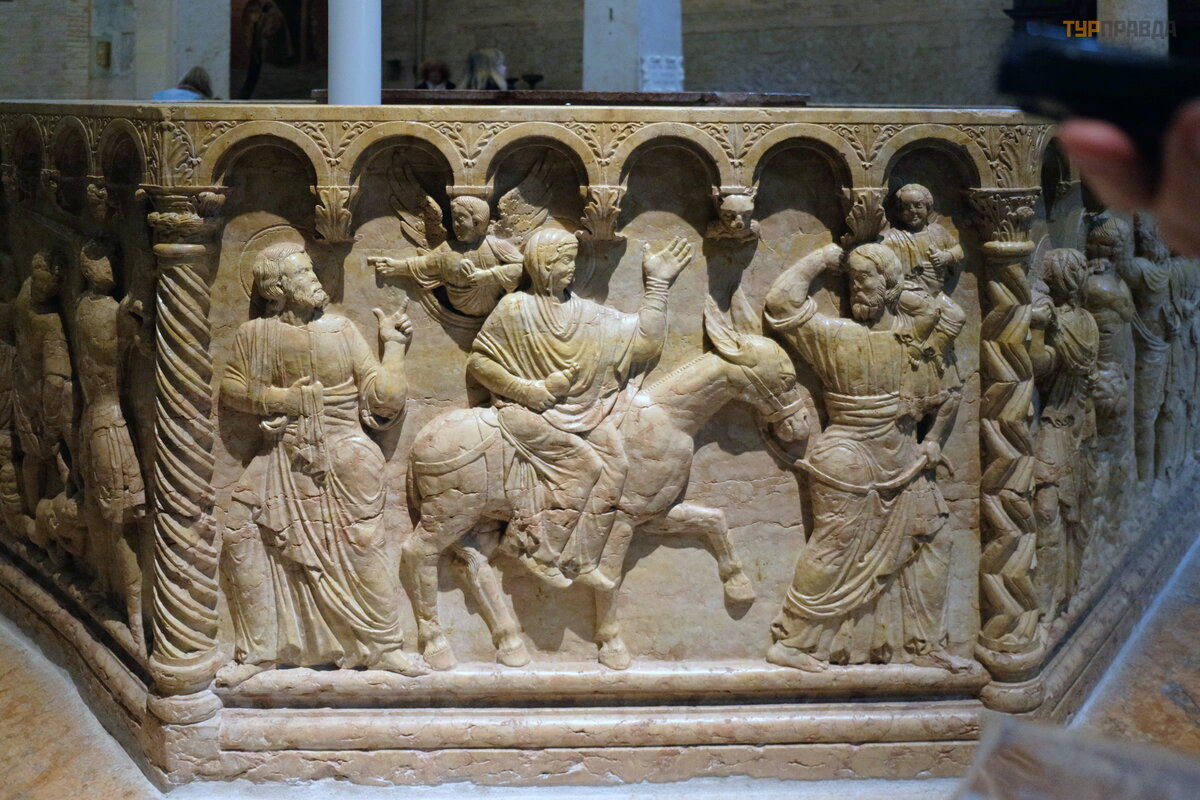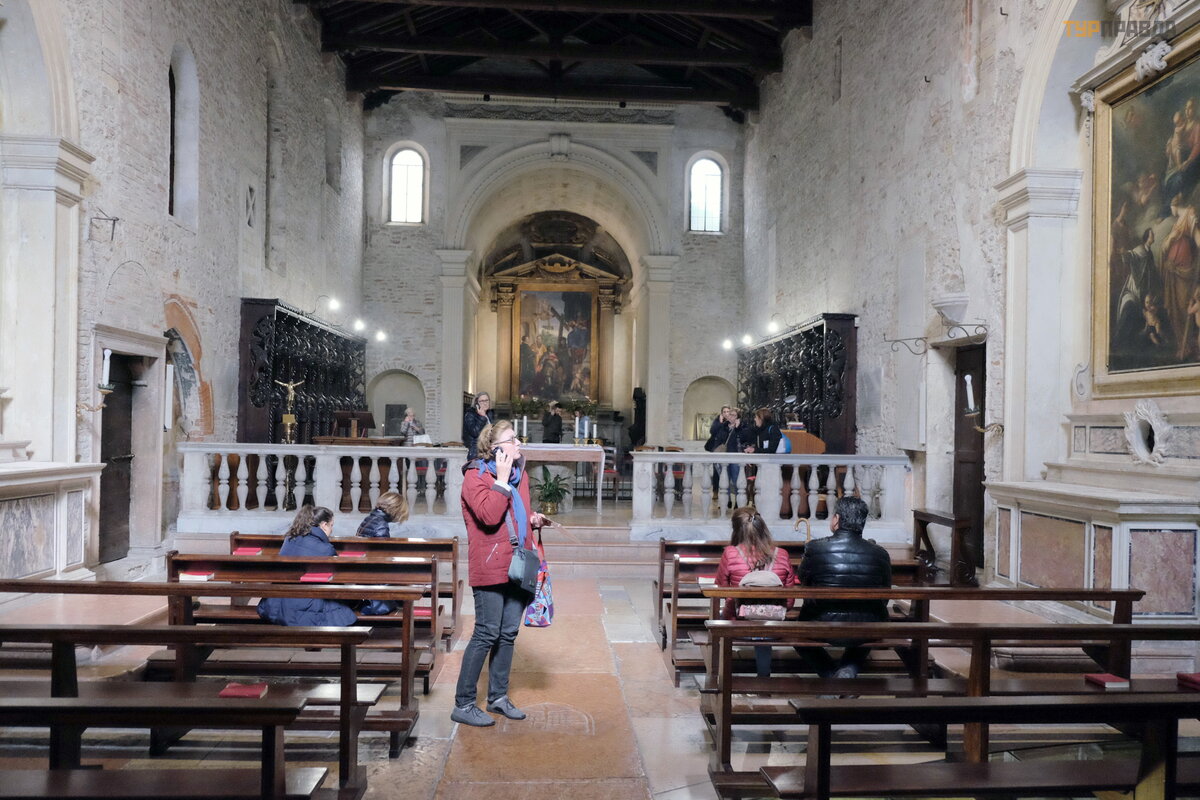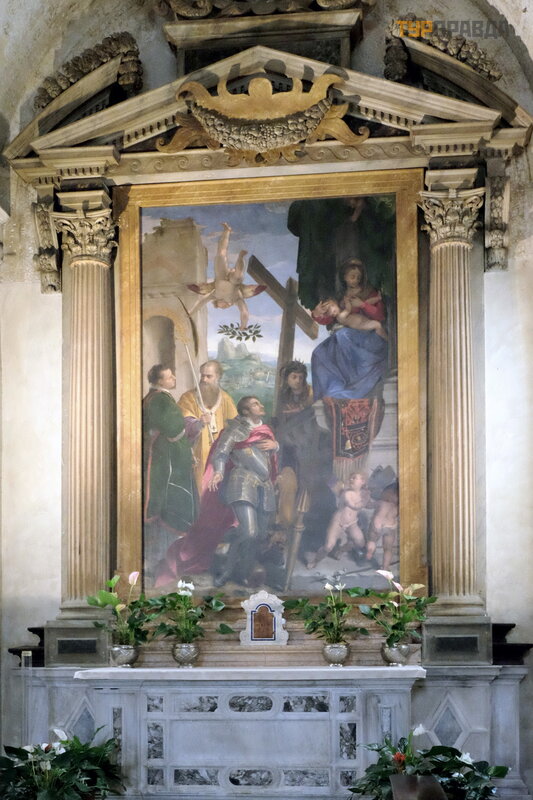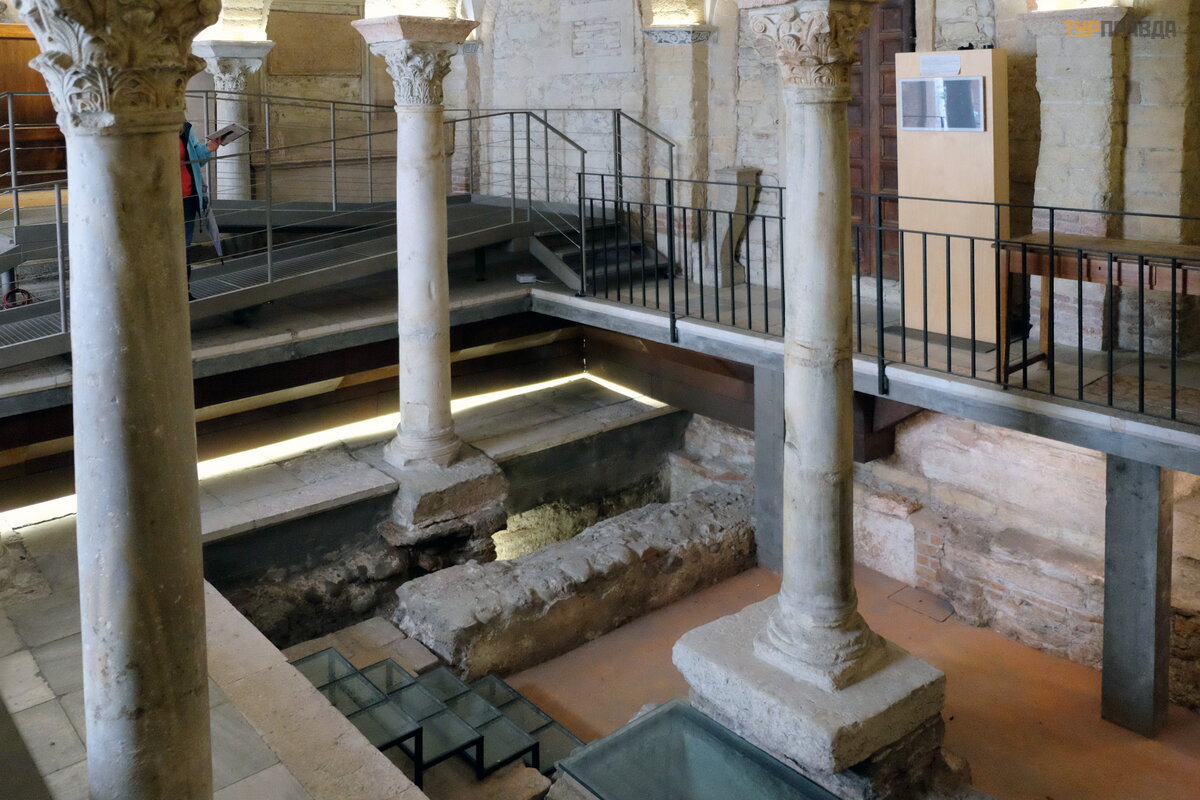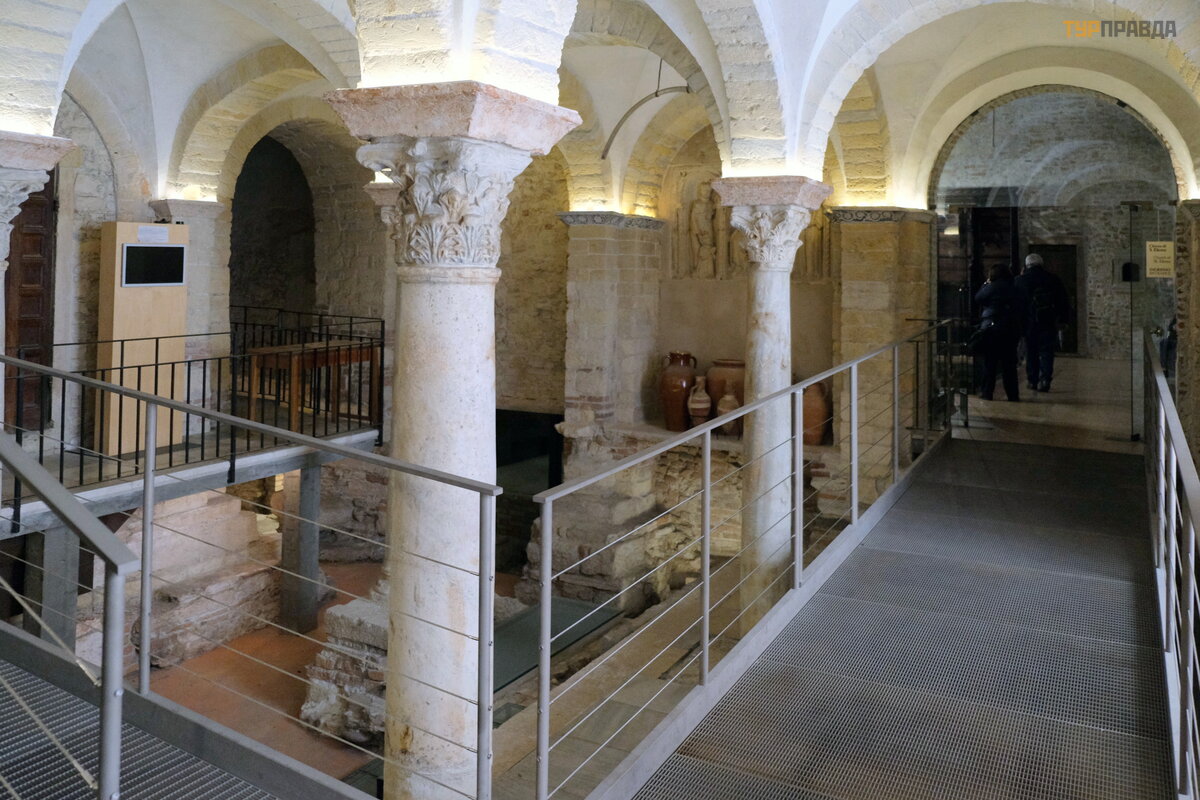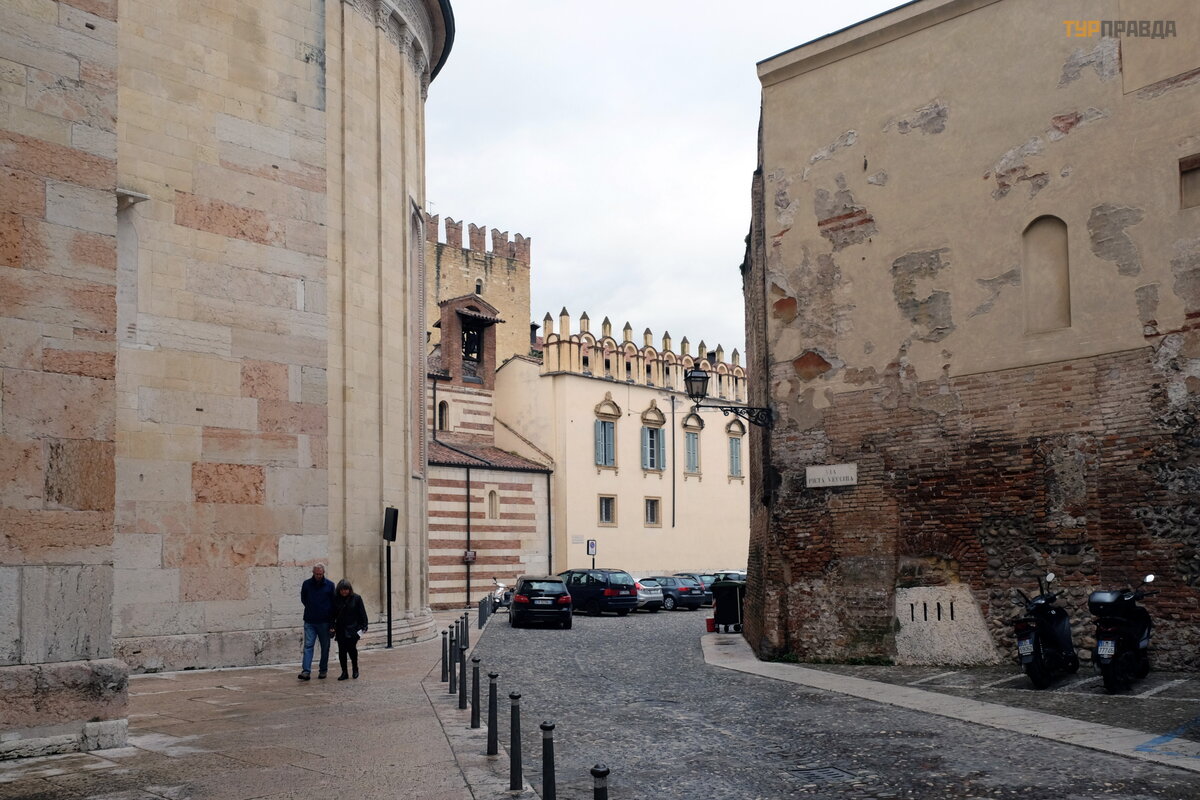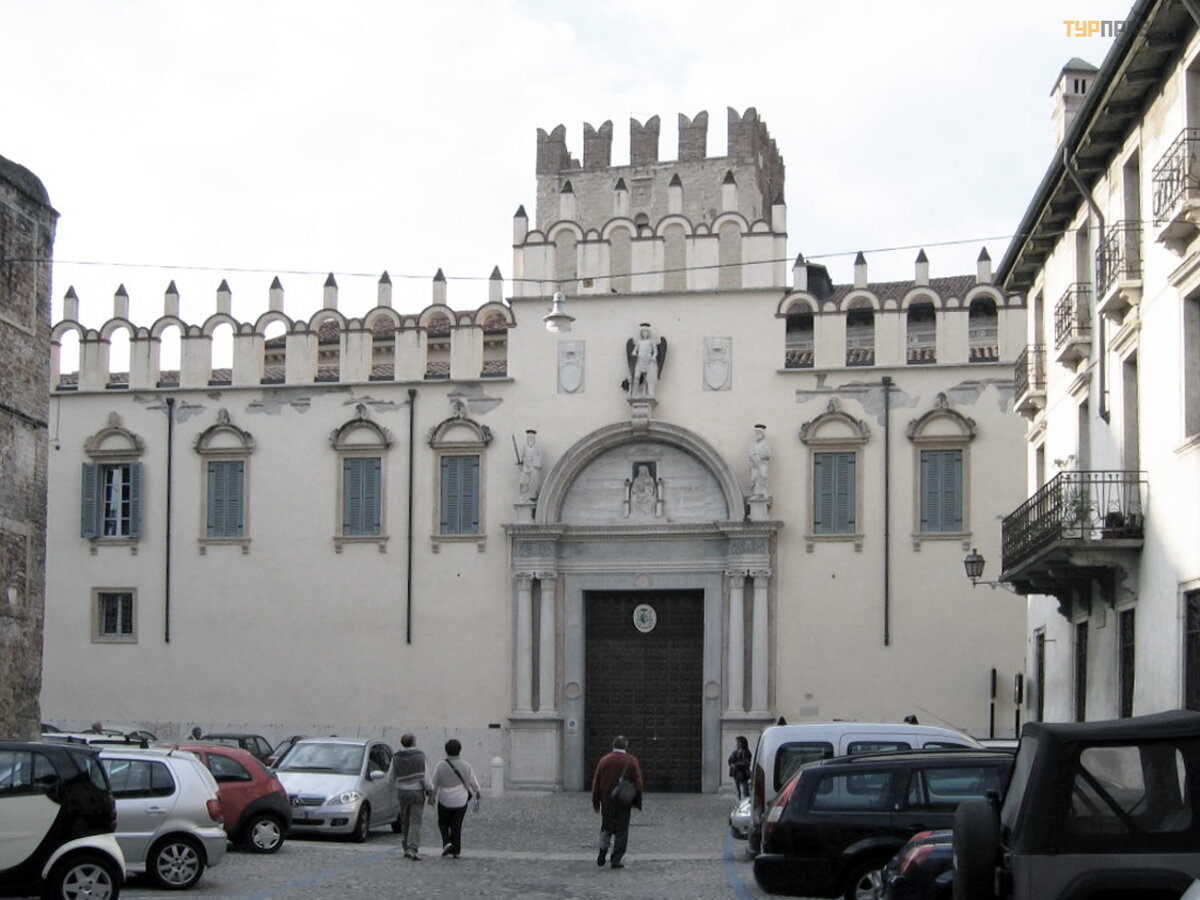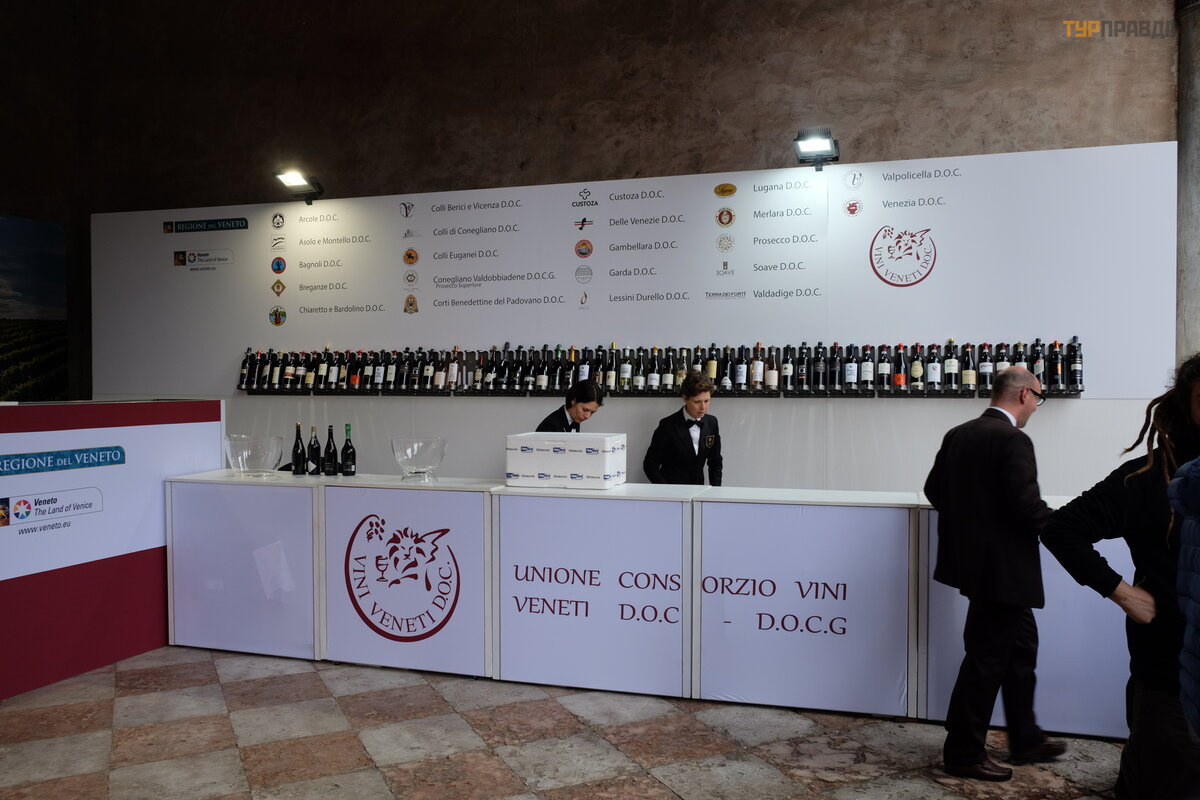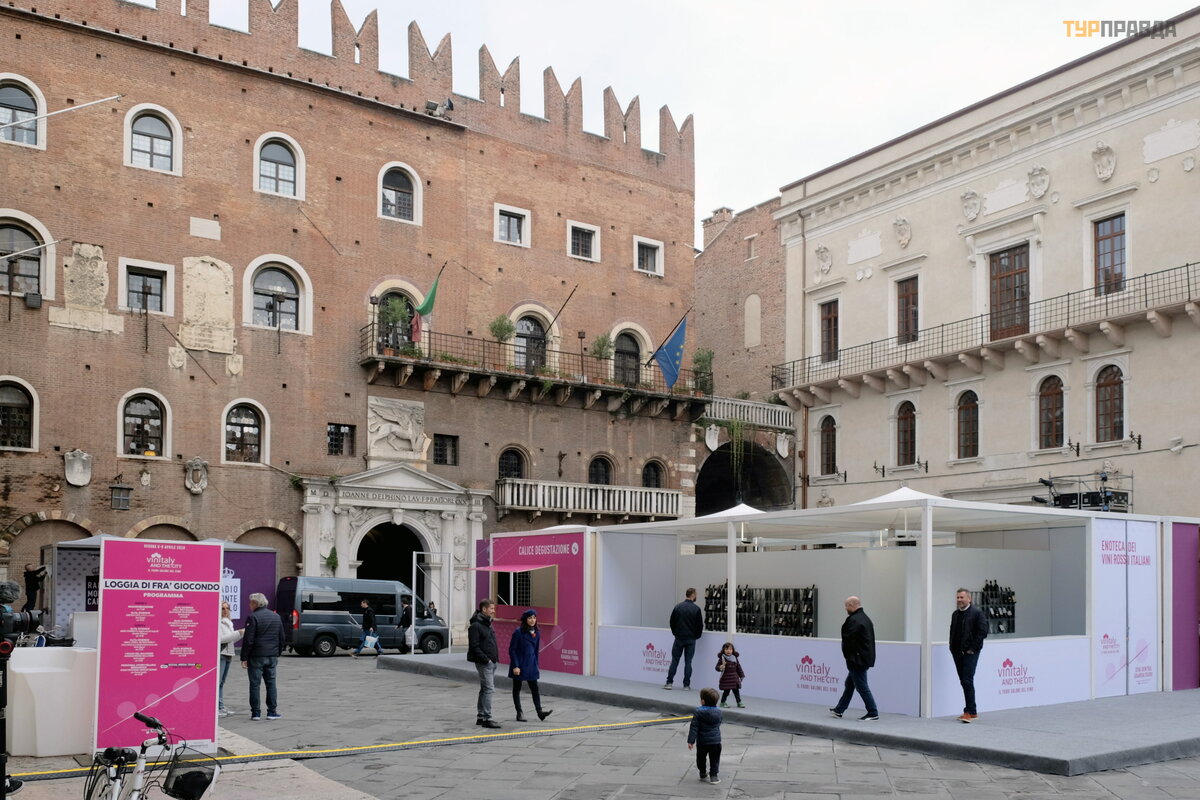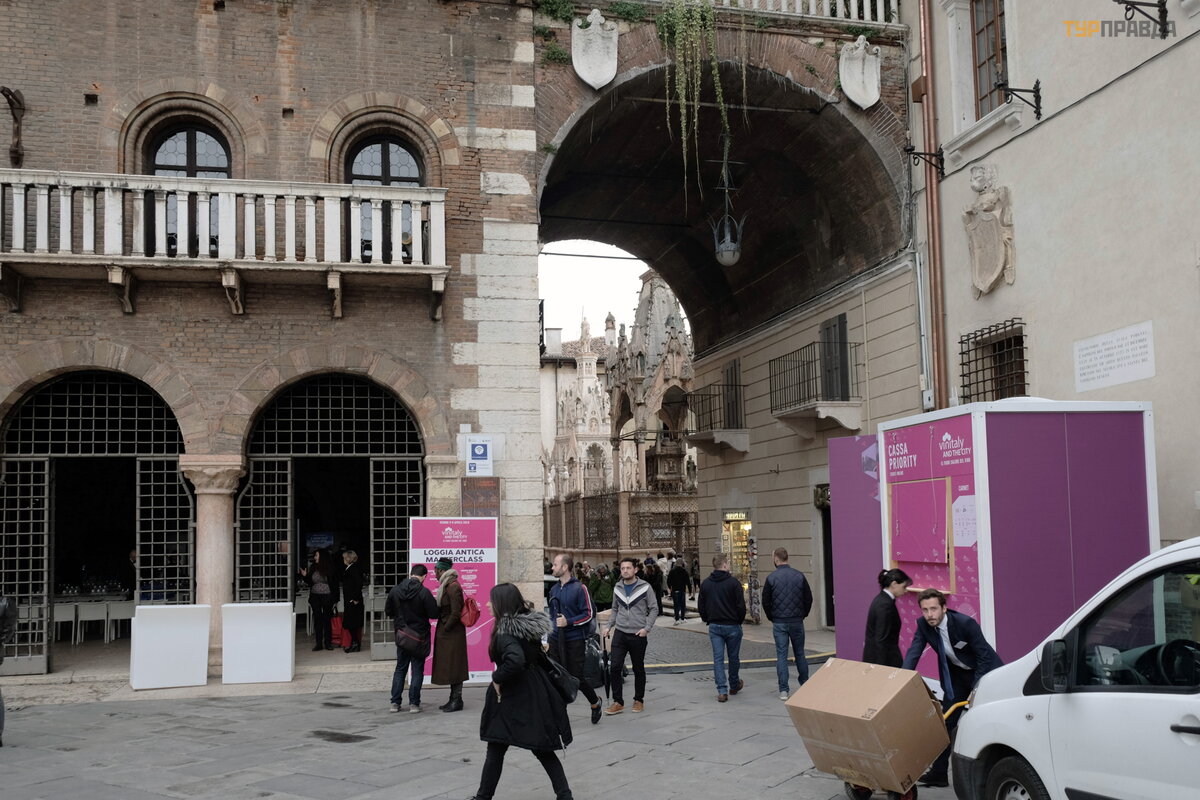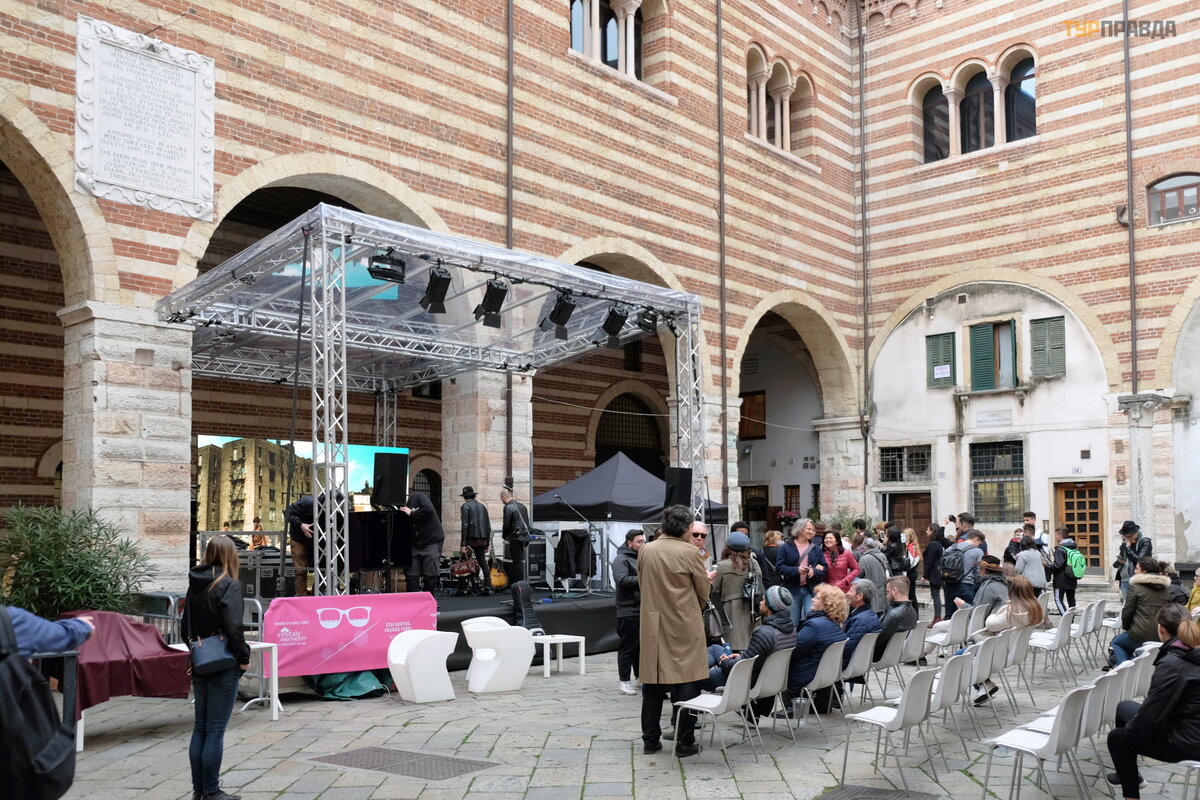Spring trip to Italy. Part 7. Verona (continued)

A spring trip to Italy. Part 1. Trento >>>
A spring trip to Italy. Part 2. Mantova >>>
A spring trip to Italy. Part 3. Brescia >>>
A spring trip to Italy. Part 4. Treviso >>>
A spring trip to Italy. Part 5. Vicenza >>>
A spring trip to Italy. Part 6. Padua >>>
A spring trip to Italy. Part 7. Verona (beginning) >>>
The next day the weather improved, although it was cloudy and we went to explore the city further. We again entered the Old Town through the gates of Porta Palio and headed to the "old castle" - Castelvecchio (Castelvecchio), dating back to the Scaligeri era, belonging to the Della Scala family. It is a complex of gigantic proportions, which includes a defensive bridge with battlements thrown across the Adige.
Only the lazy did not joke about the similarity with the Moscow Kremlin, I will explain why different palaces have different forms of battlements. In the 12th-14th centuries, a struggle broke out in Italy between the Guelphs (supporting the power of the Pope) and the Ghibellines (supporting the power of the Holy Roman Emperor). The Guelphs had square crenellations, the Ghibellines had swallowtails. During the construction of the Moscow Kremlin, architects from Italy decided to make crenellations, like those of the Ghibellines. The Moscow sovereigns certainly did not support the pope.
In the castle there is a very interesting city museum of Castelvecchio (Museo di Castelvecchio) with a wonderful art gallery, which we visited several years ago. At present, six powerful towers rise along the perimeter of the castle, surrounded by a deep moat, where the waters of the Adigetto canal flow.
The highest and most powerful donjon tower Mastio dominates the entire ensemble.
The Scaliger Bridge, an ancient bridge across the Adige River, leads to the castle. Known for its extraordinary strength, thanks to which it stood without repairs and reconstructions for more than five centuries. Another name for the building is Castelvecchio Bridge, which in Italian indicates belonging to the old castle. It was designed by Guglielmo Bevilacqua, a renowned architect of the day, who provided the Duke of Cangrande II della Scala and his family with this project a safe and secure escape route in the event of a rebellion.
Near Castelvecchio, a monument of the Roman era - the Triumphal Arch of the Gavi family, built in the 1st century AD. e. One of the rare monuments of the Roman era, dedicated to a noble family, and not to emperors,
and brought to us the name of the author - Lucio Vitruvio Cedrone. In 1805, the arch was destroyed by French troops, because it interfered with the movement of troops and vehicles. Only in 1932, the Arch dei Gavi was restored and reconstructed.
We went to the central highway of Verona, which runs through the entire Old Town. The streets (Corso) succeed each other under different names: Castelvecchio, Cavour, Bossano, Sant'Anastasia. Very close is the church of San Lorenzo, past which all tourists run along the way. To find it, you need to go through an acute-angled arch from Cavour Avenue.
San Lorenzo (Chiesa di San Lorenzo) - Catholic, dedicated to St. Lawrence of Rome. Founded in the 8th century. The church was rebuilt several times: in the 15th century, a bell tower was added to it, and later, a Renaissance side portico.
Despite this, the church is a valuable example of the Romanesque style with a number of elements of Norman and Byzantine architecture.
Among them are matroneum, galleries intended for women. Located on the upper tiers of the side aisles, they are reached by spiral staircases built into round towers that stand out on the facade of the church.
The interior of the temple has been preserved since the 12th century.
Opposite, behind the monument to the poet and public figure Aleardi in a small square, there is another church that bears the same name - Piazzetta Santi Apostoli.
The Church of the Holy Apostles was built in the 12th century on the site of an earlier church from the 8th century. During its long life, the church was repeatedly rebuilt.
During the Second World War, the church was damaged in the bombing and once again underwent reconstruction and restoration.
We pass Porta Borsari (Porta Borsari) - a monument of ancient Roman architecture in the city. Porta Borsari was built in the 1st century AD. e. as a military outpost in the south of the city.
Next is the pedestrian zone.
On the way there is another church - Chiesa di San Giovanni in Fonte, built in 1123.
The walls of the church are decorated with frescoes and paintings of the 13th-15th centuries.
Let's pass all the central squares of the city,
to have time before closing for lunch to see the Church of San Giorgio in Braida (San Giorgio in Braida), on the other side of the Adige River. On our one-day visits to Verona in different years, we could not get into it due to lack of time.
The Ponte Pietra bridge leads to it - the only arched bridge in Verona, which was built in the era of the Roman Empire and has survived to this day almost in its original form. After standing for an impressive amount of time, in 1239 it collapsed and a new one was built in its place, but already from stone. The bridge was guarded by the watchtower Torre di Guardia, built in the 13th century.
The first church on this site was built at the beginning of the 8th century. The church we see today was built in 1477 by Antonio Ricci.
In the middle of the 16th century, the Italian architect Michele Sanmichele added a dome, rare for the churches of Verona at that time, and began work on the unfinished campanile. At the end of the 16th century, a marble facade was erected.
The following works of art adorn the church: The Martyrdom of Saint George by Veronese in the main altar. . .
. . . "Annunciation" Karoto. . .
. . . "The Baptism of Christ" by Tintoretto. . .
. . . "Madonna enthroned with the Child between Saints Zeno and Laurentius Giustiniani" Girolamo dei Libri. . .
. . . Madonna in Glory and Three Archangels by Felice Brusazorchi. . .
. . . and other works of art.
In the church, a priest came up to us and began to explain that this was a pilgrimage church and that there were two more ancient churches nearby. Then he gave us a booklet with a description of these churches and routes to them. Thanks to his advice, we visited two more beautiful churches.
Near the Ponte Pietro bridge is the Church of St. Stephen - the early Christian basilica of Verona, it was built around the 5th century outside the fortress wall, in the 12th century the Romanesque facade was added. At the same time, the architecture of the walls as a whole has been preserved since the construction of the church, and this temple was one of the few buildings that survived the earthquake of 1117. Also, its bell tower was created in the 12th century.
The interior is decorated with frescoes and paintings from different eras.
Unfortunately, the frescoes in the lower part of the church were damaged due to floods.
Many pilgrims from different parts of the world come here to see the Chapel of the Innocents of 1620, which was built to preserve the relics of forty martyrs, five holy bishops of Verona and four infants killed on the orders of Herod. The interior of the church is decorated with frescoes from the 8th century.
It is interesting that both in this and in the next church, ministers immediately approached us and offered to give us a free tour (unfortunately, not in Russian).
So they spoke to me in English, and I already translated to my wife.
Nearby, also across the bridge, is the next pilgrimage church called Santa Maria in Organo (Santa Maria in Organo).
Built by Benedictine monks. In 1533, a bell tower with 6 bells was built nearby, and at the end of the 16th century, the architect Michele Sanmicheli rebuilt the Gothic facade in the classical style - he added three white marble portals.
On the walls of the church you can see frescoes by Nicolò Giolfino and Francesco Caroto. . .
. . . as well as altarpieces by Domenico and Francesco Morone and Giovanni Pittoni.
In the room adjacent to the sacristy (sacristy), the most valuable wooden sculpture of the 14th century, the so-called Muletta, depicting Jesus entering Jerusalem on a mule, is kept.
The church is famous for the fact that in the 15th century, the outstanding artist, inlay master Fra Giovanni da Verona carved wooden choir stalls and stasidia chairs for the sacristy. He also decorated them with landscapes and still lifes.
After seeing these beautiful churches, we decided to have a bite to eat. Bought some cheese. . .
. . . wine and climbed the hill of San Pietro. It is clearly visible from the other side of the river.
San Pietro Hill is said to have given rise to the history of Verona. The first settlement appeared here in the 6th-5th century BC. Today it serves as the site of some historic buildings and an observation deck.
It's possible to go uphill by stairs, but we took the funicular, which was closed for many years, but is now working. The price of a round-trip ticket is only 2 euros.
Upper station:
Castle of St. Peter, towering on the hill of San Pietro, is one of the most colorful medieval buildings in the city. In the 17th century, thanks to large-scale restoration work, the fortress was significantly transformed. Restoration work is currently underway on the hill.
There is another hill nearby - San Leonardo,
where the Shrine of the Madonna of Lourdes (Santuario di Nostra Signora di Lourdes) is located, a modern building consisting of a central round body and two side wings 1958
The weather cleared up and we managed to take a few pictures of Verona from above:
In the 19th century, during excavations on the hill, the Roman Theater was discovered, which is still functioning today - dramatic performances are regularly staged here, ballet troupes perform and various kinds of concerts are held. The International Shakespeare Festival is especially popular.
After having a snack, we went downstairs. We continued our march through the churches of Verona. The next was the Cathedral of Verona, included in our subscription. The temple was consecrated in 1187,
and then built on and expanded in 1440. The cathedral itself is one of the constituent parts of a larger architectural complex, which, in addition to it, also includes the church of St. Helena, the Baptistery of St. Giovanni in Fonte, the library of the Chapter, and the bishop's chair.
At the side, right facade of the cathedral, there is an old entrance portal with a canopy.
The entrance portal with a portico on twisted columns resting on winged columns remained from the original Romanesque appearance. griffons. It was created by the master Nikolo, the author of the entrance portal of the Basilica of San Zeno Maggiore.
The beauty of the Duomo lies largely in its interior decoration.
Here, each element is a real masterpiece: red marble columns, wonderful vaults with golden stars on a blue background, the gilded image of Our Lady in the Madonna del Popolo chapel, that is, the "folk Madonna", stands out.
The floor is paved with white, gray-blue and pink marbles with a strict geometric pattern.
Among the artworks in the side aisles, one should pay attention to the frescoes "The Adoration of the Magi" by Liberale da Verona, admired by Vasarei "The Entombment with Four Saints" by Nicolo Giolfino. . .
. . . "The Transfiguration of the Lord" (XVII century) Giambettino Cignaroli.
The organ, located in the left nave of the cathedral, is decorated with a beautiful painting by Bruzasorchi, on which you can see the biblical scene - the Assumption of the Blessed Mother of God, as well as images of the four bishops of the city. This unique painting was made in the 16th century.
The "Ascension of the Madonna", a painting by Titian, made by him in 1535, that is, later than the well-known canvas with the same subject in the Venetian temple of Dei Frari, but richer in spirituality, stands out in particular. This painting is framed by a valuable cornice by Jacopo Sansovino.
An example of the elegance of the Gothic style is also the shrine of St.
Agatha (1363), located in the Mazzanti Chapel.
The central nave of the cathedral is completed by the chancel, which was built in the 16th century by the architect Michele Sanmicheli. The balustrade of the choir is made in the form of a semicircular parapet with Ionic columns.
The apse is decorated with frescoes "The Annunciation", "Performance in the Temple", "Nativity", episodes from the earthly life of the Virgin Mary, figures of the prophets, painted in the 16th century by the Verona painter Francesco Torbido based on the cardboards of Giulio Romano.
The Church of San Giovanni in Fonte (San Giovanni in Fonte), which in ancient times served as a baptismal Baptistery at the cathedral, has remained in its extant forms, in which was erected in 1123.
The pearl of the church of San Giovanni in Fonte is the baptismal font (c. XIII century), reminiscent of an octagonal shape and Verona marble, from which the font in the Basilica of San Zeno is carved. Due to its extraordinary liveliness and grace, the sculptural decoration of the font can be ranked among the pinnacles of the medieval art of Verona.
Christian subjects are depicted on the bas-reliefs of the faces of the font. Art historians believe that the authors of these bas-reliefs were Brioloto, who also sculpted the “Wheel of Fortune” (rose window) in the Basilica of San Zeno, and another remarkable sculptor, apparently belonging to the Venetian-Byzantine school.
The oldest part of the complex is the Church of St. Helena. Dante, trying to take a chair at a local university, read his report "The Question of Water and Land" here.
In the presbytery, more precisely, under it: after archaeological work, the remains of a mosaic floor of the 4th century BC were discovered. They say that St. Zeno, Bishop of Verona, also served here. Moreover, under this floor, the remains of another temple were discovered - to whom it was dedicated is still unknown.
Directly behind the cathedral, in Piazza Vescovado, you can see the beautiful entrance portal of the Bishop's Palace (Palazzo Vescovile).
The palace is built around a high crenellated tufa tower, built in 1172, called the Onybene Bishop's Tower. The palace itself is marked by an interesting entrance portal (1502), the palace served as the residence of the Bishop of Verona.
This concludes the program of the second day.
Then we walked a little around the city, at that time a wine fair was held in Verona, pavilions and places for shows were being built on the squares.
